Lenovo Legion Go 2 — Rumors, price leaks, and everything you need to know


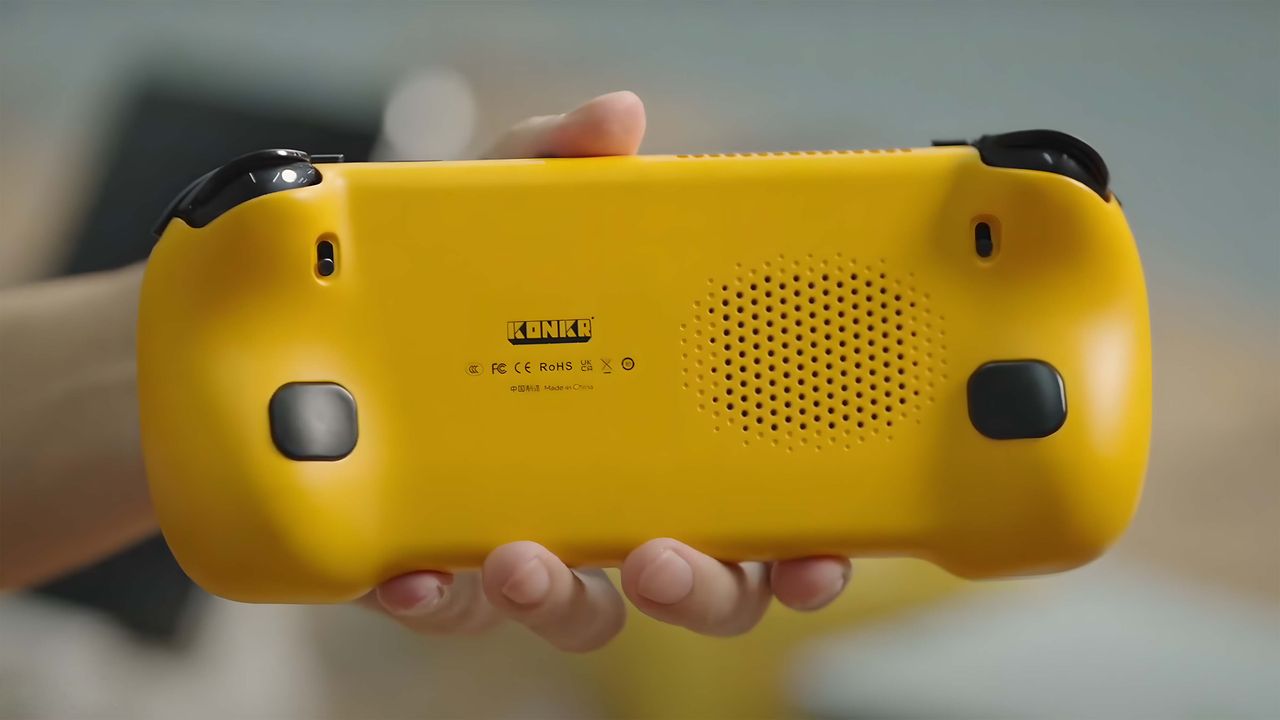
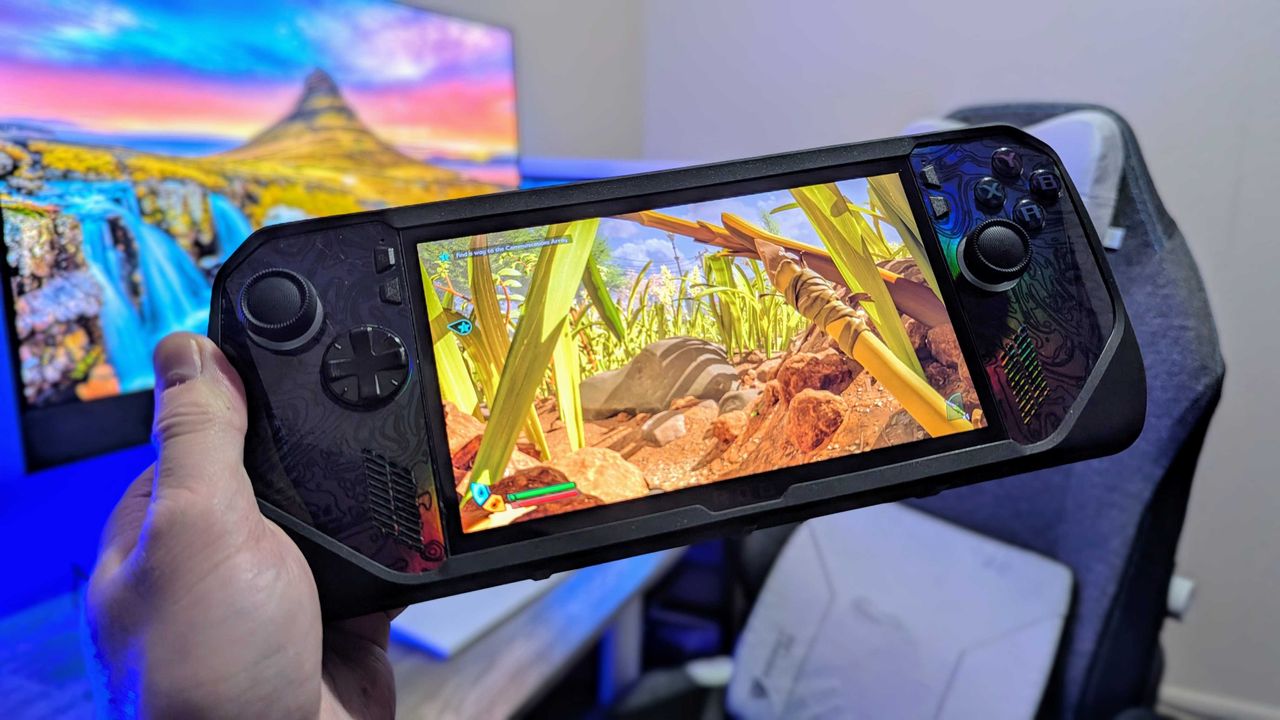


Découvrez notre test du mini PC Geekom IT15 équipé d’un Core Ultra 9 : design, connectique, performances, etc. Voici l'essentiel à savoir avant de vous décider.
The post Test Geekom IT15 : un mini PC redoutable avec un Intel Core Ultra 9 first appeared on IT-Connect.


Test du mini PC AceMagic Vista Mini V1 : performances, usages, points forts et limites de ce modèle compact, silencieux et économique.
The post Test AceMagic Vista Mini V1 : un mini PC économique à 149 euros first appeared on IT-Connect.
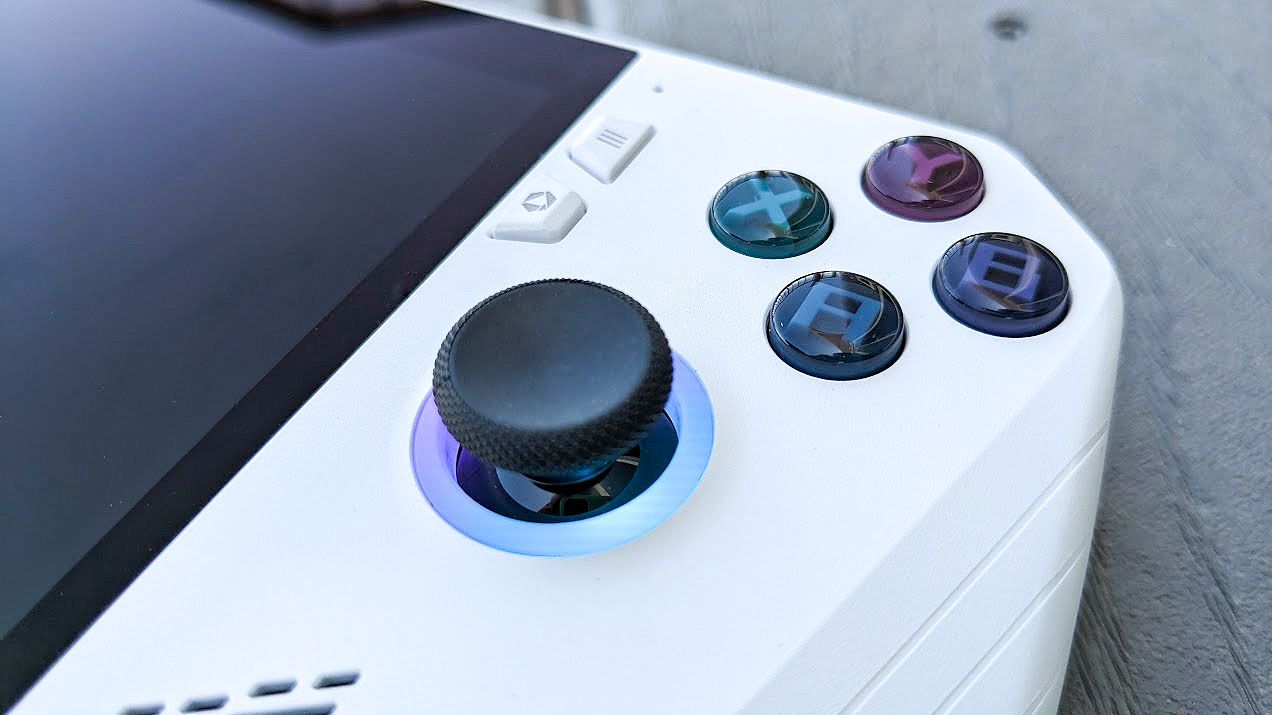
À l'occasion de l'événement Amazon Prime Day 2025, notre partenaire Geekom propose une remise de 15% sur plusieurs modèles de mini PC ! Découvrez les offres.
The post Prime Day : offrez-vous un mini PC Geekom grâce à cette remise de 15% first appeared on IT-Connect.
Découvrez notre test complet du mini PC Geekom A5, édition 2025, un modèle évolutif et polyvalent, proposé à moins de 350 euros.
The post Test Geekom A5 2025 Edition : un mini PC polyvalent à moins de 350 euros first appeared on IT-Connect.
Le mini PC Geekom IT13 2025 Edition bénéficie d'une réduction de 15% grâce à ce code promo exclusif, soit une remise pouvant atteindre 119 euros.
The post Bon plan – 15% de réduction sur le mini PC Geekom IT13 Édition 2025 avec un Intel Core i9 first appeared on IT-Connect.
The Beelink ME Mini NAS is a compact, six-slot network-attached storage solution aimed squarely at home users seeking a quiet, efficient, and flexible storage platform without the cost or complexity of traditional full-size NAS systems. Measuring just 99mm in each dimension and built with a minimalist cube design, the unit is designed to blend into home environments such as living rooms, bedrooms, or home offices. At its core is the Intel Twin Lake N150 processor, a 4-core, 4-thread CPU with a 6W TDP and a burst clock of up to 3.6GHz, paired with 12GB of soldered LPDDR5 4800MHz memory. This combination targets scenarios such as home media streaming, light file serving, or soft routing, rather than heavy enterprise workloads.
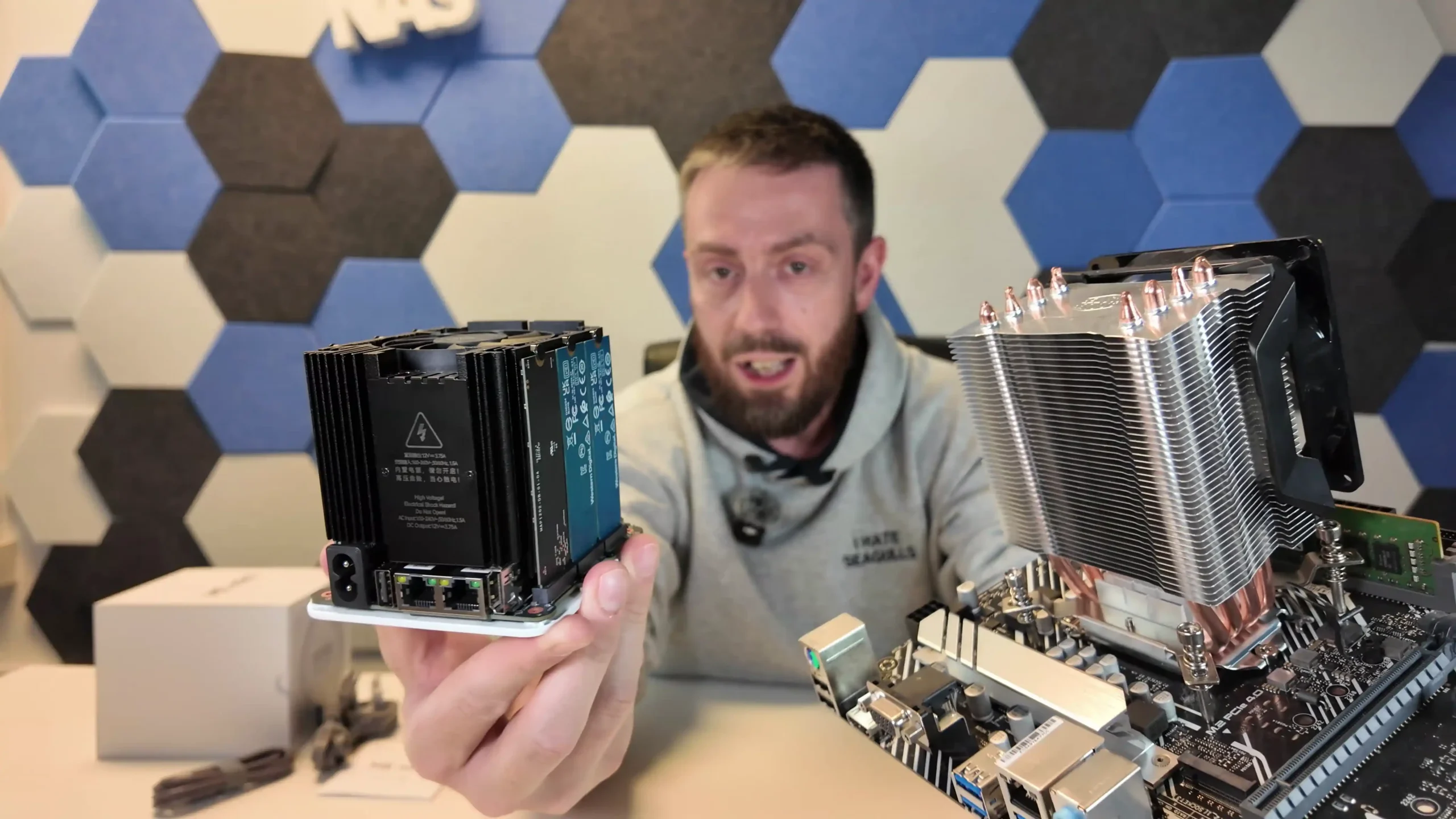
The ME Mini supports six M.2 2280 SSD slots, delivering a maximum theoretical storage capacity of 24TB. This includes one Gen 3 x2 slot (designed for the OS) and five Gen 3 x1 slots for storage expansion.
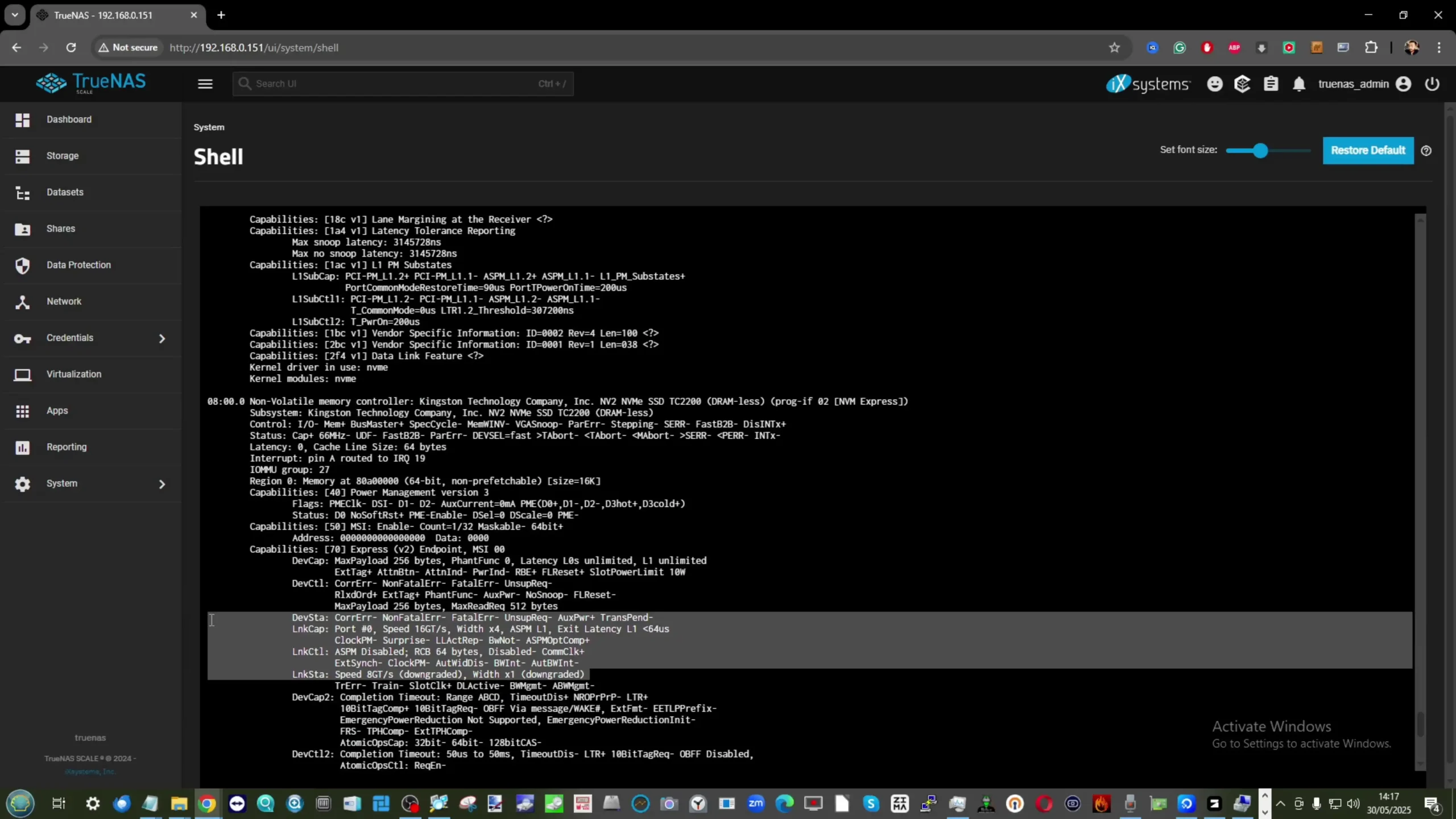 |
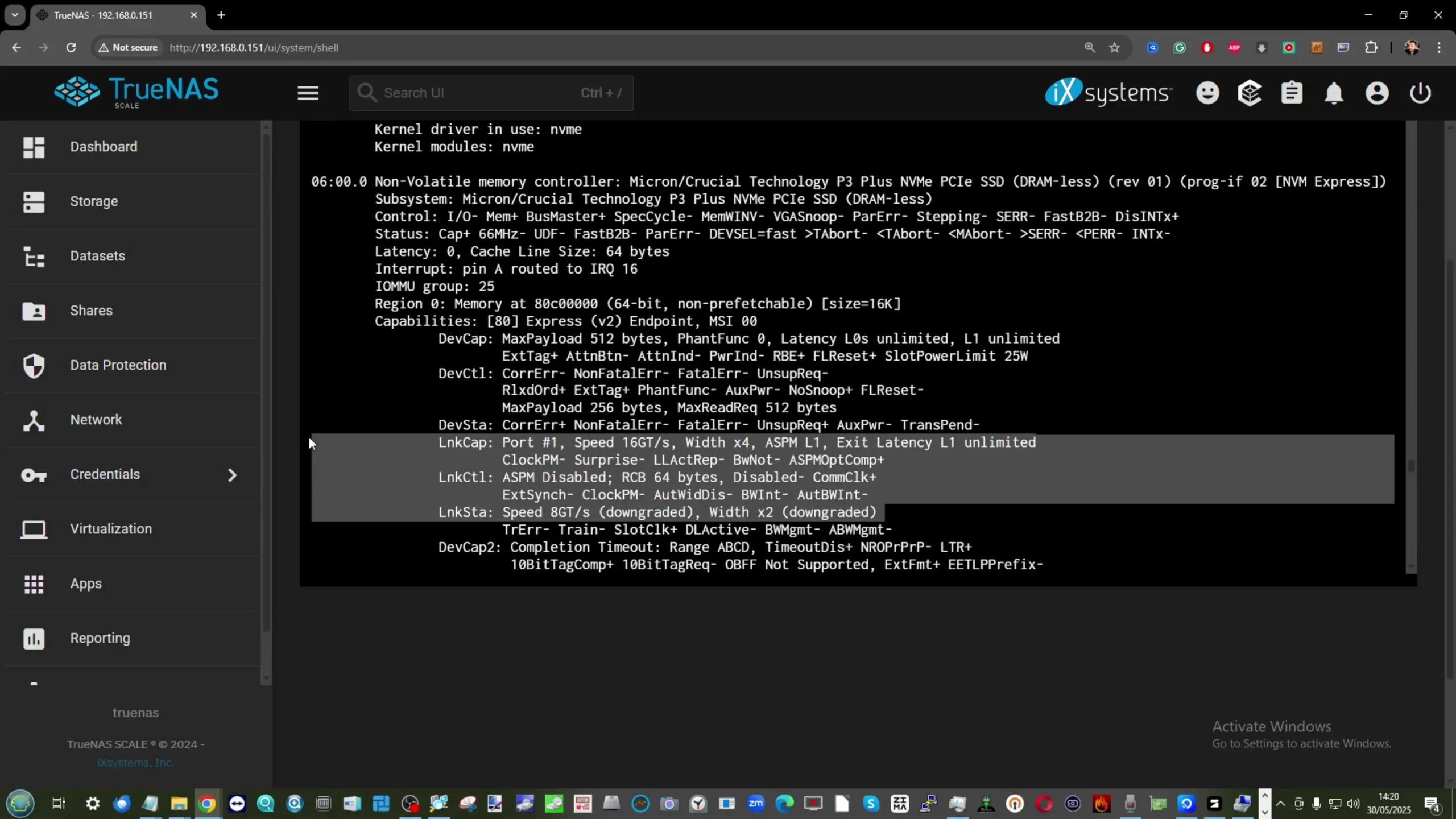 |
These SSD slots are actively cooled via an integrated heatsink and top-mounted silent fan, with thermal pads pre-attached for single-sided SSDs. Network connectivity includes dual Intel i226-V 2.5GbE ports and Wi-Fi 6 via an M.2 AX101 module, offering options for wired link aggregation or wireless deployment. Designed to support operating systems such as Unraid, OpenMediaVault, and TrueNAS, the ME Mini provides sufficient hardware for media servers like Plex or Jellyfin, personal backup, or even entry-level virtualization tasks. With a built-in power supply and no reliance on bulky external adapters, the device prioritizes simplicity and space efficiency.
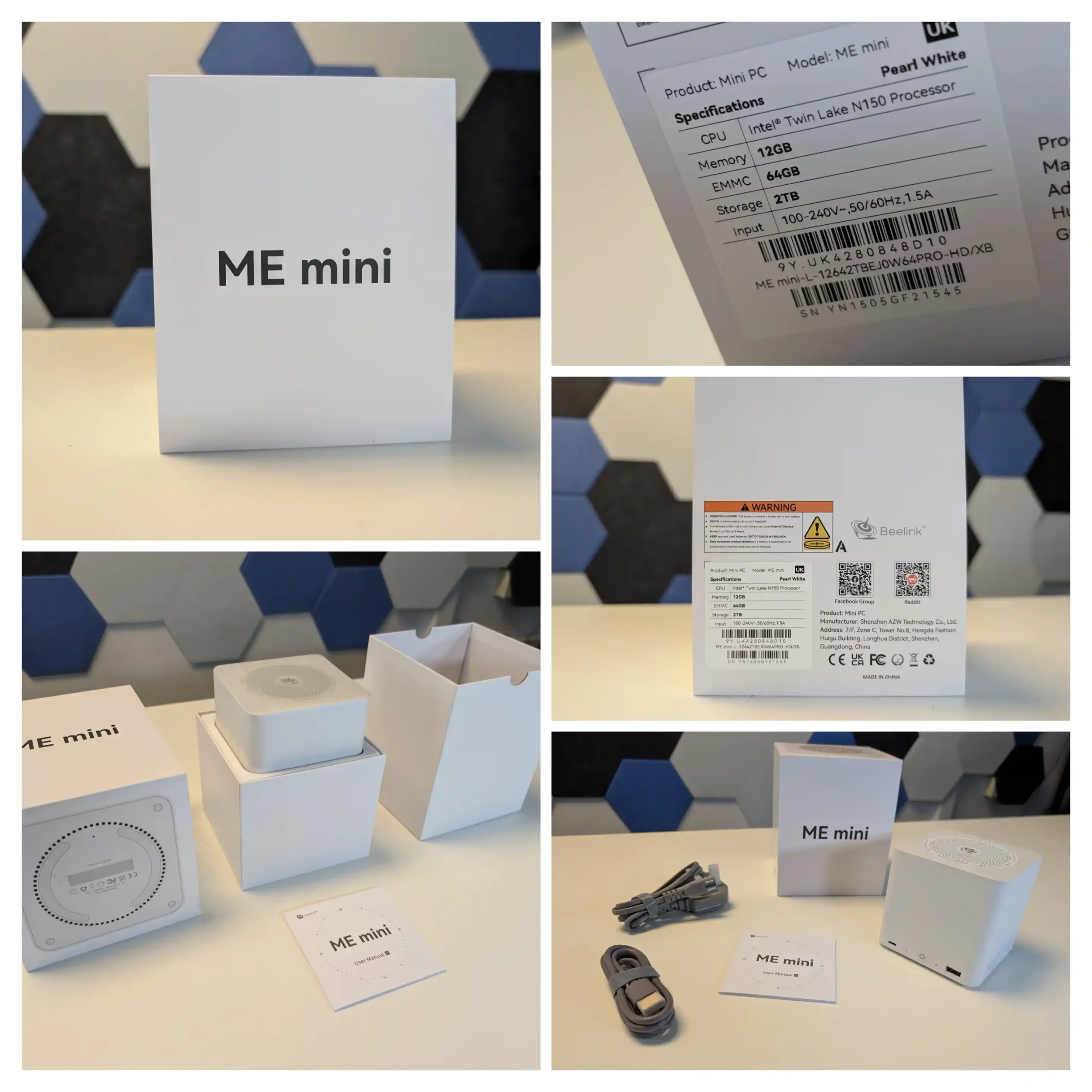
The Beelink ME Mini NAS stands out as a compact, energy-efficient, and well-balanced storage solution tailored for home users seeking quiet and capable performance without the complexity of larger NAS systems. With support for six M.2 NVMe SSDs—one at Gen 3 x2 and five at Gen 3 x1—it offers up to 24TB of storage in a 99mm cube form factor, complete with an internal power supply and silent fan-assisted cooling. Its Intel Twin Lake N150 CPU and 12GB of LPDDR5 memory provide enough processing headroom for tasks like 4K media streaming, personal backups, and soft routing, while dual 2.5GbE LAN ports and Wi-Fi 6 expand its deployment options. Though the fixed memory and limited PCIe bandwidth on most slots constrain scalability, the thermal efficiency, low power draw (as low as 6.9W idle), and reliable Crucial SSD options make it a compelling value proposition. It’s not aimed at high-performance or prosumer use, but for users building a quiet, tidy, and effective DIY NAS at home, the ME Mini delivers far more than its size suggests.
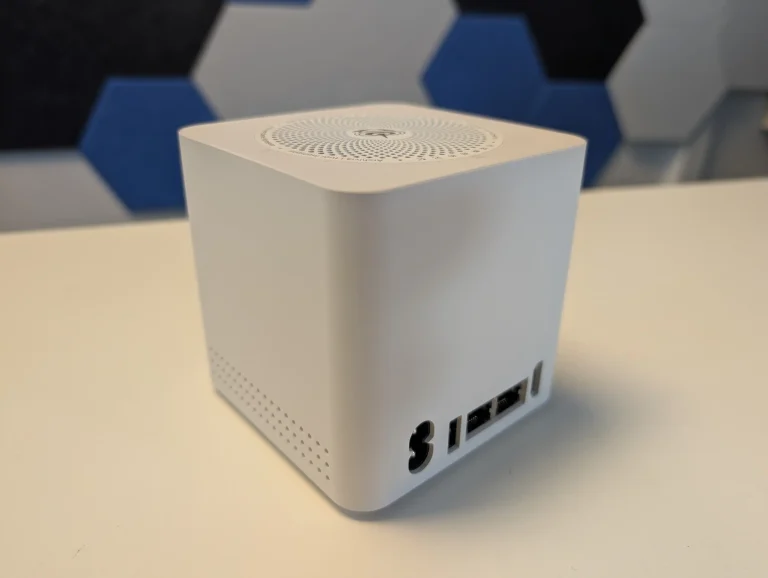

8.8
 Compact cube design (99x99x99mm) ideal for discreet home deployment
Compact cube design (99x99x99mm) ideal for discreet home deployment Supports up to 6x M.2 NVMe SSDs with total capacity up to 24TB
Supports up to 6x M.2 NVMe SSDs with total capacity up to 24TB Integrated PSU eliminates bulky external power adapters
Integrated PSU eliminates bulky external power adapters Dual 2.5GbE LAN ports with link aggregation support
Dual 2.5GbE LAN ports with link aggregation support Wi-Fi 6 and UnRAID7 Support means not limited to 2x2.5G
Wi-Fi 6 and UnRAID7 Support means not limited to 2x2.5G Low power consumption (as low as 6.9W idle, ~30W peak with full load)
Low power consumption (as low as 6.9W idle, ~30W peak with full load) Silent fan and effective internal thermal management via large heatsink
Silent fan and effective internal thermal management via large heatsink Includes Crucial-branded SSDs in pre-configured options for reliability
Includes Crucial-branded SSDs in pre-configured options for reliability
 Five of the six SSD slots are limited to PCIe Gen 3 x1 bandwidth
Five of the six SSD slots are limited to PCIe Gen 3 x1 bandwidth Memory is soldered and non-upgradable
Memory is soldered and non-upgradable Not 10GbE Upgradable (maybe m.2 adapter - messy)
Not 10GbE Upgradable (maybe m.2 adapter - messy) Bottom panel retains heat due to lack of active ventilation
Bottom panel retains heat due to lack of active ventilation
Where to Buy a Product





![]()
![]()

VISIT RETAILER ➤






![]()
![]()

VISIT RETAILER ➤
|
Check Amazon in Your Region for the Beelink ME Mini NAS ($329 4/6) |
Check AliExpress for the Beelink ME Mini NAS ($344 4/6) |
Check the Official Beelink Site for the ME Mini NAS ($209 4/6) |
Visually, the Beelink ME Mini sets itself apart from other mini NAS systems with its symmetrical cube-shaped design, measuring 99x99x99mm. Available in three color variants—Pearl White, Midnight Grey, and Peacock Blue—the device adopts a subtle, neutral aesthetic intended to fit into typical home environments without drawing unnecessary attention. The enclosure features rubber feet for vertical stability and ventilation grilles located at both the top and bottom, supporting a passive vertical airflow design that assists with heat dissipation.
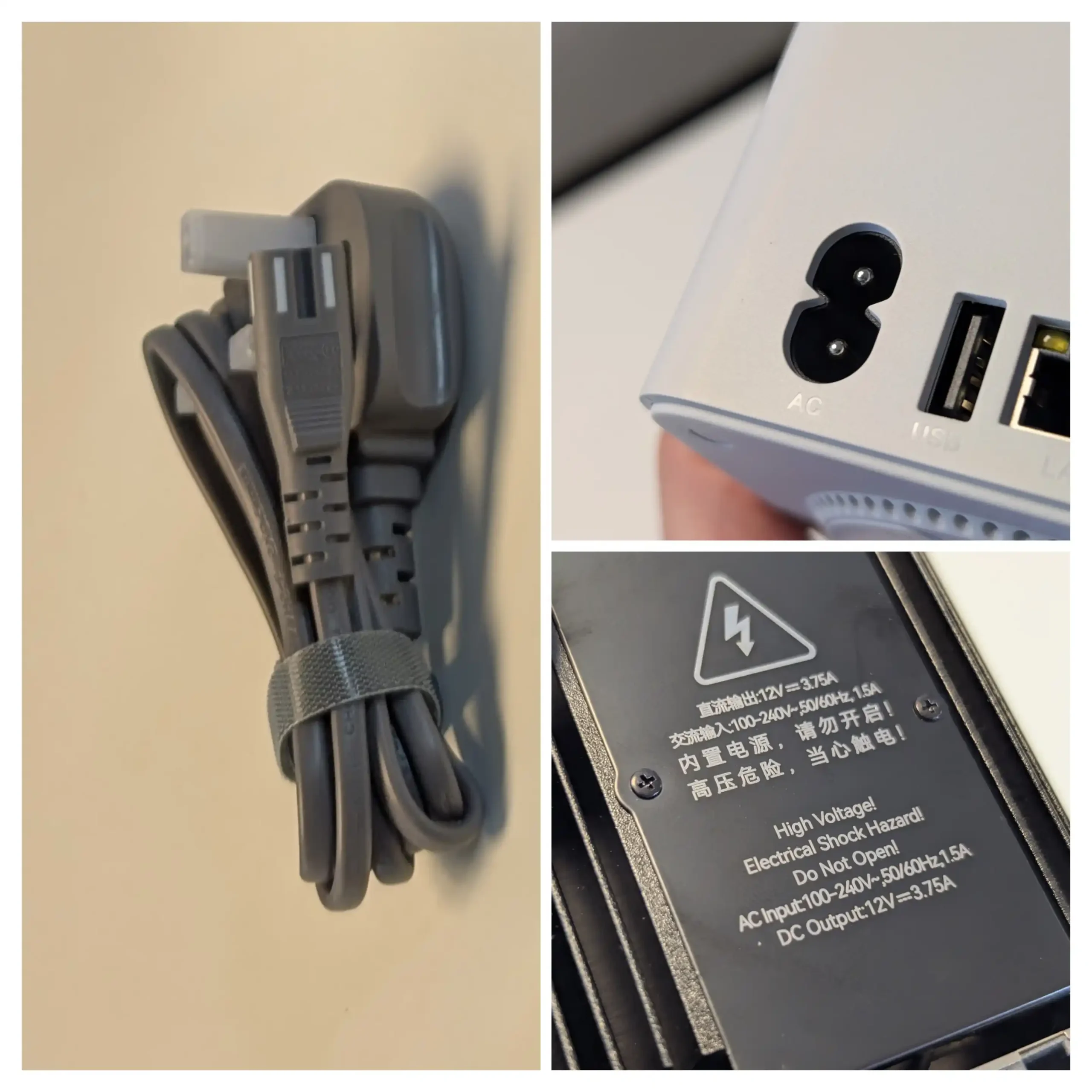
Despite its small footprint, the chassis houses an integrated power supply unit (PSU), which eliminates the need for bulky external power bricks and simplifies cable management—an uncommon but notable design feature in NAS devices of this size.
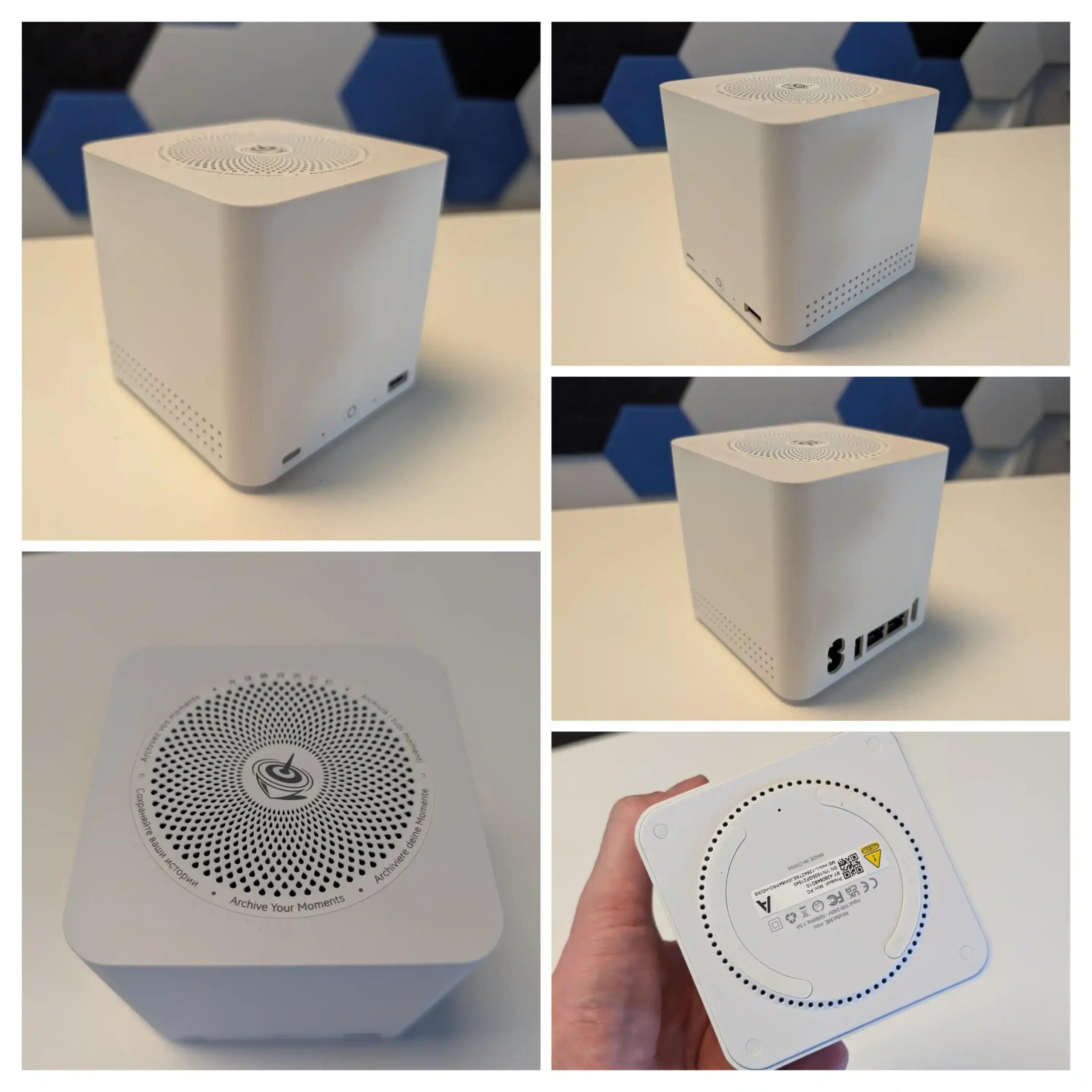
Storage capacity is a central feature of the ME Mini, with support for up to six M.2 SSDs in 2280 format, totaling a maximum of 24TB. These slots are all positioned internally in a dual-sided configuration—three on each internal face—and interface via PCIe Gen 3. Five of the slots operate at Gen 3 x1 bandwidth, while one (typically slot 4) operates at Gen 3 x2, recommended for installing the OS. The use of M.2 NVMe SSDs enables dense storage with minimal thermal output compared to 3.5” drives, which aligns with the ME Mini’s aim of delivering high-capacity, low-noise storage for homes. There is also a 64GB eMMC module included by default, recommended for lightweight OS installations or router-based platforms.
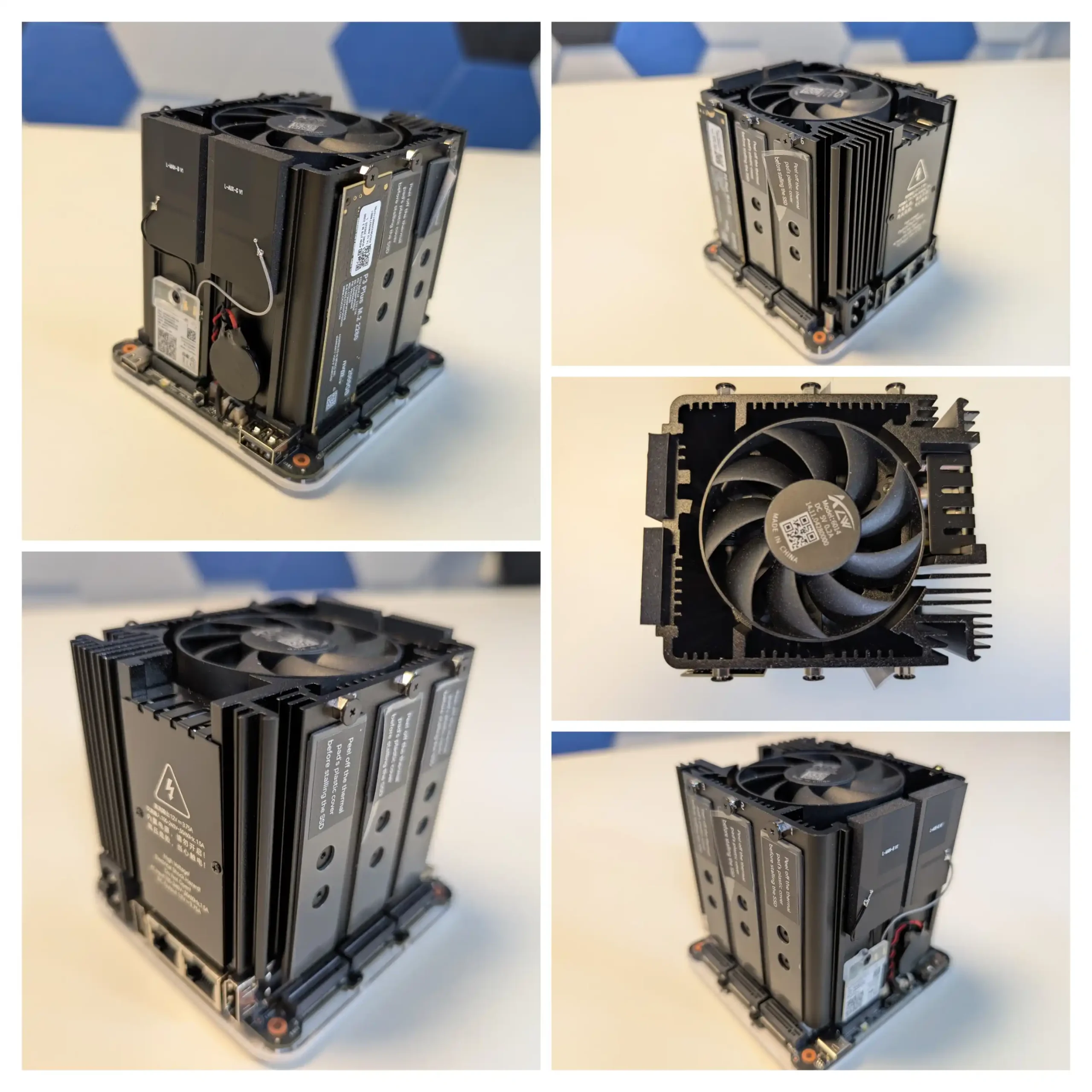
Internally, the layout is deliberately engineered to optimize thermal contact between the SSDs and the large aluminum heatsink at the center of the chassis. Each M.2 SSD slot is lined with a pre-applied thermal pad to ensure direct contact with the heatsink, enhancing passive cooling performance. This configuration is most effective with single-sided SSDs, though there is still clearance for some double-sided modules.
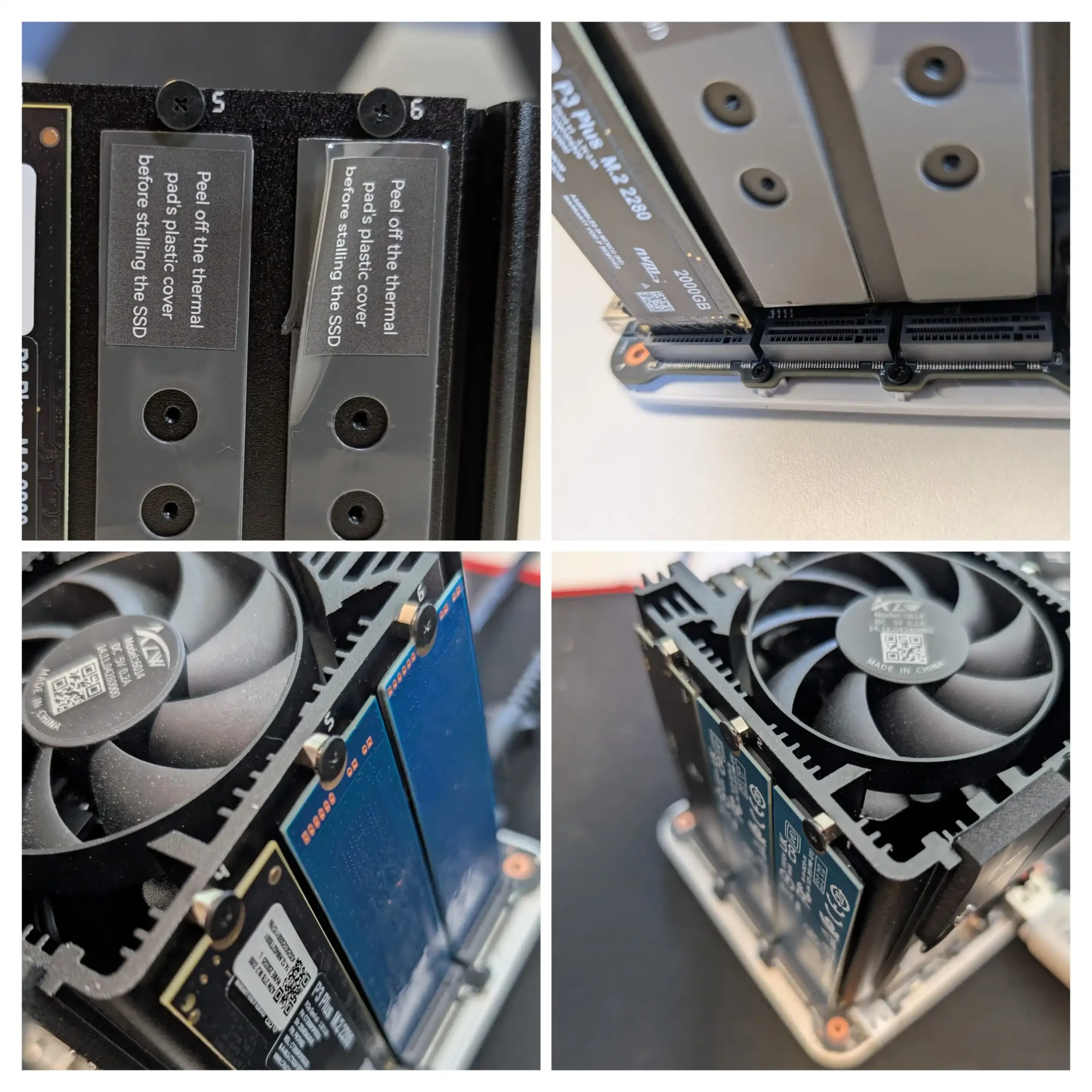
The passive heat management is further augmented by a silent fan located at the top, which provides active airflow without introducing noticeable noise—recorded at just 31–34 dBA during idle operation and up to 40 dBA under heavy load.
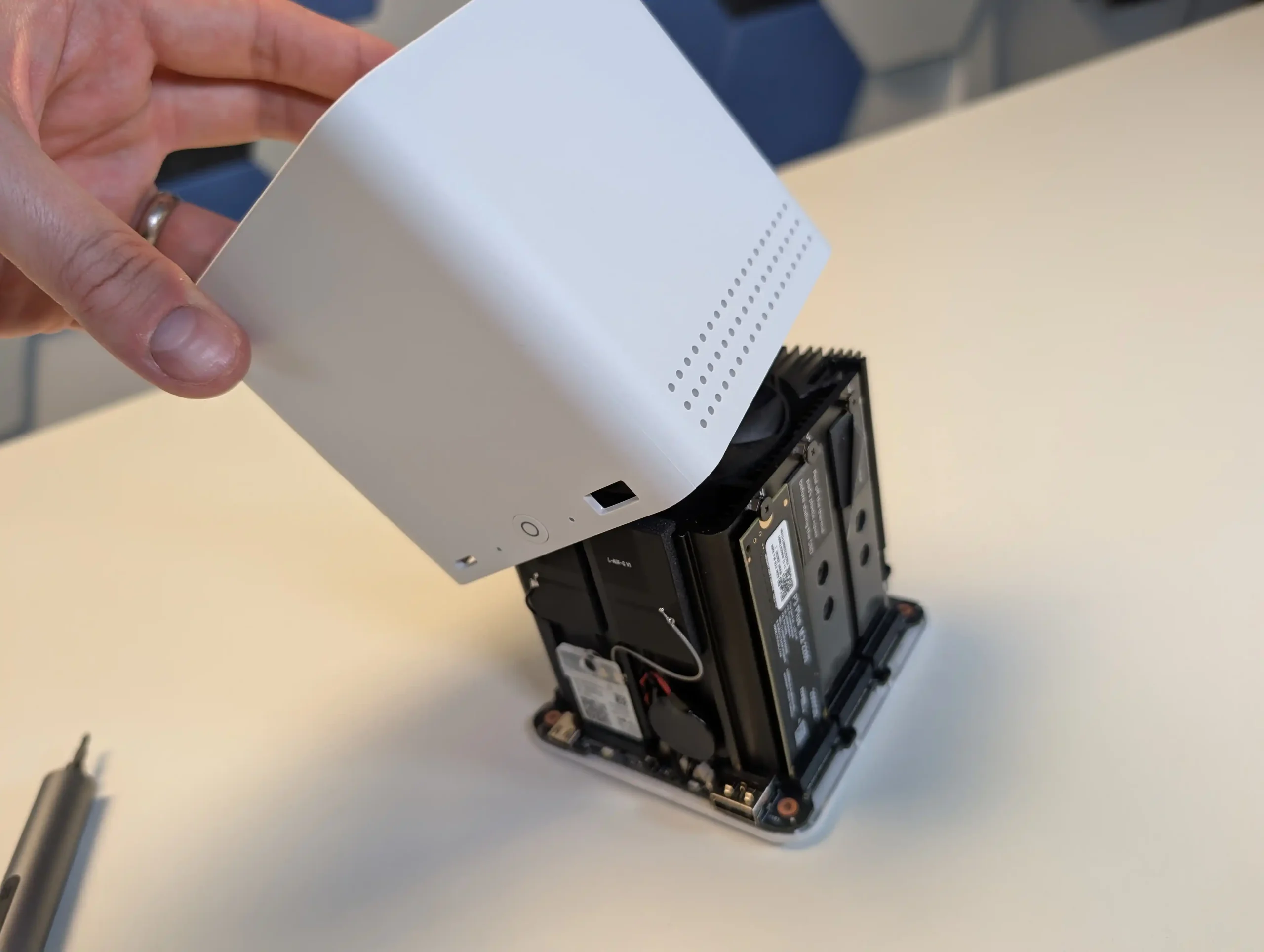
The ME Mini’s storage design is not intended for hot-swapping or tool-less drive changes, a reflection of its focus on home and small office environments where drives are installed once and left in place. While this may limit flexibility for enterprise workflows, it benefits reliability and aesthetics, especially considering the internal PSU, which would otherwise be challenged by fluctuating thermal loads from frequent disk changes.
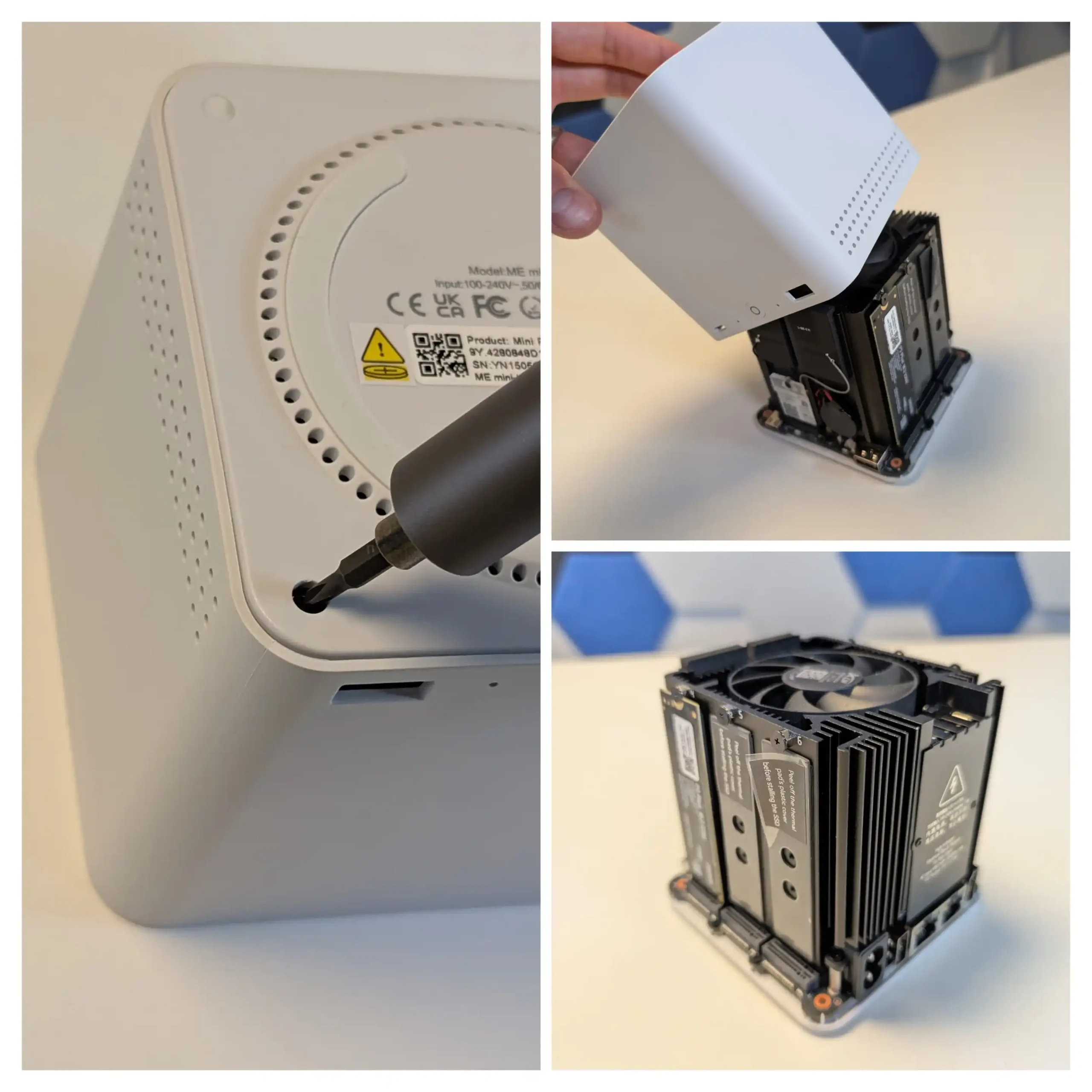
The result is a closed, compact system that maximizes storage density while maintaining a fanless aesthetic from the exterior.
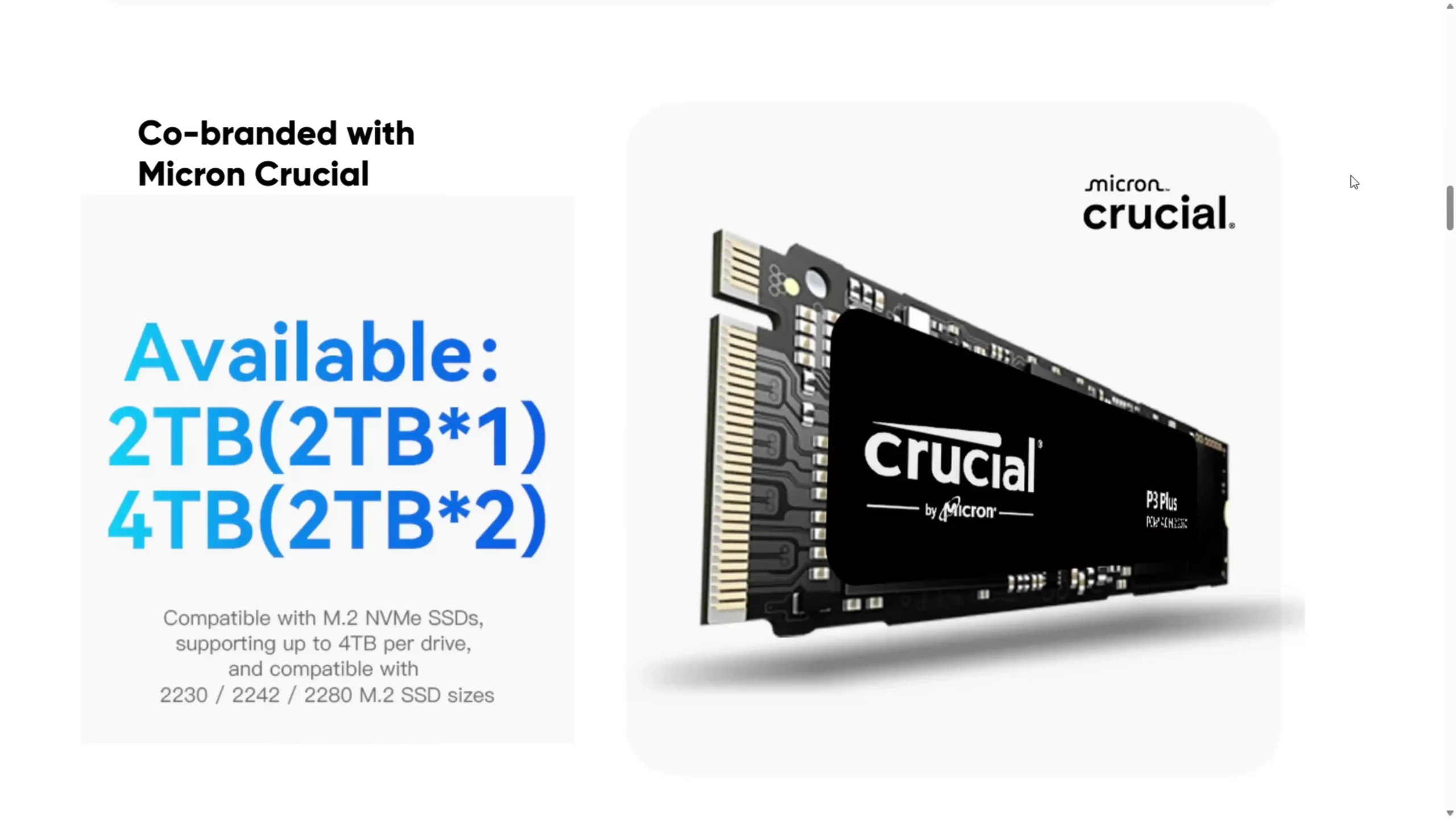
For users opting for pre-configured models, Beelink offers bundles that include Crucial P3 SSDs—either one 2TB unit or two 2TB units—depending on the chosen configuration. This co-branding with Crucial ensures a known level of SSD endurance and performance, contrasting favorably with many competing budget NAS options which often use generic or unverified storage media. The factory pairing also ensures that one of the SSDs is installed in the Gen 3 x2 slot, delivering better system responsiveness and transfer speeds for OS-hosted operations such as Plex metadata handling, RAID cache, or VM images.
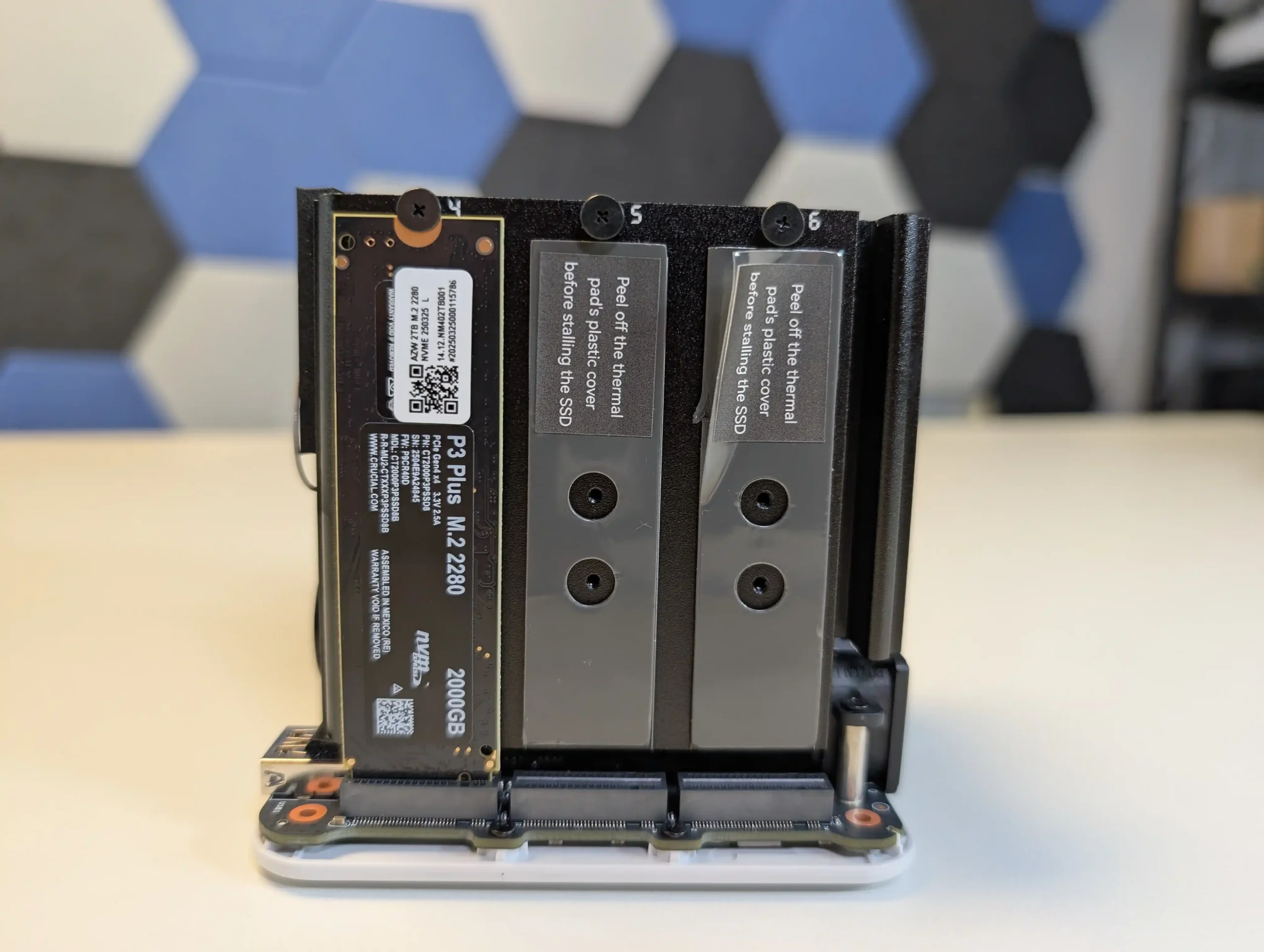
The internal hardware of the Beelink ME Mini centers around the Intel Twin Lake N150 processor, a 4-core, 4-thread chip based on Intel’s 10nm architecture. With a base TDP of 6W and burst frequency of up to 3.6GHz, it is positioned as a power-efficient solution for NAS tasks that include multimedia playback, basic file sharing, and light application hosting.
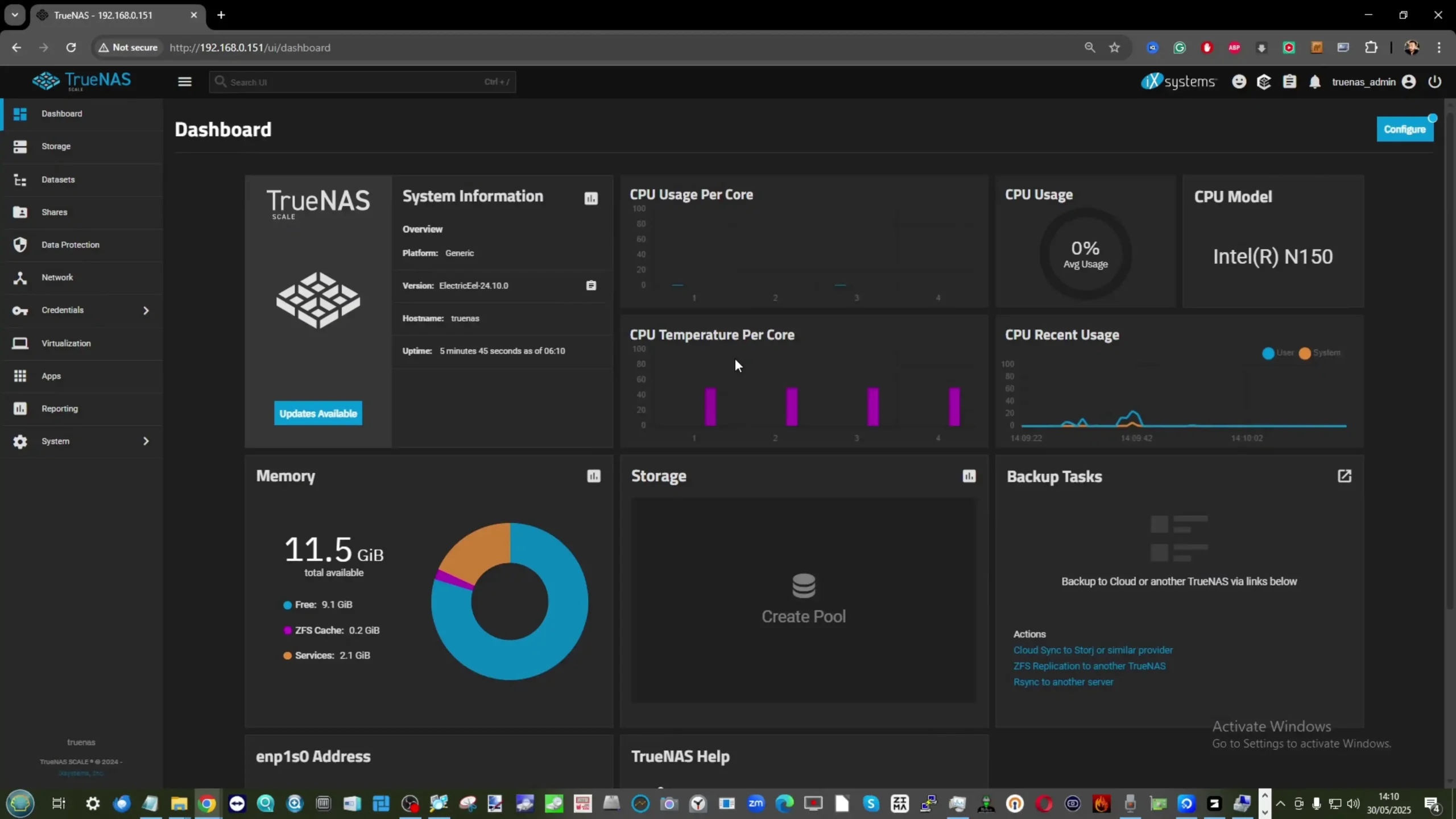
While it does not support hardware transcoding at the same level as higher-tier Intel core chips with Quick Sync, the N150 performs adequately for 4K playback in Plex and other media servers when transcoding is avoided. In real-world use, the CPU averaged 60–75% utilization during simultaneous dual 2.5GbE access and SSD activity, indicating a solid baseline for single-user or family scenarios.
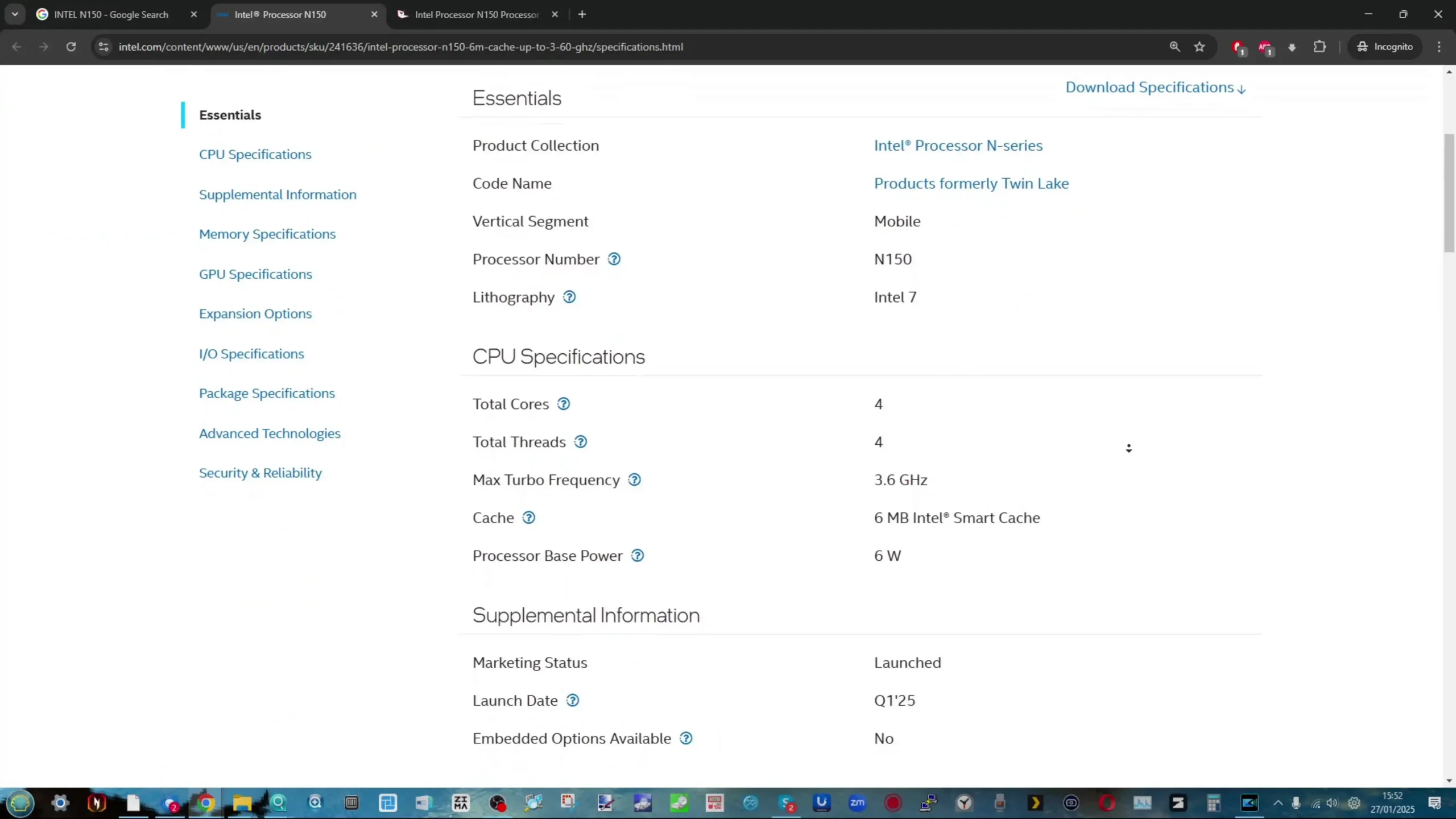
Complementing the CPU is 12GB of LPDDR5 memory, soldered directly to the board and clocked at 4800MHz. While the memory is non-upgradable, the capacity is sufficient for running lightweight NAS OS environments, containers, or even some virtual machines.
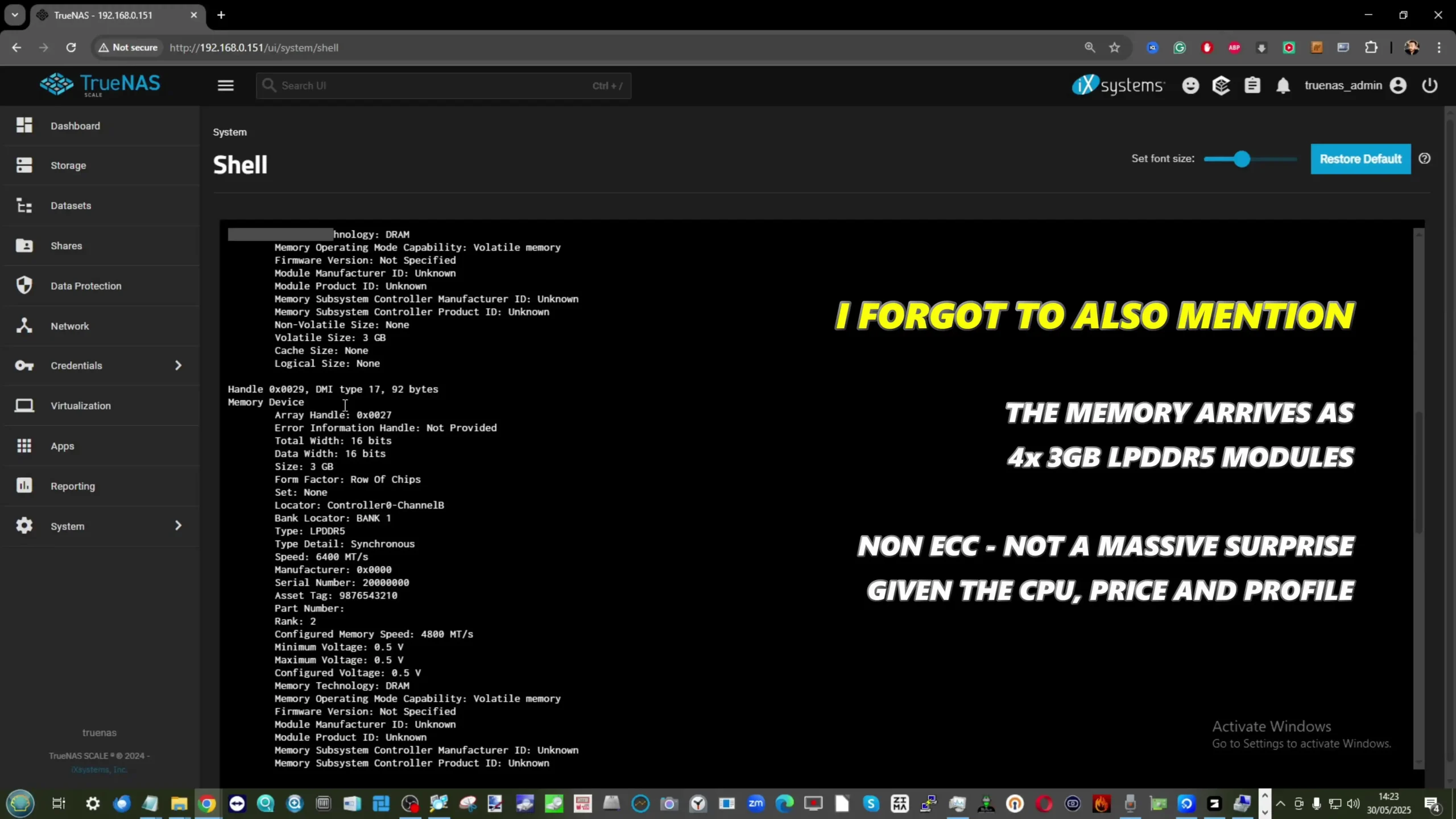
Unlike most mini PCs that cap out at 8GB in similar thermal envelopes, Beelink’s decision to include 12GB offers a practical boost for users running multiple services, such as a media server alongside a VPN container or light file indexing applications. The absence of SO-DIMM slots means this cannot be expanded further, which may deter power users seeking a more scalable system, but the default capacity fits the ME Mini’s home-use intentions well.
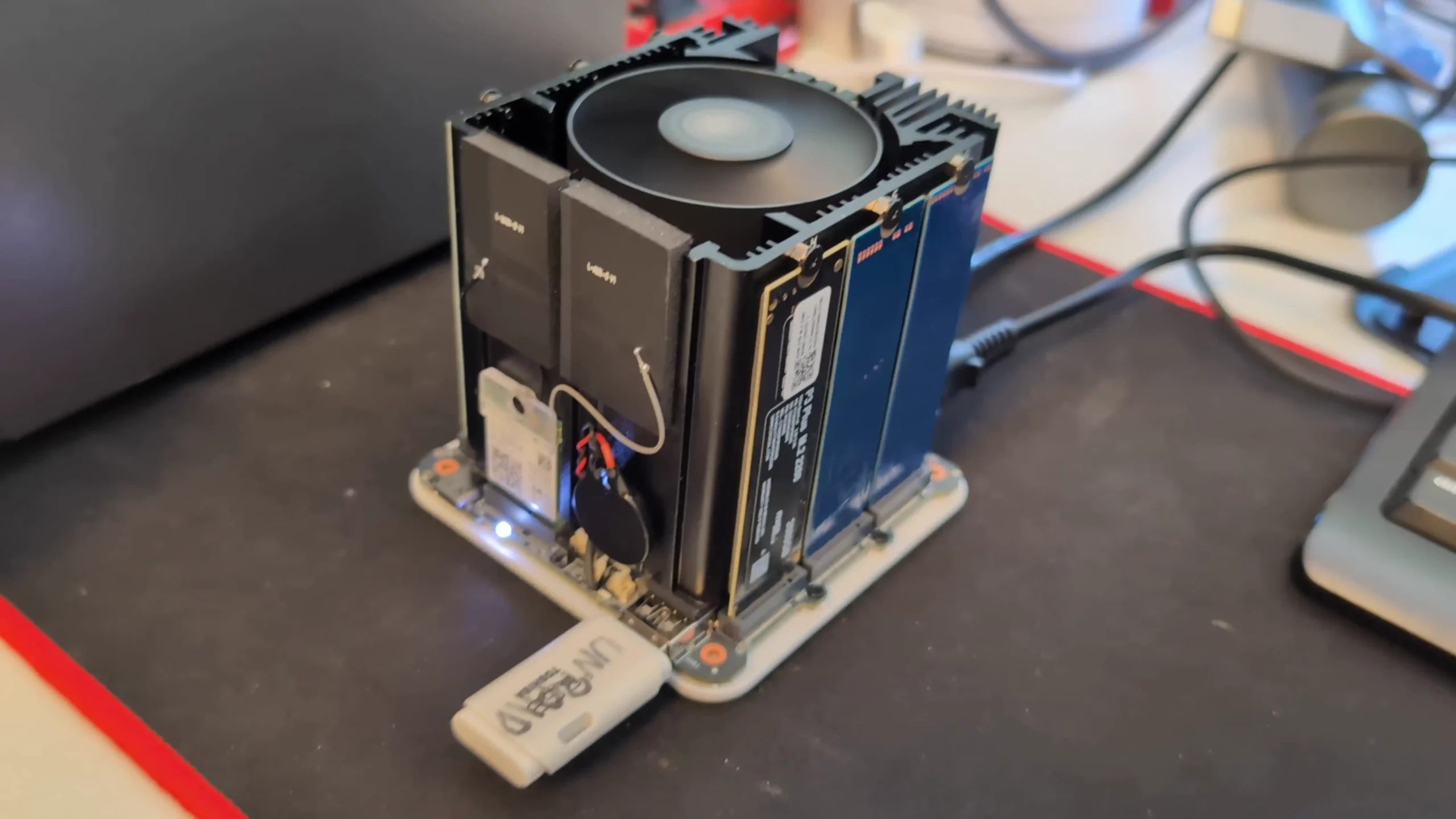
The overall thermal design pairs the CPU and SSDs with a centrally-mounted metal heatsink that acts as both a structural element and a cooling component. The silent fan located above the heatsink assists with vertical airflow, helping to maintain internal component temperatures during prolonged operation. During extended thermal tests—such as 24-hour idle and active file transfer sessions—surface temperatures peaked between 48°C and 60°C, particularly at the base where the PSU and networking ports reside.
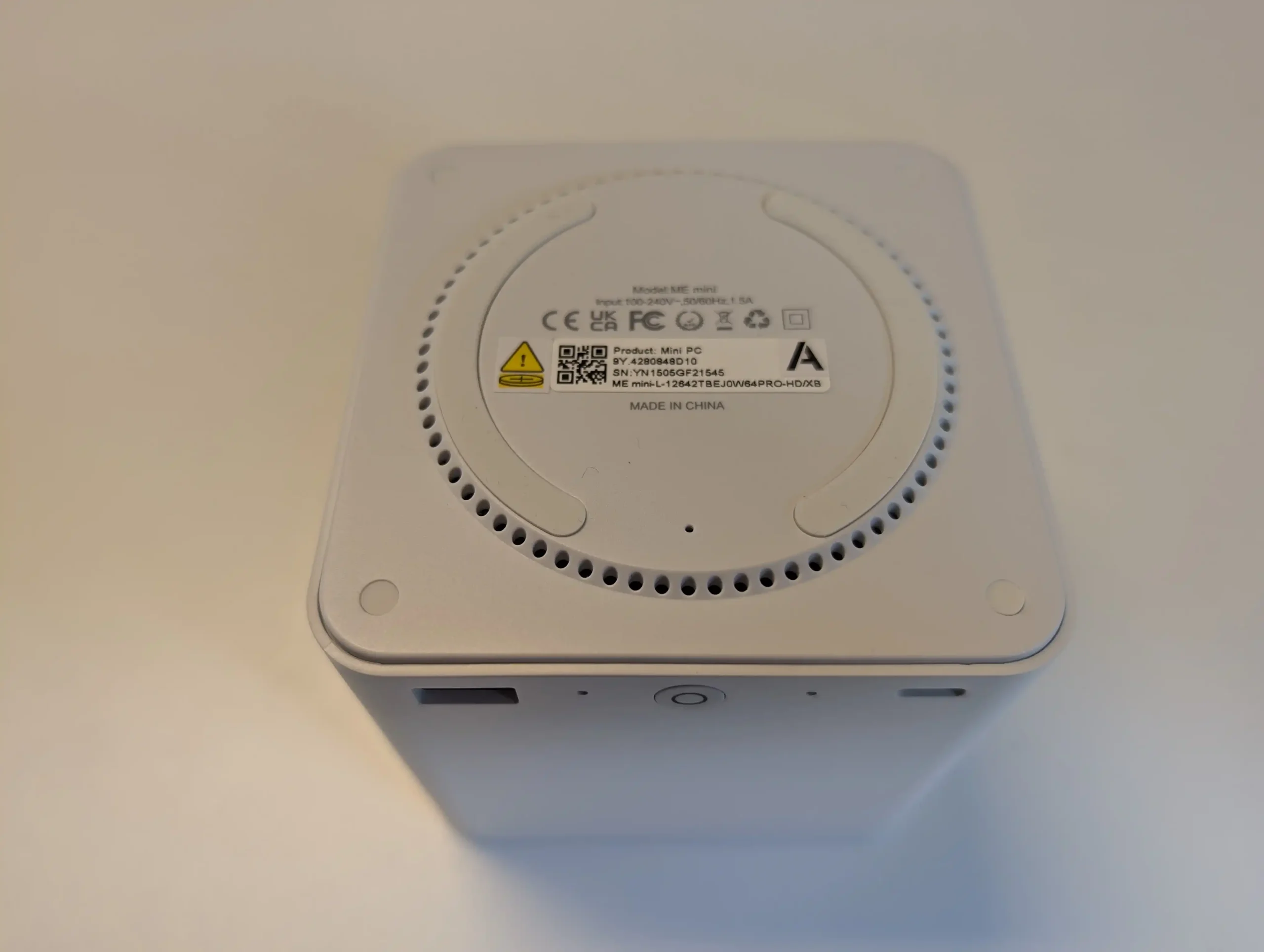
While the design keeps the main components within reasonable thermal ranges, there is a potential thermal buildup at the bottom under sustained load, suggesting an optional future design revision could include a base fan.
| Component | Specification |
|---|---|
| CPU | Intel Twin Lake N150, 4C/4T, 3.6GHz burst, 6W TDP |
| Memory | 12GB LPDDR5 (4800MHz, soldered, non-upgradable) |
| eMMC Storage | 64GB onboard |
| M.2 Storage | 6x M.2 2280 slots: 1x PCIe Gen 3 x2 (OS Recommended), 5x PCIe Gen 3 x1 |
| Cooling | Large internal heatsink + top-mounted silent fan |
| Thermals (avg) | 46–51°C top panel / 54–60°C bottom panel (under continuous load) |
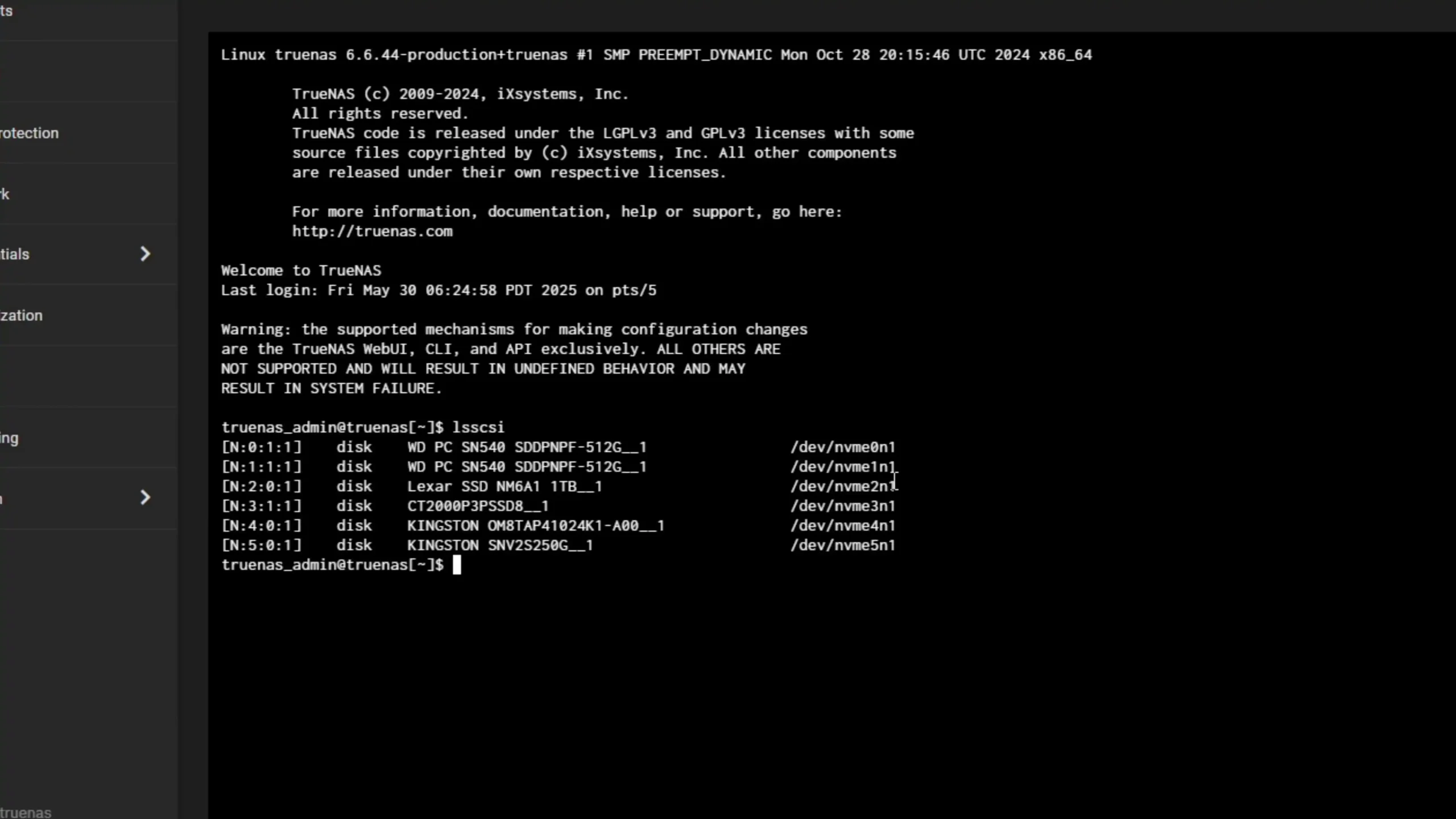
Despite its compact dimensions, the Beelink ME Mini includes a wide array of ports suited for both networking and peripheral connectivity. On the networking side, the unit features two 2.5GbE LAN ports (Intel i226-V), located at the rear, which support link aggregation or failover configurations. These enable transfer rates well above standard gigabit networking, although in practice, real-world throughput tends to be limited by SSD performance or PCIe lane constraints. During bandwidth testing, combined throughput between the LAN ports peaked around 580–600MB/s easily.
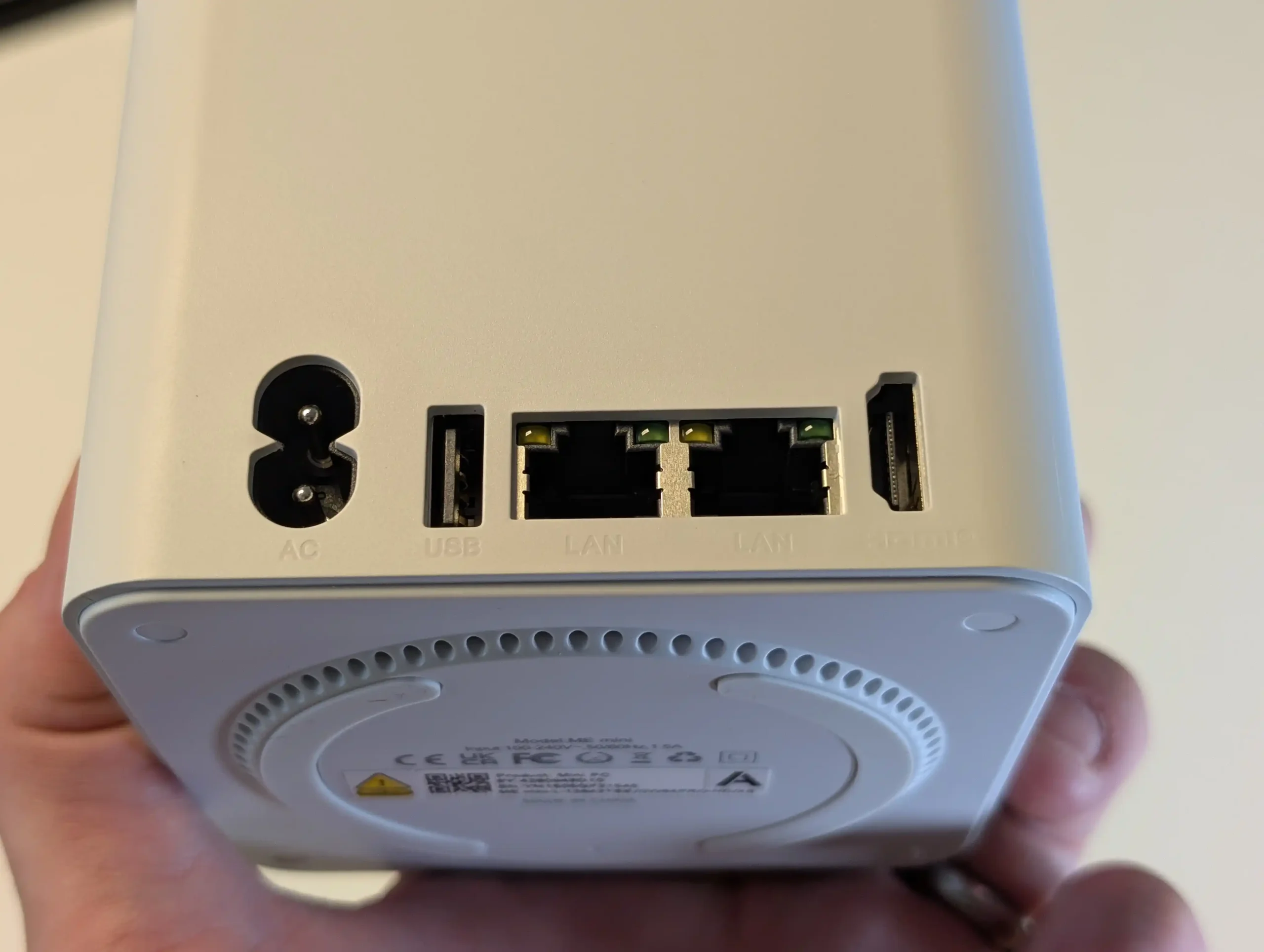
As much as many of us would want 10GbE – at this scale of CPU/Lanes, Price and just HEAT – I can understand why its absent here. That said, I do want to mention that the system includes onboard Wi-Fi 6 (via Intel AX101 module) and Bluetooth 5.2, expanding its use cases to wireless media streaming, mobile backups, and wireless NAS deployment without consuming physical LAN ports. More importantly though, UnRAID recently announced that in their latest update, you can now use wireless adapters (see below) – which, alongside UnRAID’s lightweight ‘on RAM’ deployment, makes it bloody IDEAL for using on the Beelink ME Mini
In terms of USB connectivity, the ME Mini provides a balanced selection across both older and high-speed standards. The rear I/O panel houses a USB 2.0 port (480 Mbps), while the front features one USB 3.2 Gen 2 port (10Gbps) and a USB Type-C port (also 10Gbps). This offers sufficient bandwidth for attaching external storage, keyboard/mouse input for system setup, or USB-based backup devices. While a higher count of USB 3.0+ ports might have benefitted users with multiple external drives, the available ports are positioned logically and suit the intended home-focused workflows.
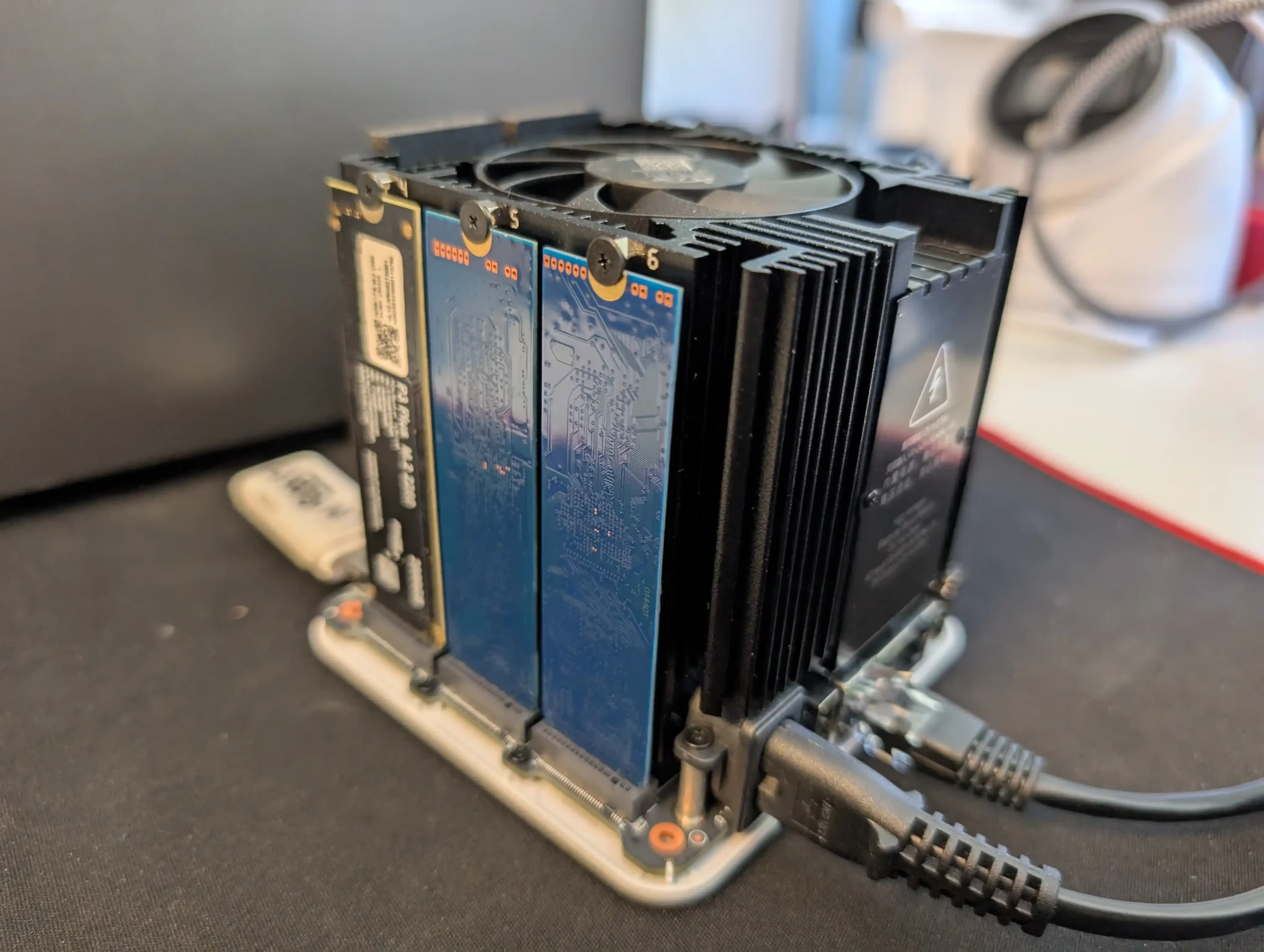
Display output is provided via a single HDMI port located on the rear, which supports resolutions up to 4K at 60Hz. Although display output isn’t central to most NAS workflows, this port enables users to connect the system to a monitor or TV for initial OS installation, dashboard display, or media playback when used with platforms like LibreELEC or Kodi.
However, as noted during hands-on testing, functionality via HDMI may vary depending on the operating system installed—some headless NAS platforms may not fully support graphical output. Nevertheless, for users experimenting with hybrid HTPC/NAS setups or running Linux-based OS variants with a GUI, the HDMI port remains a useful inclusion.
| Port Type | Specification |
|---|---|
| LAN Ports | 2 x 2.5GbE (Intel i226-V) |
| Wi-Fi | Wi-Fi 6 (Intel AX101, M.2 module) |
| Bluetooth | Bluetooth 5.2 |
| USB Ports | 1 x USB 2.0 (rear), 1 x USB 3.2 Gen 2 (front), 1 x USB Type-C 10Gbps (front) |
| HDMI | 1 x HDMI 2.0 (Max 4K @ 60Hz) |
| Power Supply | Internal PSU with 100–240V AC input |
In testing, the Beelink ME Mini demonstrated respectable throughput for a system of its class, especially when factoring in its compact size, low power draw, and passively biased thermal design. Using Unraid and TrueNAS Core for performance benchmarking, sequential read and write speeds from the five PCIe Gen 3 x1 slots averaged around 740MB/s read and 544MB/s write under repeated 1GB test files. These numbers are typical for Gen 3 x1 lanes and reflect near-maximum lane saturation, suggesting minimal internal throttling under standard conditions. The Gen 3 x2 slot, intended for the operating system, provided higher performance—averaging 1.1GB/s read and approximately 960MB/s write when paired with the bundled Crucial P3 SSD.
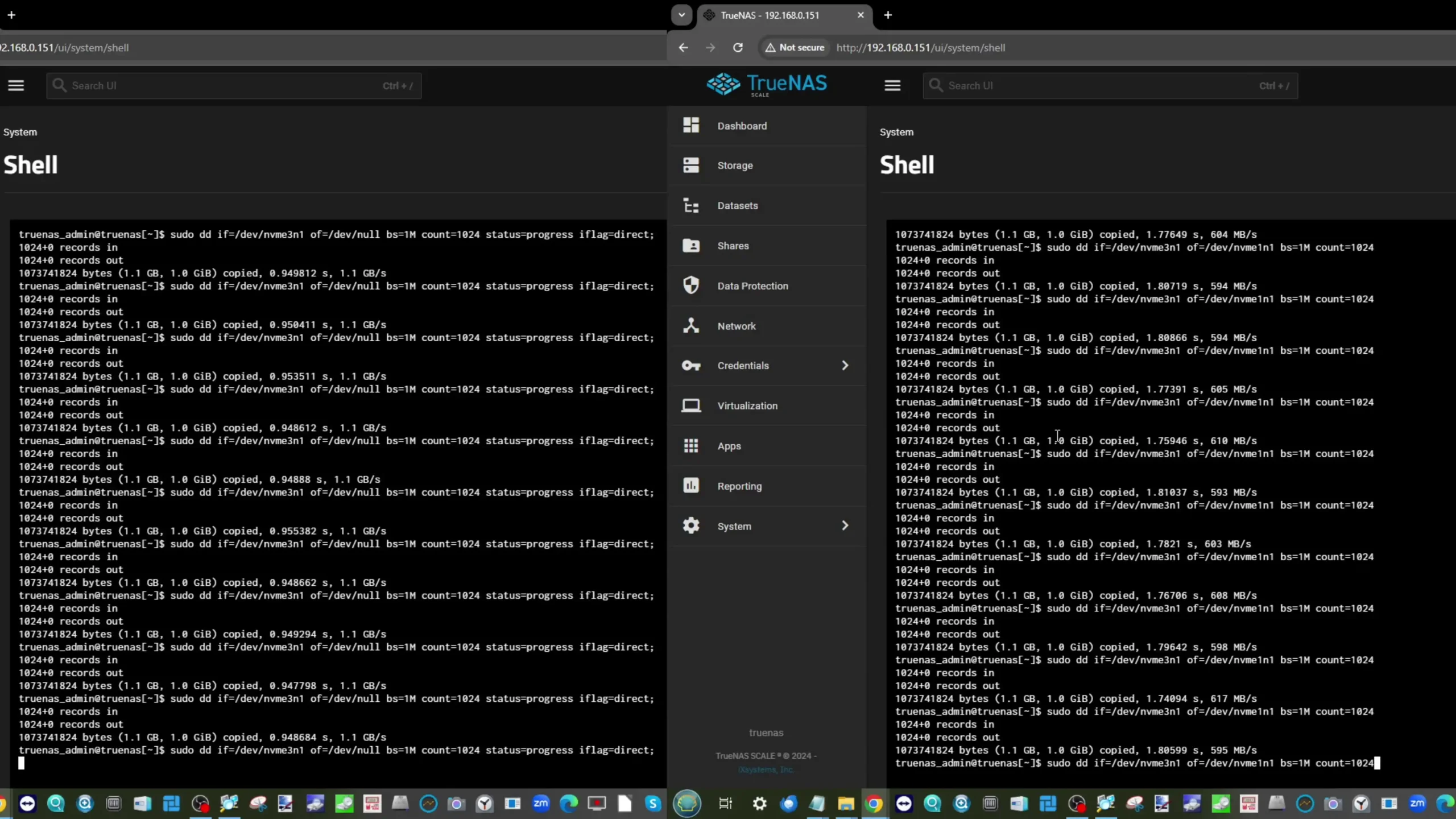
Transfer speeds between SSDs installed in Gen 3 x1 and Gen 3 x2 slots were tested in both directions and maintained averages of around 590–600MB/s. These figures reflect the limitations of internal bandwidth allocation rather than SSD performance. Even so, for most home NAS scenarios such as 4K media playback, multi-user access to stored documents, or photo libraries, the bandwidth is more than sufficient. It’s worth noting that SSD cooling remained effective during prolonged access, with only modest thermal variation even under full-speed transfers across all six drives.
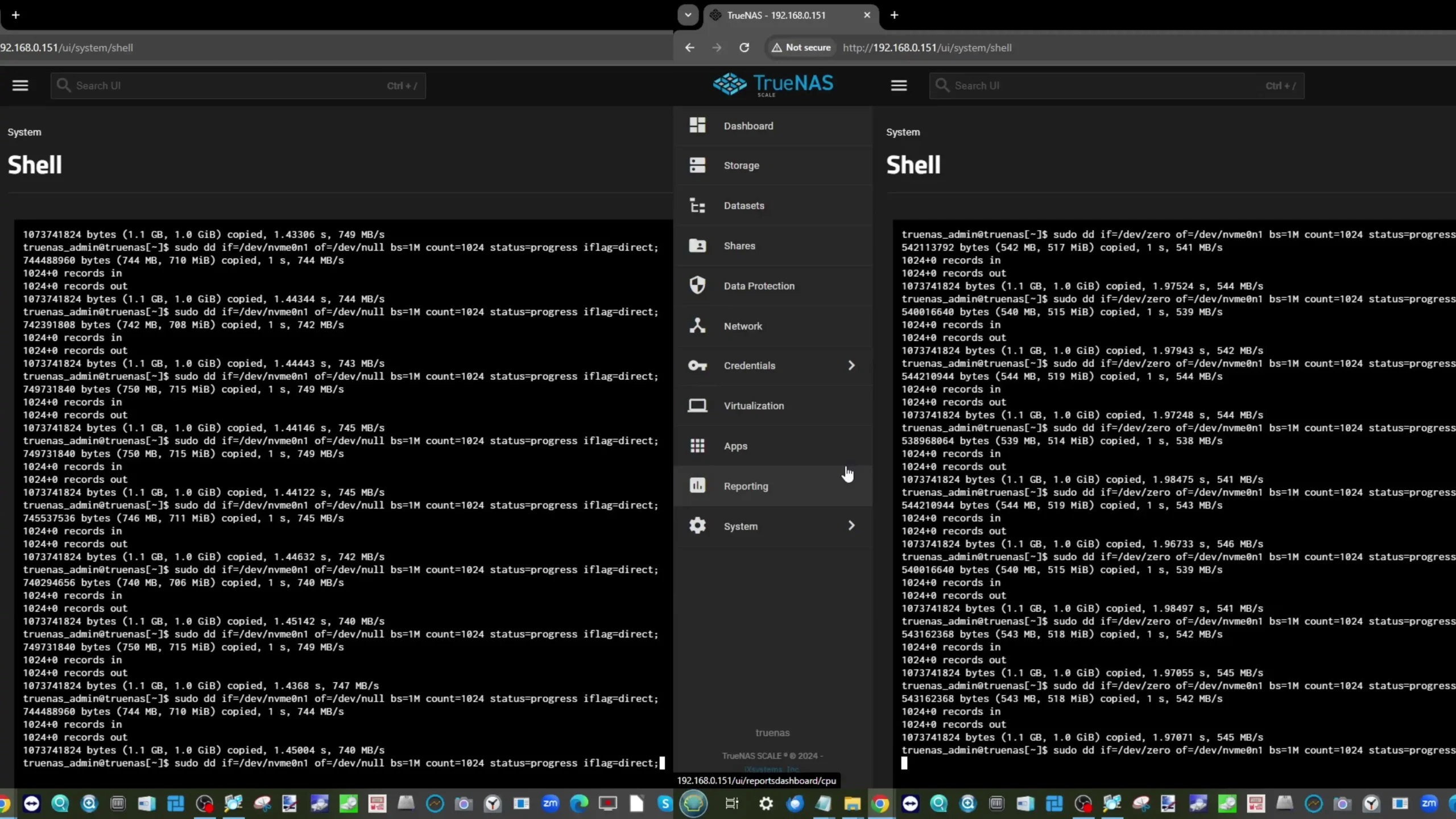
Thermal behavior during sustained load was closely monitored using a HIKMICRO thermal imaging camera. With all six SSDs installed and periodic access maintained over a 24-hour period, temperatures peaked at 48–51°C at the top panel and 58–60°C at the base, where most of the PSU and networking activity is concentrated. Running the same tests with the case removed saw temperatures settle slightly lower—around 49–51°C across the board—confirming the effectiveness of the internal heatsink and fan assembly. However, the bottom of the unit exhibited more thermal accumulation due to the lack of active ventilation underneath, pointing to an area for potential design refinement.
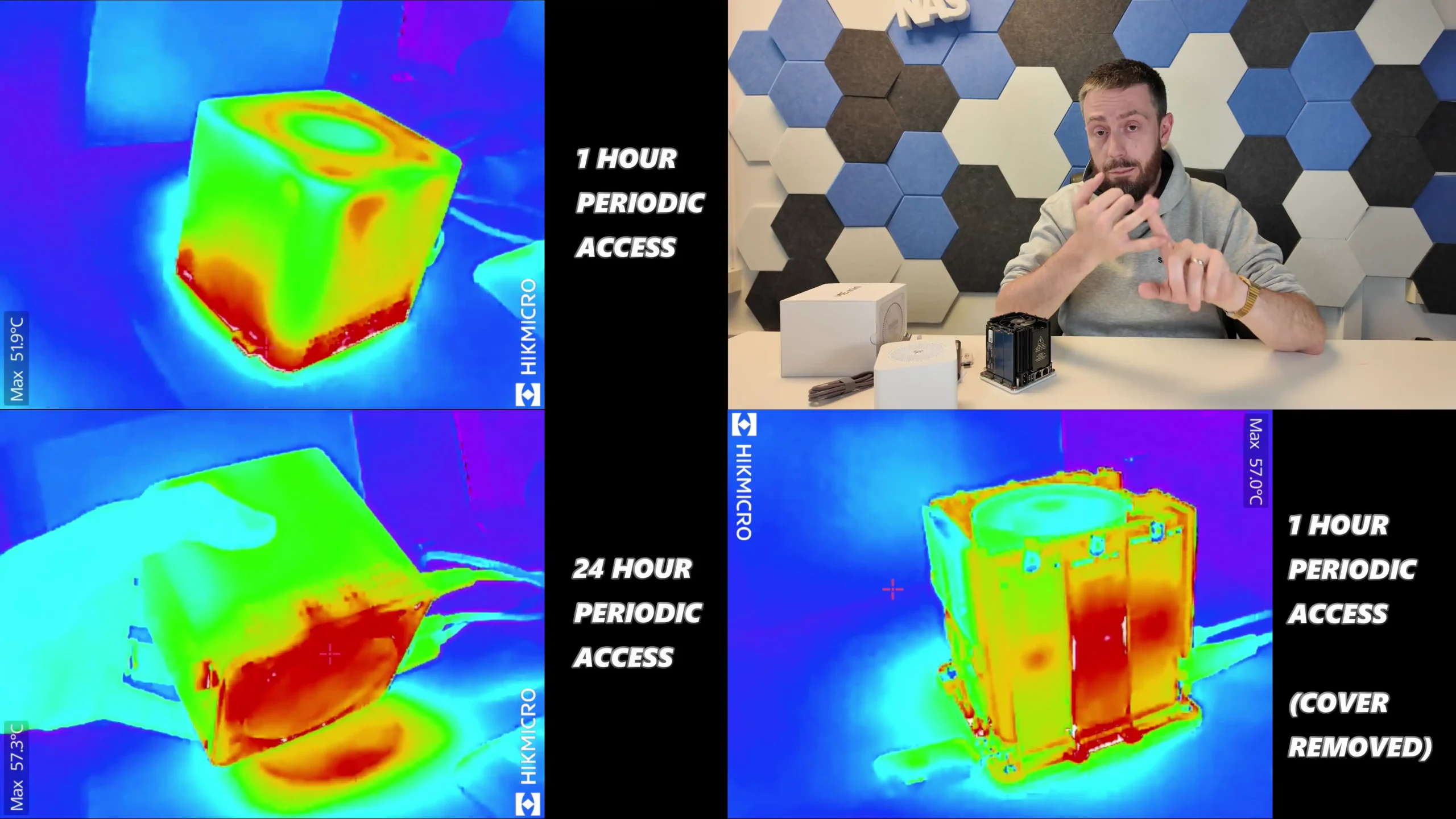
In terms of power consumption and noise, the ME Mini is especially frugal. With no SSDs installed, the device idled at 6.0–6.9W. When populated with six SSDs and left idle, it drew approximately 16.9W. During peak activity—dual LAN ports active, CPU load above 70%, and all drives in use—power draw peaked between 28W and 31W. These are competitive numbers even among ARM-based NAS devices, and particularly impressive for an x86-based solution with full M.2 NVMe storage.
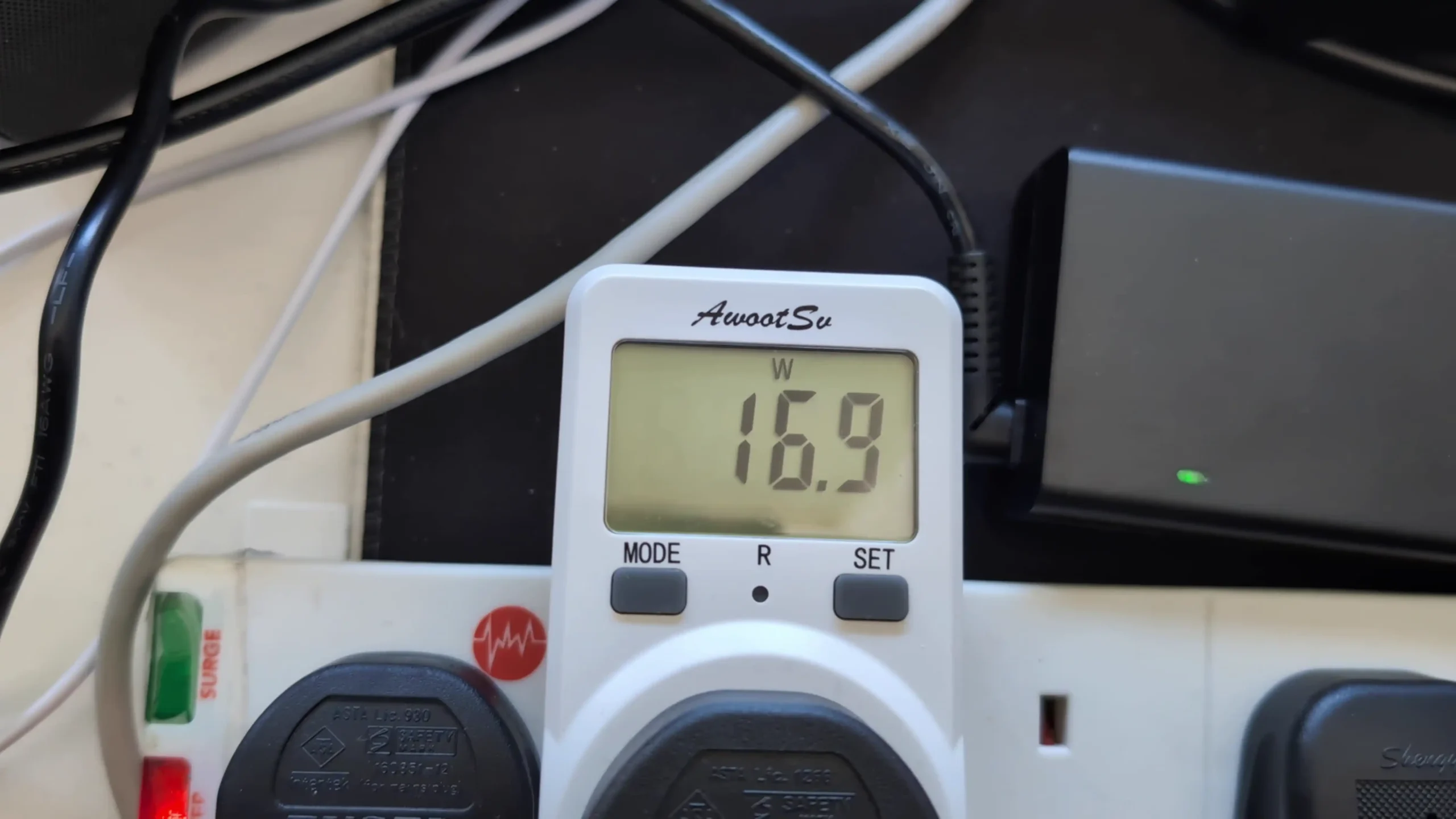 |
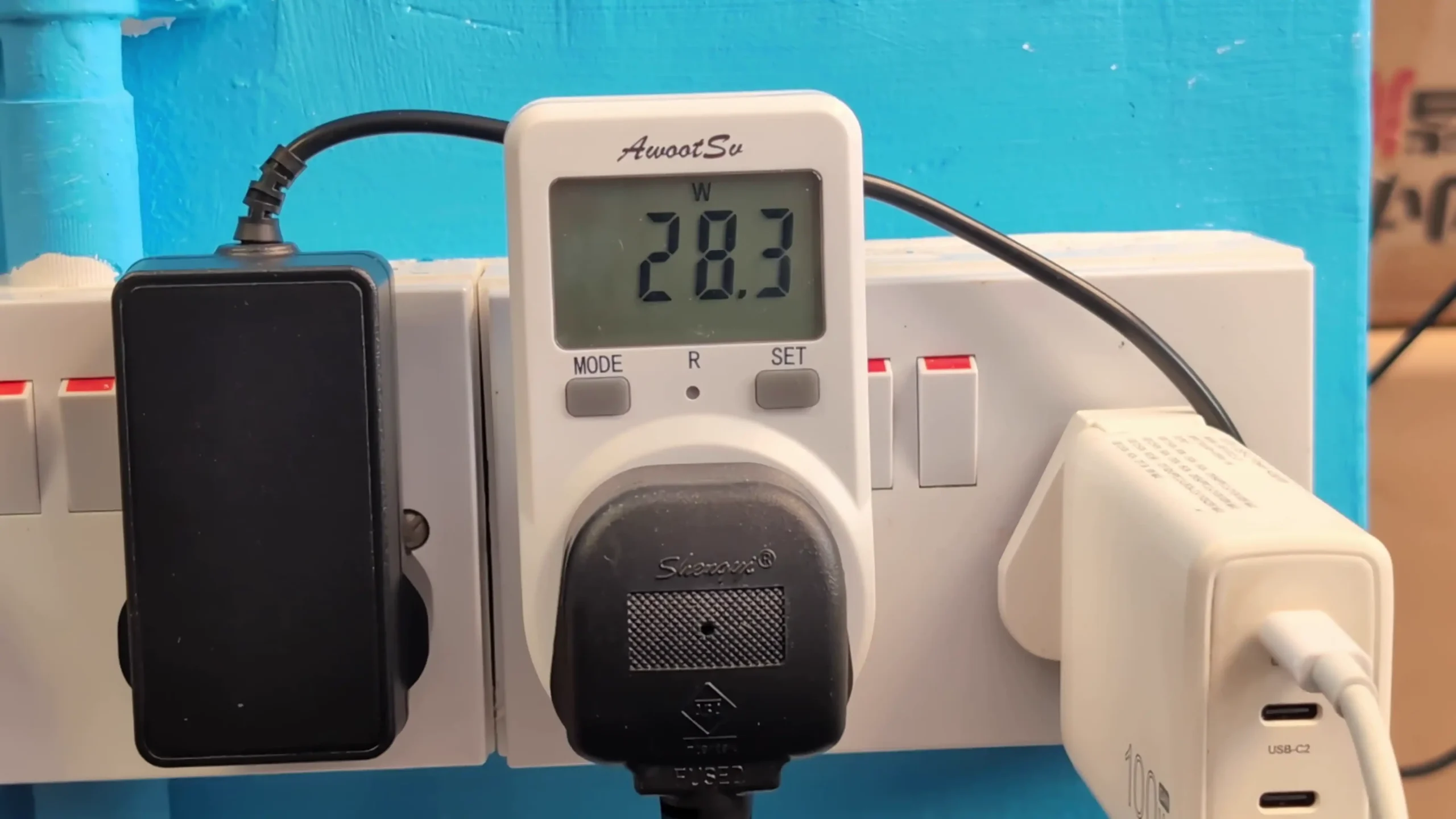 |
Acoustic output was also controlled, with idle operation measured at 31–34 dBA and full load peaking at just under 40 dBA—quiet enough for placement in shared living spaces without distraction.
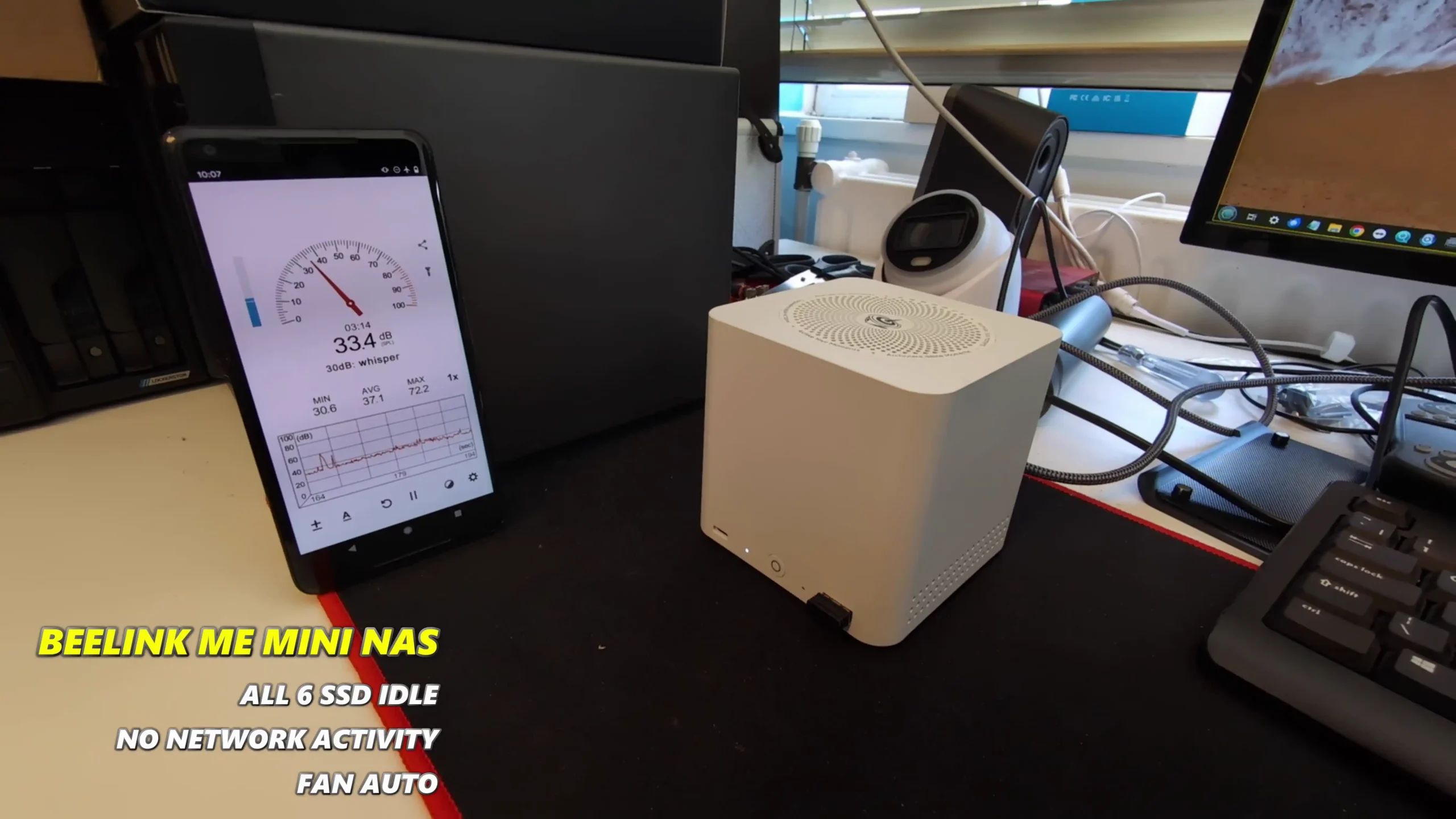 |
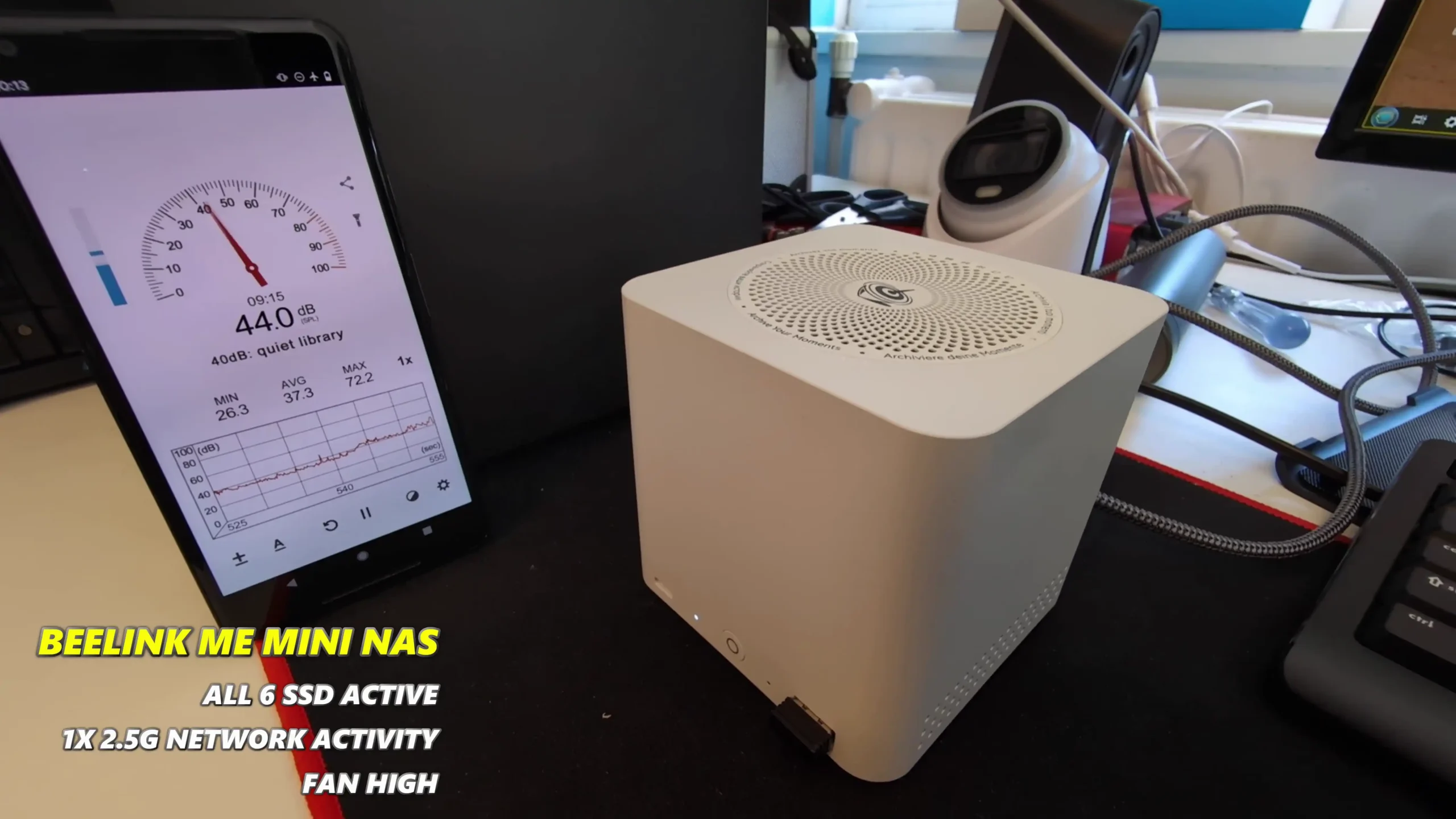 |
While performance is clearly limited by the Gen 3 x1 interface speeds on most slots, the device’s thermal and power efficiency arguably matter more for its intended audience. This NAS isn’t designed for high-throughput, multi-client virtualization tasks or heavy 10GbE video editing pipelines. Instead, it excels in delivering balanced, stable, and low-noise performance across general-purpose NAS workloads. For users building a Plex server, family backup archive, soft router, or even an experimental home lab appliance, the ME Mini offers just enough headroom to handle real-world demands without overwhelming complexity or cost.
| Test Scenario | Result/Reading |
|---|---|
| Read Speed (Gen 3 x1) | ~740MB/s |
| Write Speed (Gen 3 x1) | ~544MB/s |
| Read Speed (Gen 3 x2) | ~1.1GB/s |
| Write Speed (Gen 3 x2) | ~960MB/s |
| Inter-SSD Transfer | ~590–600MB/s |
| Idle Power Draw (No SSDs) | 6.0–6.9W |
| Idle Power Draw (6 SSDs) | 16.9W |
| Peak Load Power (Full Access) | 28–31W |
| Idle Noise Level | 31–34 dBA |
| Load Noise Level | 37–40 dBA |
| Avg. Top Panel Temp (Loaded) | 48–51°C |
| Avg. Bottom Panel Temp (Loaded) | 58–60°C |
The Beelink ME Mini NAS delivers an uncommon blend of size, functionality, and efficiency in a market segment often dominated by larger, louder, and less integrated alternatives. It is not designed to compete with traditional enterprise-grade NAS devices or modular, scalable solutions for prosumers. Instead, its strengths lie in targeting the needs of home users who want a quiet, energy-efficient storage solution that is easy to deploy, aesthetically unobtrusive, and capable of handling daily tasks such as media streaming, file backup, or soft routing. The inclusion of six M.2 NVMe SSD slots—paired with a Gen 3 x2 system slot—offers a rare level of expansion in such a small enclosure. The integration of an internal PSU, silent fan-assisted cooling, and a surprisingly effective thermal design are thoughtful touches that differentiate it from the majority of DIY NAS mini PCs.
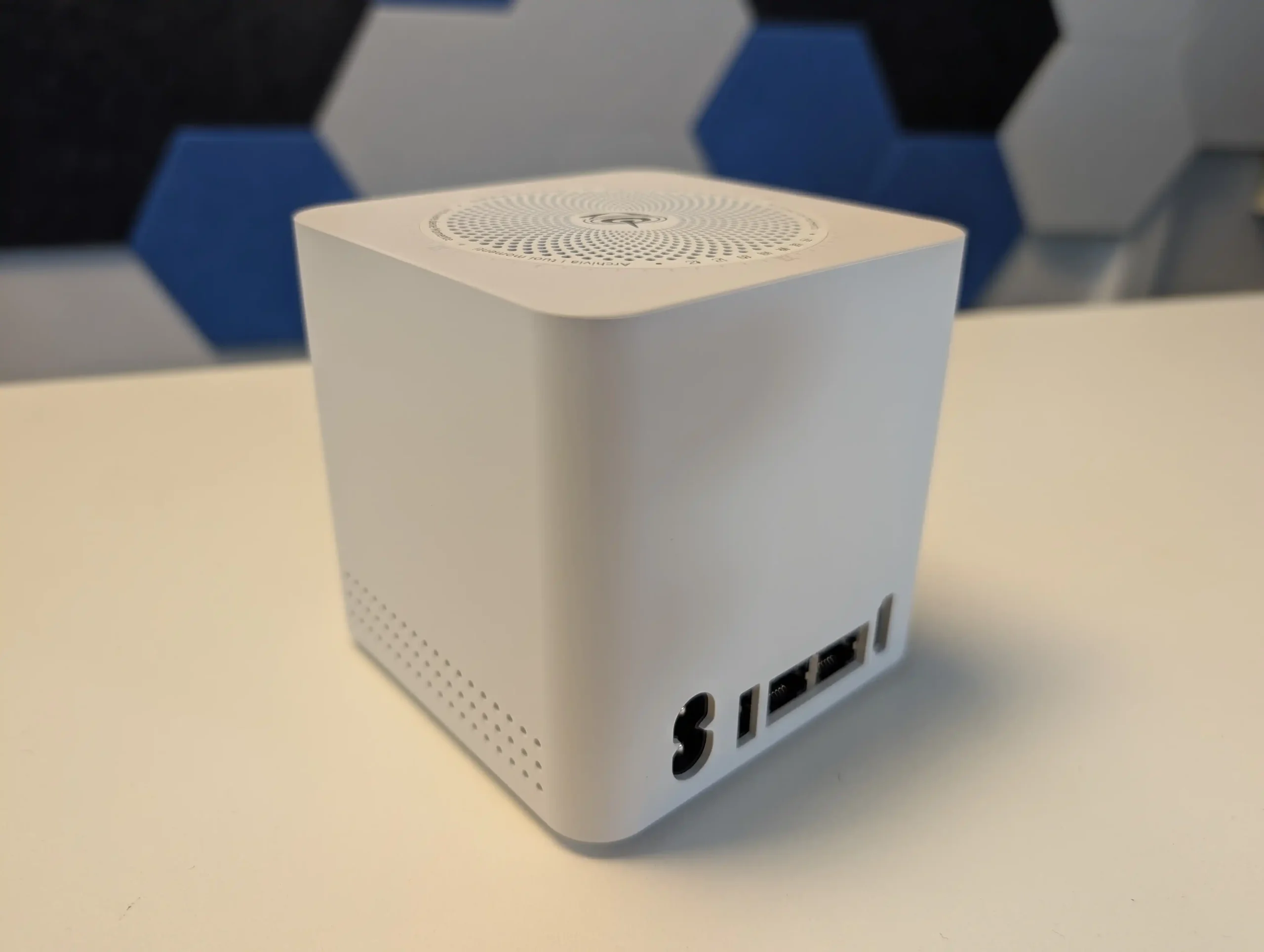 |
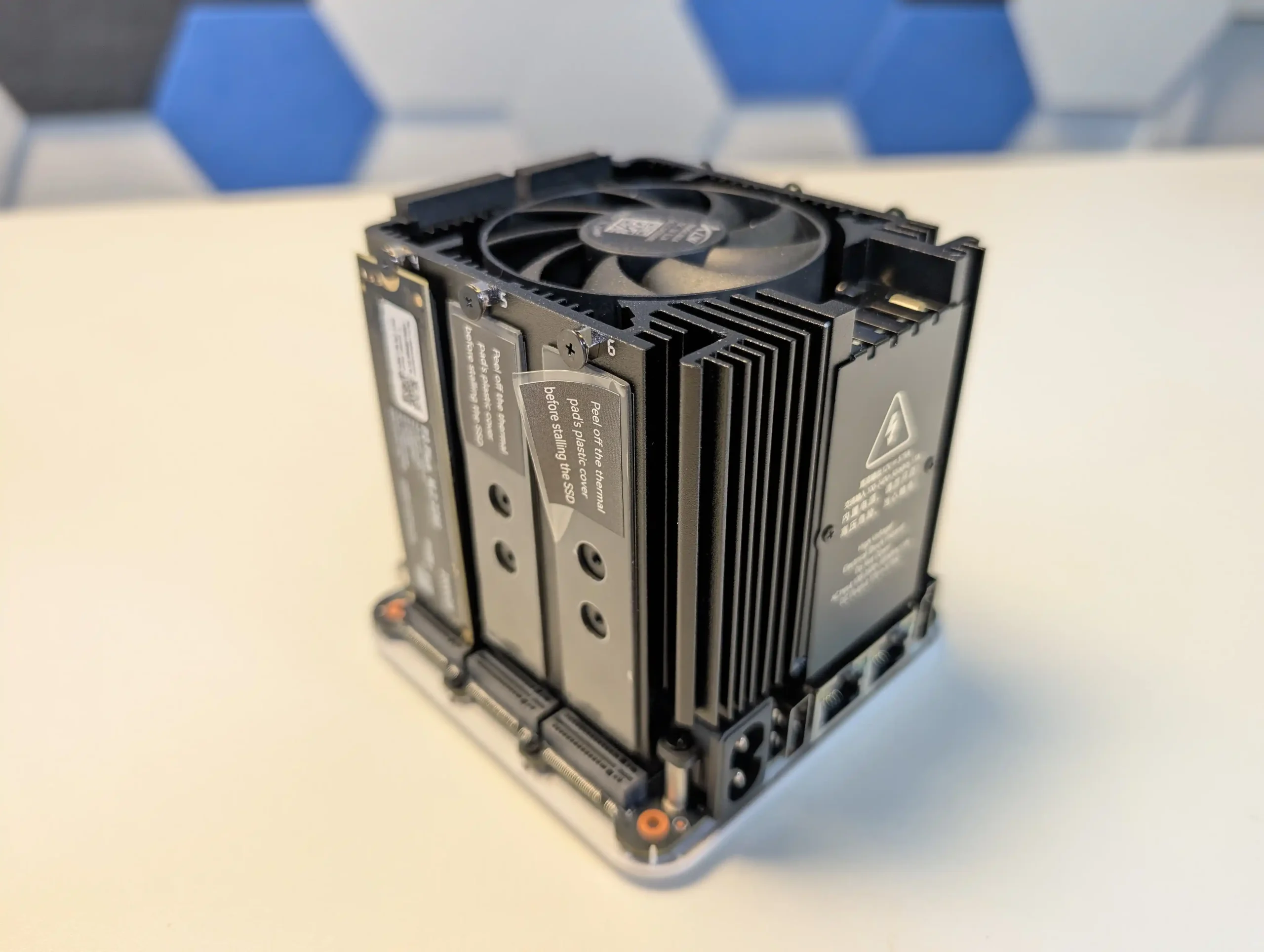 |
That said, it is not without limitations. The memory is non-upgradable, thermal accumulation at the base suggests room for improvement, and bandwidth ceilings imposed by Gen 3 x1 lanes will constrain users who demand high parallel throughput. Still, for its price point—particularly when pre-order discounts are applied—the ME Mini offers significant value, especially when compared to ARM-based NAS solutions with similar or lower specifications. With bundled Crucial SSD options and support for a wide range of NAS operating systems, it positions itself as a ready-to-go platform for tech-savvy users wanting to avoid the assembly of a fully DIY system. Overall, while not a product for every use case, the Beelink ME Mini succeeds in its aim to be a compact, stylish, and capable home NAS.
| Pros | Cons |
|---|---|
| Compact cube design (99x99x99mm) ideal for discreet home deployment | Memory is soldered and non-upgradable |
| Supports up to 6x M.2 NVMe SSDs with total capacity up to 24TB | Five of the six SSD slots are limited to PCIe Gen 3 x1 bandwidth |
| Integrated PSU eliminates bulky external power adapters | Bottom panel retains heat due to lack of active ventilation |
| Dual 2.5GbE LAN ports with link aggregation support | — |
| Wi-Fi 6 wireless access and flexibility in UnRAID7 | — |
| Low power consumption (as low as 6.9W idle, ~30W peak with full load) | — |
| Silent fan and effective internal thermal management via large heatsink | — |
| Includes Crucial-branded SSDs in pre-configured options for reliability | — |
|
Check Amazon in Your Region for the Beelink ME Mini NAS ($329 4/6) |
Check AliExpress for the Beelink ME Mini NAS ($344 4/6) |
Check the Official Beelink Site for the ME Mini NAS ($209 4/6) |
 SUBSCRIBE TO OUR NEWSLETTER
SUBSCRIBE TO OUR NEWSLETTER 
 Join Inner Circle
Join Inner Circle  Subscribe
Subscribe
This description contains links to Amazon. These links will take you to some of the products mentioned in today's content. As an Amazon Associate, I earn from qualifying purchases. Visit the NASCompares Deal Finder to find the best place to buy this device in your region, based on Service, Support and Reputation - Just Search for your NAS Drive in the Box Below
 Need Help?
Where possible (and where appropriate) please provide as much information about your requirements, as then I can arrange the best answer and solution to your needs. Do not worry about your e-mail address being required, it will NOT be used in a mailing list and will NOT be used in any way other than to respond to your enquiry.
[contact-form-7]
Need Help?
Where possible (and where appropriate) please provide as much information about your requirements, as then I can arrange the best answer and solution to your needs. Do not worry about your e-mail address being required, it will NOT be used in a mailing list and will NOT be used in any way other than to respond to your enquiry.
[contact-form-7]
 Ko-fi or old school Paypal. Thanks!To find out more about how to support this advice service check HEREIf you need to fix or configure a NAS, check Fiver
Have you thought about helping others with your knowledge? Find Instructions Here
Ko-fi or old school Paypal. Thanks!To find out more about how to support this advice service check HEREIf you need to fix or configure a NAS, check Fiver
Have you thought about helping others with your knowledge? Find Instructions Here

|
 |
At Computex 2025 in Taipei, Minisforum introduced the MS-R1 — a new class of mini PC that marks a distinct departure from its usual reliance on x86 architecture. This compact system is built around the ARM-based CIX P1 processor, an emerging 12-core chip aimed at redefining performance standards for ARM in desktop computing. The MS-R1 combines this processor with dual 10GbE networking, PCIe Gen 4 expansion, and up to 64GB of onboard LPDDR5 memory — all within a chassis under 5 cm thick. Unlike traditional Minisforum models that have leaned on AMD Ryzen or Intel Core platforms, this system positions itself as a versatile option for edge computing, AI acceleration, and lightweight server tasks.
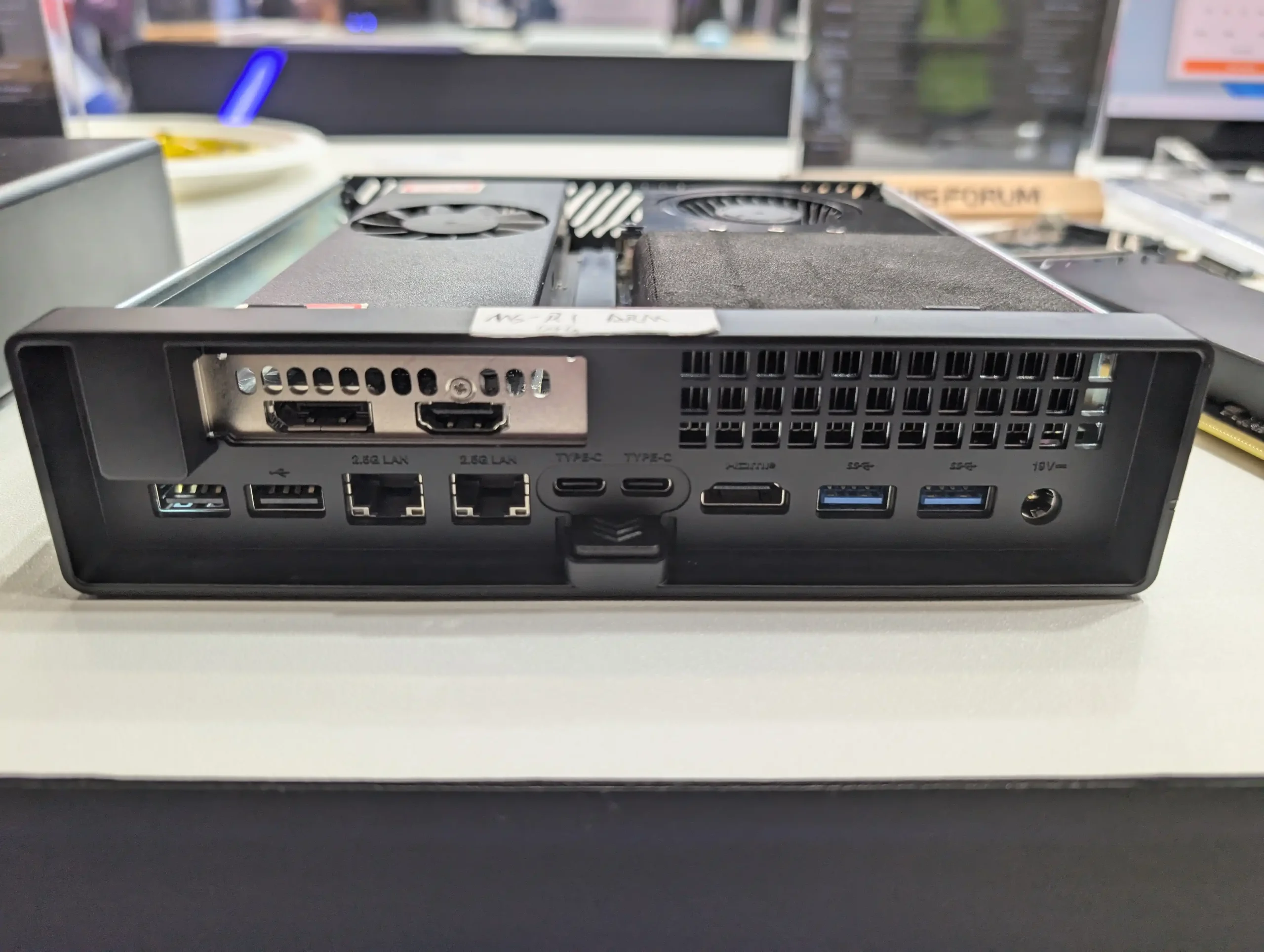
The MS-R1 is clearly still in development, but its early prototype already suggests Minisforum is exploring wider horizons beyond conventional desktop replacement PCs. It leverages many of the strengths typically associated with ARM — such as power efficiency and thermally lightweight design — while mitigating common limitations through generous I/O and expansion capabilities. Whether this signals a broader shift in the company’s product direction remains to be seen, but the MS-R1 offers an intriguing glimpse into how ARM-based platforms might coexist with, or even challenge, traditional x86 solutions in the years ahead.
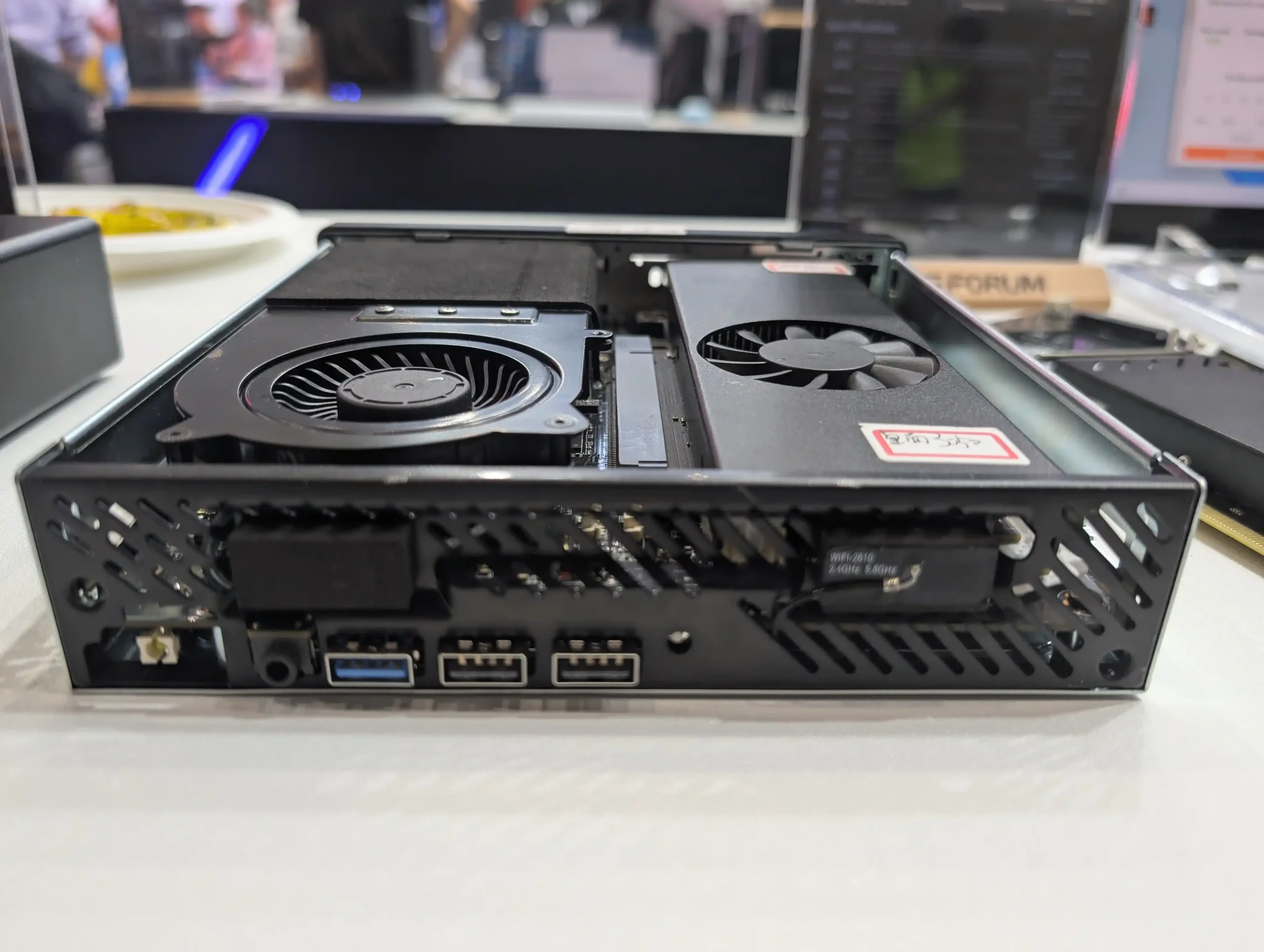
The Minisforum MS-R1 is equipped with the newly announced CIX P1 (CP8180) processor, a 12-core, 12-thread ARM-based SoC built on the ARMv9.2-A architecture. Manufactured using a 6nm process, the CPU combines eight performance cores and four efficiency cores, operating at up to 2.6 GHz. It is complemented by a 10-core Arm Immortalis GPU, likely the G720 series, which supports advanced graphical output and light AI rendering. Additionally, the chip includes a 30 TOPS-capable neural processing unit (NPU), bringing the total onboard AI compute power to 45 TOPS. This SoC runs Linux systems with kernel 6.6 or later and offers a UEFI-compatible BIOS with ACPI support — a rare but increasingly essential feature for ARM-based systems targeting general desktop or server use.
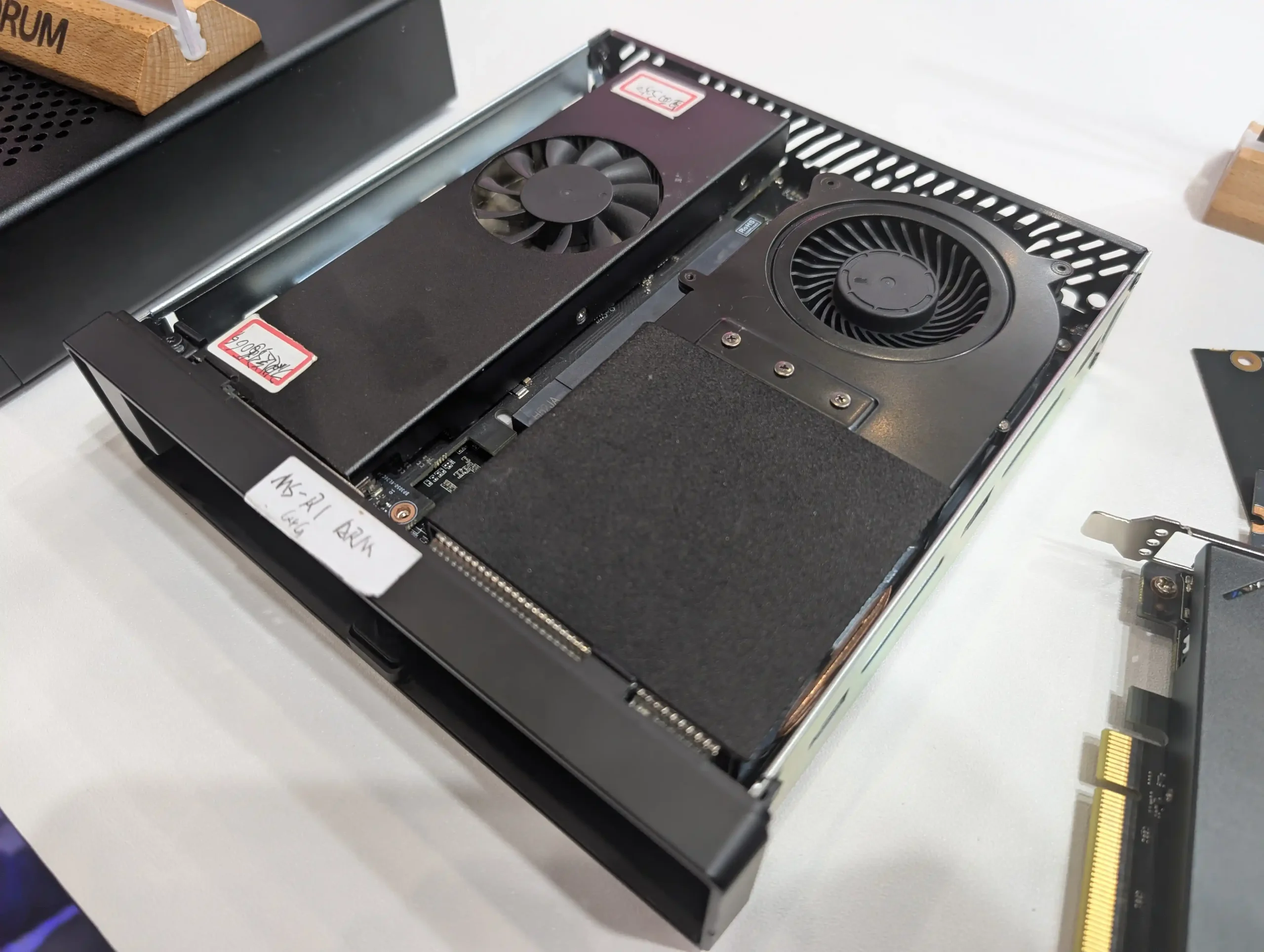
| Component | Details |
|---|---|
| CPU | CIX P1 (CP8180) – 12-core (8P + 4E), ARMv9.2-A, up to 2.6 GHz |
| Process Node | 6nm |
| GPU | Arm Immortalis (10-core) – likely G720 series |
| NPU | 30 TOPS (Total AI: 45 TOPS) |
| RAM | 64GB LPDDR5 (128-bit, onboard/soldered, non-upgradable) |
| Storage Expansion | 1 × M.2 2280/22110 NVMe (PCIe 4.0 x4, up to 4TB) |
| Wireless | M.2 2230 slot – Wi-Fi 6E + Bluetooth 5.2 |
| Display Output | 1 × HDMI 2.0 (4K@60Hz), 2 × USB-C (Alt DP1.4, 8K@60Hz support) |
| Audio Output | HDMI, USB-C (Alt DP), 1 × 3.5mm combo audio jack |
| PCIe Expansion | 1 × PCIe x16 slot (wired as PCIe 4.0 x8) |
| Ethernet | 2 × 10GbE (Copper RJ45) |
| USB Ports (Rear) | 2 × USB 3.2 Gen2 Type-A (10Gbps), 2 × USB 2.0 |
| USB Ports (Front) | 1 × USB 3.2 Gen1 Type-A (5Gbps), 2 × USB 2.0 |
| Power | DC-IN (19V / 9.47A) |
| OS Support | Linux kernel 6.6+, UEFI BIOS with ACPI standard |
| Chassis Dimensions | 195.6 × 189 × 48 mm |
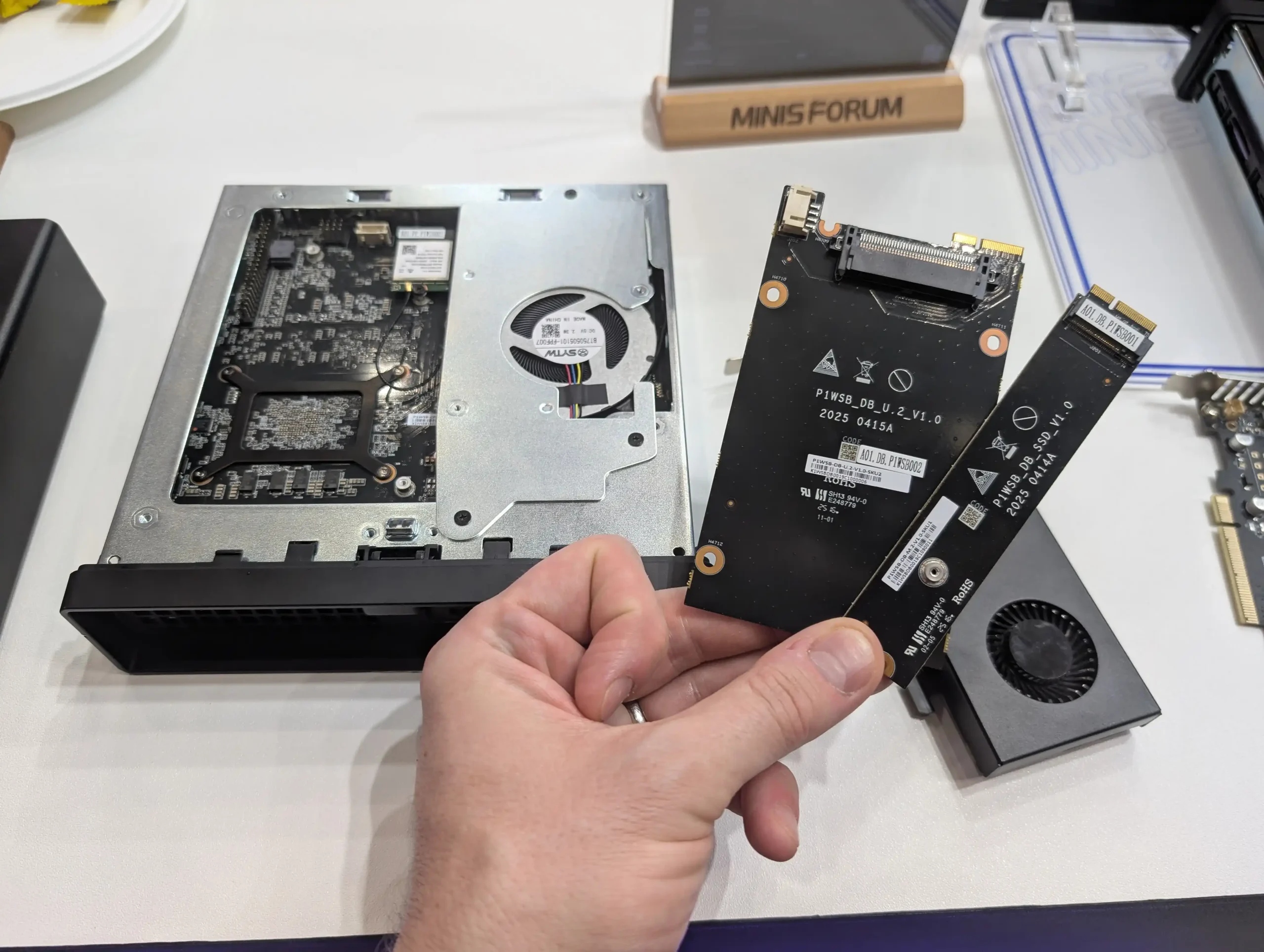
Where the MS-R1 notably differentiates itself is in its high-speed I/O and expandability. Dual 10GbE copper LAN ports deliver enterprise-grade networking capability, especially valuable for file servers, edge compute nodes, or hybrid NAS use cases. A full-length PCIe x16 slot (operating at PCIe 4.0 x8 bandwidth) offers GPU or accelerator card support, effectively bridging the gap between ARM architecture and discrete compute expansion — something still rare in this space. USB connectivity is ample: 2 x USB 3.2 Gen 2 (10Gbps) Type-A on the rear, 1 x USB 3.2 Gen 1 (5Gbps) Type-A on the front, and four USB 2.0 ports split across the front and rear. Audio is handled via HDMI, the DisplayPort-enabled Type-C ports, and a 3.5mm combo jack. Power is supplied via a 19V barrel-type DC-IN jack rated at 9.47A, and the device is controlled by a front-facing LED-lit power button. Despite its compact 195.6 × 189 × 48mm footprint, the MS-R1 integrates a surprising breadth of features for ARM-based edge computing in a mini PC form factor.
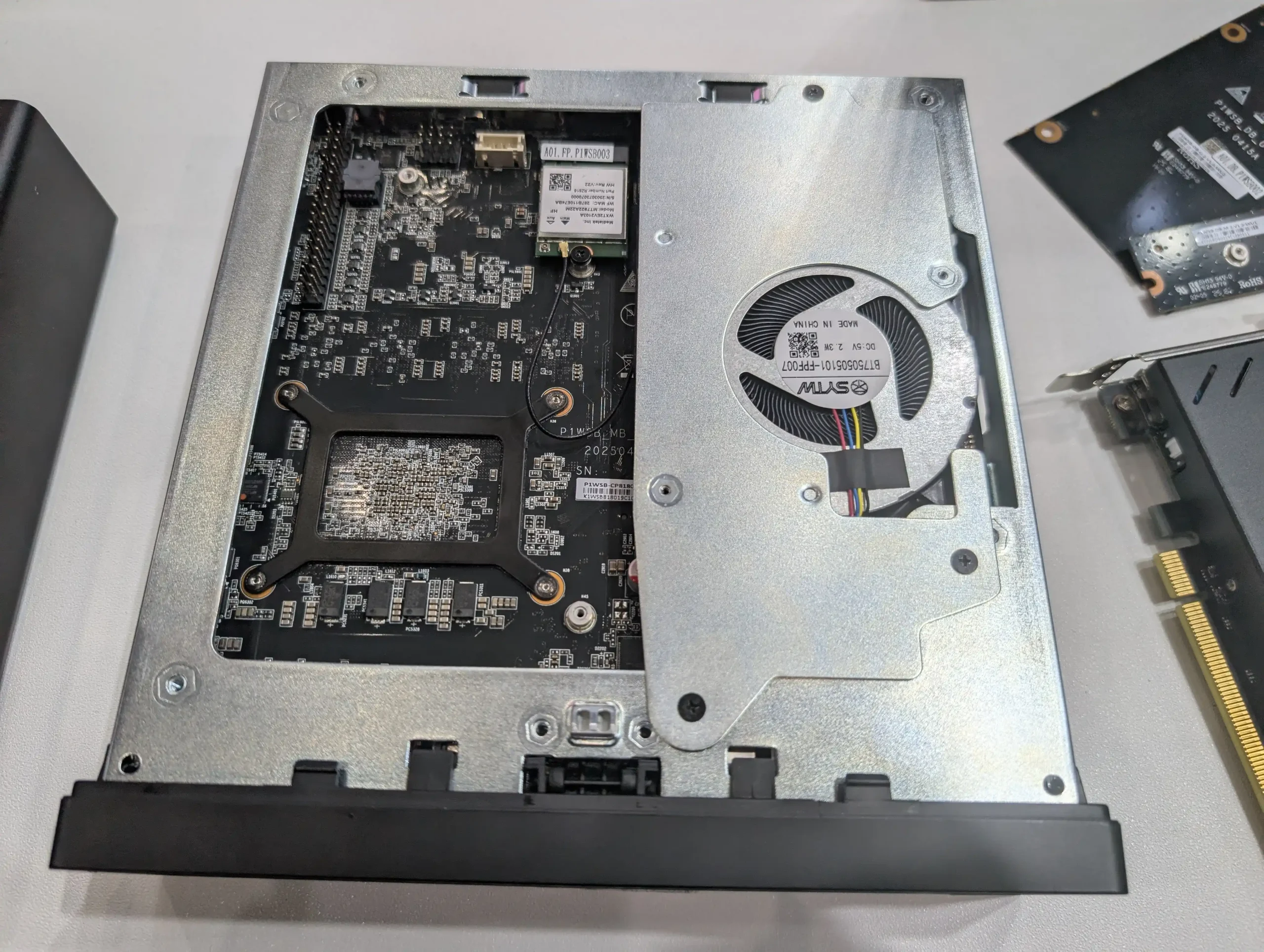
The MS-R1 stands out primarily because it brings ARM architecture into a domain traditionally dominated by x86 processors — compact desktop systems with high-speed networking, PCIe expansion, and broad OS compatibility. ARM chips have long been associated with mobile, embedded, and power-efficient use cases, but they have rarely offered the kind of performance, I/O, and system flexibility seen in x86-based mini PCs. With the CIX P1 SoC, the MS-R1 challenges that assumption. It pairs a 12-core CPU (based on the ARMv9.2-A standard) with a 10-core GPU and an NPU capable of 30 TOPS, totaling 45 TOPS of AI compute. This puts it within reach of edge AI tasks, containerized application hosting, or lightweight virtualization. It’s also rare to see an ARM system with UEFI BIOS support, which enables compatibility with a wide range of Linux distributions and other OS environments — removing a common barrier for general users or developers.
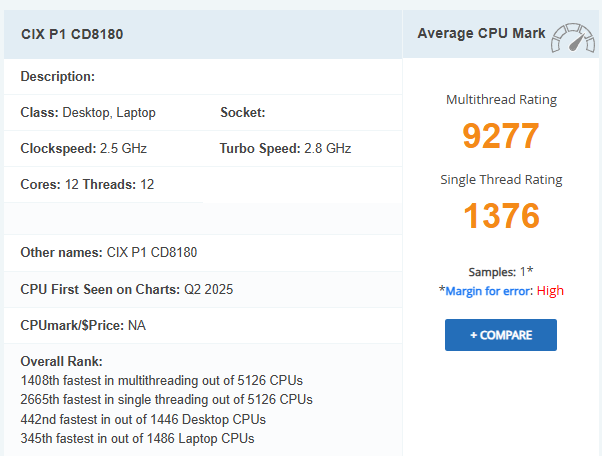
Another reason the MS-R1 matters is its hardware-level ambition. While many ARM-based devices are limited in I/O and expansion, this system includes two 10GbE ports and a PCIe Gen 4 x8 slot — enabling add-in graphics cards or accelerators, typically absent in ARM ecosystems. Combined with onboard LPDDR5 RAM and NVMe Gen 4 storage, the MS-R1 begins to resemble a standard workstation or edge server in capability. Minisforum’s decision to use the CIX P1 processor, which is likely based on licensable Arm Cortex designs and built for a Chinese market increasingly focused on domestic alternatives, reflects both a strategic and technical shift. It also comes at a time when ARM is being seriously considered for broader computing roles, particularly in energy-efficient high-performance setups. The MS-R1 doesn’t just experiment with ARM—it places it in a form factor, price tier, and feature set that could realistically serve prosumers, developers, and small enterprise users.
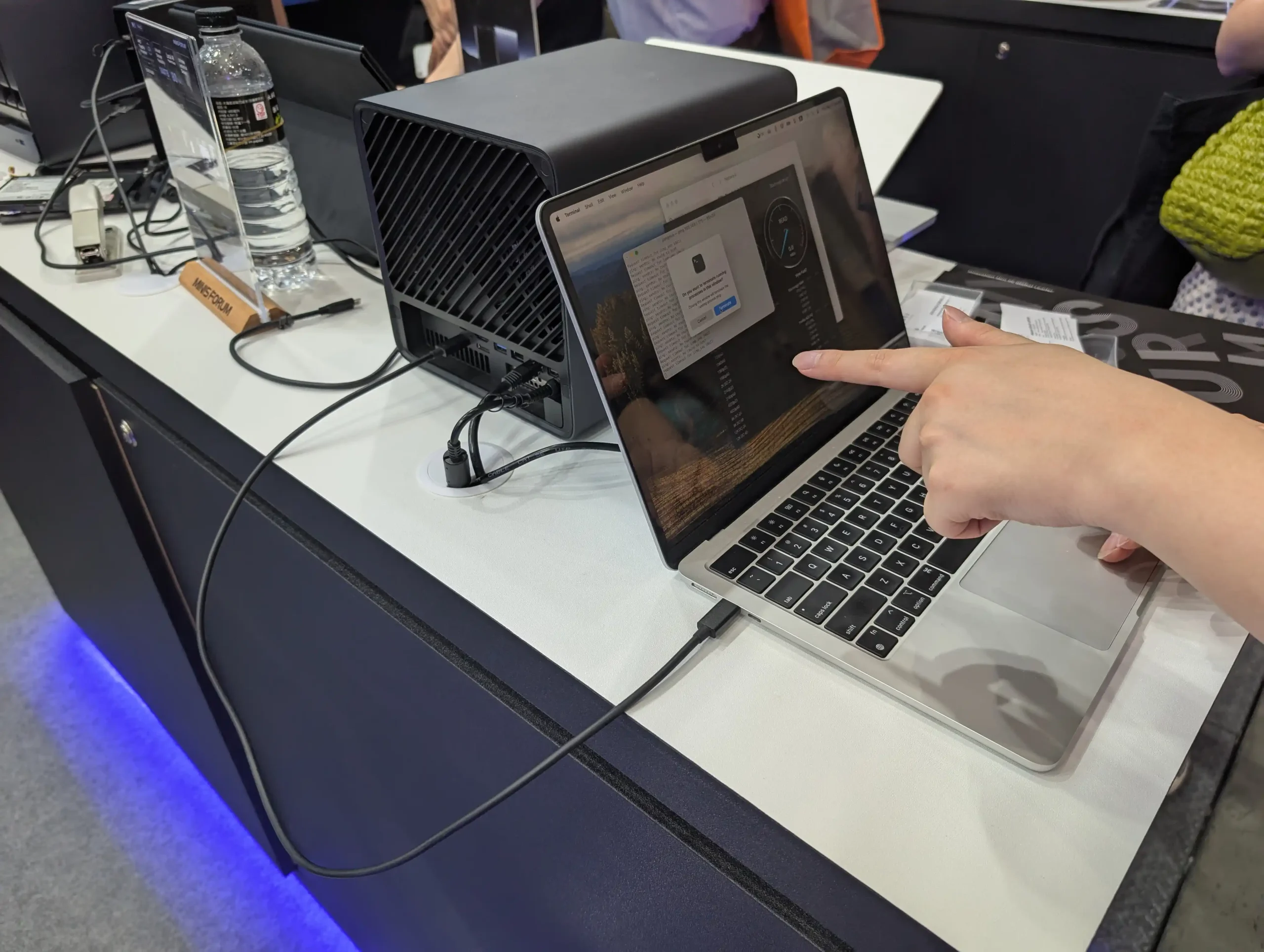
The Minisforum MS-R1 is not just another compact system — it’s a deliberate move into new territory for the brand. By integrating an ARMv9 SoC with high-speed networking, PCIe expansion, and a mature BIOS environment, the MS-R1 challenges preconceptions about what ARM-based mini PCs can deliver. While still in early development, it already positions itself as a potential edge server, AI inference node, or Linux-based workstation. Its soldered LPDDR5 memory, limited to 64GB, and single NVMe slot may limit flexibility in some use cases, but the inclusion of dual 10GbE and PCIe Gen 4 support compensate with substantial throughput potential. It is not yet clear how the market will respond to such a hybrid product — one that crosses lines between embedded computing and traditional desktops — but it’s an important experiment in bringing ARM computing to mainstream deployment environments.

Minisforum’s broader product roadmap at Computex 2025 suggests that the MS-R1 is just one piece of a larger diversification strategy. Alongside it, the company showcased the upcoming N5 Pro — a Ryzen 9-based NAS/PC hybrid with ECC memory support — and the G1 Pro, a small form factor system housing up to RTX 5060-class graphics and 120W CPUs. These products collectively show the company’s intent to cover multiple tiers of performance and deployment, from ARM-powered edge systems to x86-based content creation rigs.
| Component | G1 | G1 Pro |
|---|---|---|
| CPU | AMD Ryzen 9 8940HX 9 8940HX |
AMD Ryzen 9 9895HX (Higher TDP / Performance Tier) 9 9895HX (Higher TDP / Performance Tier) |
| CPU TDP | Up to 100W | Up to 100W |
| GPU | NVIDIA RTX 4060 Laptop GPU (120W) | NVIDIA RTX 5060 Laptop GPU (120W) |
| Memory | Likely DDR5 SODIMM (config/details not yet confirmed) | Likely DDR5 SODIMM (config/details not yet confirmed) |
| Storage Expansion | 2 × M.2 NVMe (PCIe Gen 4) | 2 × M.2 NVMe (PCIe Gen 4) |
| Wireless | Wi-Fi (generation not specified), Bluetooth supported | Wi-Fi (generation not specified), Bluetooth supported |
| Power Supply | 550W Built-in PSU | 550W Built-in PSU |
| Chassis Volume | Approx. 3.9L (small form factor enclosure) | Approx. 3.9L (small form factor enclosure) |
| Cooling | Likely air cooling with dual-fan or vapor chamber (TBD) | Likely air cooling with dual-fan or vapor chamber (TBD) |
| Software | Minisforum Control Center app support | Minisforum Control Center app support |
| Lighting | Adjustable RGB Lighting | Adjustable RGB Lighting |
| Use Case | Compact gaming / creator PC | Higher-tier gaming / GPU compute mini system |
Whether or not the MS-R1 reaches widespread adoption, it represents a notable shift toward ARM’s growing viability outside mobile and embedded contexts. It’s a signal that the boundary between ARM and x86 in high-performance personal computing may continue to blur in the years ahead.
 SUBSCRIBE TO OUR NEWSLETTER
SUBSCRIBE TO OUR NEWSLETTER 
 Join Inner Circle
Join Inner Circle  Subscribe
Subscribe
This description contains links to Amazon. These links will take you to some of the products mentioned in today's content. As an Amazon Associate, I earn from qualifying purchases. Visit the NASCompares Deal Finder to find the best place to buy this device in your region, based on Service, Support and Reputation - Just Search for your NAS Drive in the Box Below
 Need Help?
Where possible (and where appropriate) please provide as much information about your requirements, as then I can arrange the best answer and solution to your needs. Do not worry about your e-mail address being required, it will NOT be used in a mailing list and will NOT be used in any way other than to respond to your enquiry.
[contact-form-7]
Need Help?
Where possible (and where appropriate) please provide as much information about your requirements, as then I can arrange the best answer and solution to your needs. Do not worry about your e-mail address being required, it will NOT be used in a mailing list and will NOT be used in any way other than to respond to your enquiry.
[contact-form-7]
 Ko-fi or old school Paypal. Thanks!To find out more about how to support this advice service check HEREIf you need to fix or configure a NAS, check Fiver
Have you thought about helping others with your knowledge? Find Instructions Here
Ko-fi or old school Paypal. Thanks!To find out more about how to support this advice service check HEREIf you need to fix or configure a NAS, check Fiver
Have you thought about helping others with your knowledge? Find Instructions Here

|
 |

Suite à un souci d’aiguillage, le produit devant arriver chez notre ami FX, voici que je me retrouve en test avec un NiPoGi AM06 Pro depuis un peu plus de 2 semaines. Si cette machine à un peu moins de 350€ (pour cette version) semble être parfaite sur le papier, voyons ce que cela donne à l’usage…

Le modèle que j’ai testé est équipé des composants suivants :
* Il dispose d’un port USB-C qui va nous servir pour l’alimentation uniquement avec l’alimentation secteur USB-C fournie.
Conçu autour d’une coque en plastique dur noir avec les coins arrondis. J’avoue que cela ne m’a pas donné d’impression de haute qualité lors de la prise en main, même si j’aime bien le coin avec le bouton d’allumage. Le Mini-PC est fourni avec un adaptateur pour le rajout d’un SSD 2,5″ SATA, un support VESA, une alimentation USB-C et un câble HDMI. Aussi, le fait qu’il n’y a pas de différenciation entre le port 2,5 Gb/s et 1 Gb/s m’a un peu surpris.
Le NiPoGi AM06 Pro est livré avec une version propre de Windows 11 Professionnel. L’installation initiale est simple et rapide : configuration de la langue, du clavier, de la connexion réseau (Wi-Fi ou filaire) et recherche des mises à jour. En débranchant le câble Ethernet pendant l’installation, j’ai pu installer Windows avec un compte local sans difficulté. En un petit quart d’heure, l’appareil est prêt !
Équipé d’un CPU Ryzen 7 5700U avec un APU (combinaison CPU et iGPU sur une seule puce) Radeon, on remarque tout de suite que l’appareil est très fluide pour les taches bureautiques. La navigation sur Internet, l’édition de documents texte ou même la lecture de vidéos en streaming ne lui fait pas peur ! J’y vois aussi une machine tout à fait taillée pour un faire un serveur Proxmox !
Le BIOS est plutôt simple, uniquement en langue anglaise
Pour les plus curieux, voici quelques photos de l’intérieur du boitier :
On remarquera que la carte Wi-Fi 6 est sous le SSD. Il faut donc forcément démonter le SSD pour y avoir accès. De plus les 4 vis qui servent à tenir le cache de fermeture du boitier sont également les vis de maintien de la carte mère. Il n’y a donc rien de plus à dévisser pour extraire la carte mère (cependant, attention, cela rentre au chausse-pied !)
Voici un aperçu des informations remontées à l’aide de HWiNFO


Coté disque (AirDisk) et RAM (Kinsotin), on est clairement sur du no-name (ce qui n’est en soi pas surprenant sur ce type de machine). Cependant je n’ai pas vu de problème de fiabilité pendant mon utilisation ni au Memtest.
Nous sommes sur du SSD SATA, avec donc des résultats sans surprise : correcte pour ce type de SSD, sans plus. Je regrette vraiment au vu du reste de la machine qu’on ne soit pas sur un NVMe, de plus que la machine est compatible. Au final le SSD SATA est la « tâche » dans cette belle configuration.


Ici aussi, une agréable surprise, CPU à 100% dans un 1er temps, puis CPU et APU en forte sollicitation, la chauffe est bien gérée avec une stabilisation de la fréquence du CPU à 3200 Mhz environ pour environ 70 à 75°C. Le ventilateur du CPU bien qu’audible lors de ce test, reste discret !
Comme indiqué dans les premières impressions, il n’y a pas de différence entre le port LAN 2.5 Gb/s, et celui à 1 Gb/s, dont il faut brancher, puis vérifier sur Windows si c’est le bon port. Un peu dommage !

Les performances en 2.5 Gb/s sont sans surprise : très bonne. Lors d’un test en Wi-Fi, on remarque tout de suite la compatibilité Wi-Fi 6 avec des performances proche du Gigabit ( à environ 3m du point d’accès ) :

Le NiPoGi AM06 Pro n’est pas le meilleur élève, même s’il y a bien pire. Environ 30W sous Windows (sans tache particulière), max 45W lors de forte sollicitation, le Ryzen 7 5700U est un processeur un peu ancien maintenant (Q1/2021). Il reste cependant parfaitement adapté à un usage bureautique / multitâche grâce à ces 8 cœurs / 16 Threads et l’APU (puce graphique) intégré.
In an increasingly saturated market of single-board computers and compact servers, the ZimaBoard 2 arrives with a clear goal: to offer an affordable, x86-powered, DIY-friendly alternative that bridges the gap between embedded systems and full-blown home servers. Developed by IceWhale, a brand that has already seen crowdfunding success with products like the original ZimaBoard, ZimaBlade, and ZimaCube, the ZimaBoard 2 aims to refine the company’s mission of delivering low-power, highly customizable devices for tinkerers, creators, and homelab enthusiasts. At its core, the ZimaBoard 2 is designed for users who want flexibility without complexity—whether that’s spinning up a lightweight virtualization platform, building a smart home hub, deploying a personal cloud, or running a local media server with minimal noise and energy consumption.

Unlike consumer-grade NAS systems or ARM-based boards, ZimaBoard 2 taps into the x86 ecosystem, offering broader OS compatibility and performance benefits while maintaining a compact, passively cooled footprint. This review explores the hardware, thermal and network performance, and software environment of the ZimaBoard 2, evaluating where it fits in the broader landscape of edge computing and personal infrastructure. As with previous IceWhale launches, this unit is being released initially through crowdfunding—a factor that calls for cautious optimism. Still, with a track record of fulfilling past campaigns, IceWhale appears confident in ZimaBoard 2’s readiness. Whether that confidence is justified, and whether the board truly earns its place in a crowded DIY server landscape, is what we’ll determine over the course of this review.
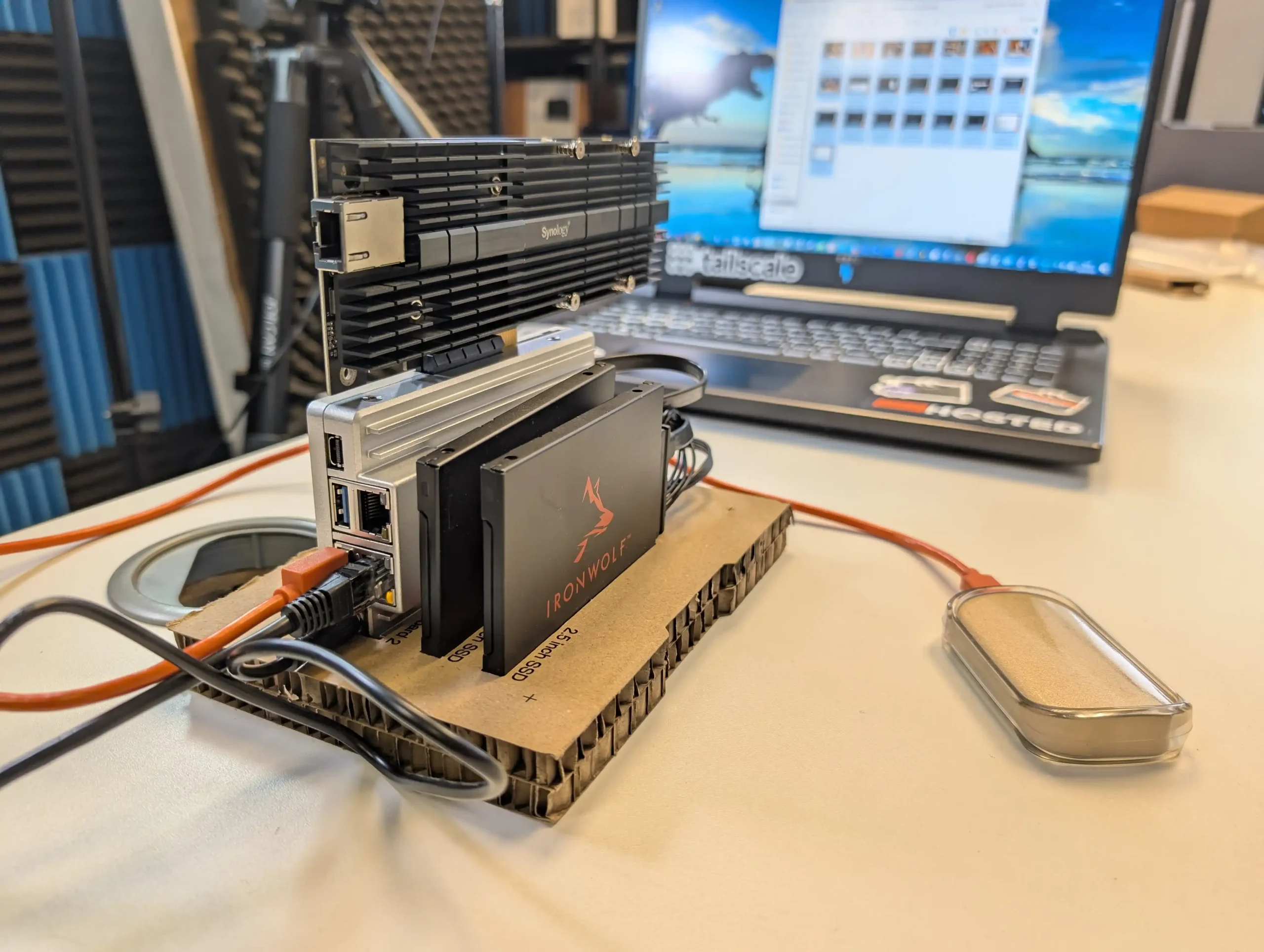
The ZimaBoard 2 is a compact, x86-based single board server that strikes a balance between flexibility, efficiency, and affordability. It offers solid performance for its size, thanks to an Intel N150 processor, dual 2.5GbE ports, and a PCIe 3.0 x4 slot for meaningful expansion, making it suitable for tasks like media serving, light virtualization, and home automation. However, limitations such as non-upgradable 8GB RAM, slow onboard eMMC storage, and reliance on passive cooling require careful consideration for more demanding workloads. ZimaOS provides a user-friendly starting point with Docker support and basic file management, though advanced users may prefer to install alternative operating systems. Overall, the ZimaBoard 2 is a capable and well-engineered device for DIY server enthusiasts who understand its constraints and plan their use case accordingly


9.0
 x86 Architecture – Compatible with a wide range of operating systems including ZimaOS, Unraid, TrueNAS SCALE, and Proxmox.
x86 Architecture – Compatible with a wide range of operating systems including ZimaOS, Unraid, TrueNAS SCALE, and Proxmox. Dual 2.5GbE LAN Ports – Offers strong networking capabilities for multi-service workloads and gateway setups.
Dual 2.5GbE LAN Ports – Offers strong networking capabilities for multi-service workloads and gateway setups. PCIe 3.0 x4 Slot – Enables high-speed expansion for 10GbE NICs, NVMe storage, or combo cards.
PCIe 3.0 x4 Slot – Enables high-speed expansion for 10GbE NICs, NVMe storage, or combo cards. Fanless, Silent Operation – Completely passively cooled, ideal for home or quiet office environments.
Fanless, Silent Operation – Completely passively cooled, ideal for home or quiet office environments. Compact and Durable Build – Small footprint with an all-metal chassis that doubles as a heatsink.
Compact and Durable Build – Small footprint with an all-metal chassis that doubles as a heatsink. ZimaOS Included – User-friendly OS with a Docker-based App Store and basic VM tools, ready out of the box.
ZimaOS Included – User-friendly OS with a Docker-based App Store and basic VM tools, ready out of the box. Flexible Storage Options – Dual SATA ports plus USB 3.1 support for connecting SSDs, HDDs, or external drives.
Flexible Storage Options – Dual SATA ports plus USB 3.1 support for connecting SSDs, HDDs, or external drives. Low Power Consumption – Efficient 6W CPU with ~10W idle and ~40W max under heavy load scenarios.
Low Power Consumption – Efficient 6W CPU with ~10W idle and ~40W max under heavy load scenarios.
 Non-Upgradable RAM – 8GB of soldered LPDDR5x limits long-term scalability for memory-intensive tasks.
Non-Upgradable RAM – 8GB of soldered LPDDR5x limits long-term scalability for memory-intensive tasks. Slow/Small Default Internal Storage – 32GB eMMC is convenient but underperforms for OS-level responsiveness or high I/O workloads.
Slow/Small Default Internal Storage – 32GB eMMC is convenient but underperforms for OS-level responsiveness or high I/O workloads. Thermal Headroom is Limited – Passive cooling alone may not be sufficient in closed environments or under sustained load without added airflow.
Thermal Headroom is Limited – Passive cooling alone may not be sufficient in closed environments or under sustained load without added airflow. Not Launching on Traditional Retail, but instead on Crowdfunding.
Not Launching on Traditional Retail, but instead on Crowdfunding.
NOTE – You can visit the Zimaboard 2 Crowdfunding Page (live from 10:30AM ET 22nd April 2025) by clicking the banner below. The entry price for early backers is $169, but that will revert to $179 (and $239 for a scaled-up storage and memory version). I DO NOT receive any kind of affiliate commission or sponsorship for this review (and this review, like all reviews at NASCompares, was done without the brand in question’s interference or input). You can use the link HERE to see the campaign for yourself and/or click the banner below:
The physical build of the ZimaBoard 2 continues IceWhale’s trend of delivering thoughtfully designed hardware. The full aluminum enclosure gives the board a sturdy, premium feel, while also serving as its main cooling surface. Every port is clearly labeled, and the board layout is practical and accessible.
| Component | Details |
|---|---|
| Processor | Intel® N150 (4 cores, 6MB cache, up to 3.6GHz) |
| Memory | 8GB LPDDR5x @ 4800MHz (soldered, non-upgradable) |
| Internal Storage | 32GB eMMC (soldered) |
| LAN | 2 x 2.5GbE Ethernet ports (Intel chipset) |
| Storage Interfaces | 2 x SATA 3.0 (6Gb/s) with power |
| USB Ports | 2 x USB 3.1 |
| Display Output | 1 x Mini DisplayPort 1.2 (up to 4K @ 60Hz) |
| PCIe Expansion | 1 x PCIe 3.0 x4 |
| Cooling | Passive cooling (full metal heatsink enclosure) |
| Graphics Features | Integrated graphics (up to 1GHz), Intel® Quick Sync Video |
| Virtualization Support | Intel VT-x, VT-d, AES-NI |
| Power Supply | 12V / 3A DC input |
| TDP | 6W |
| Dimensions | 140mm x 81.4mm x 31mm |
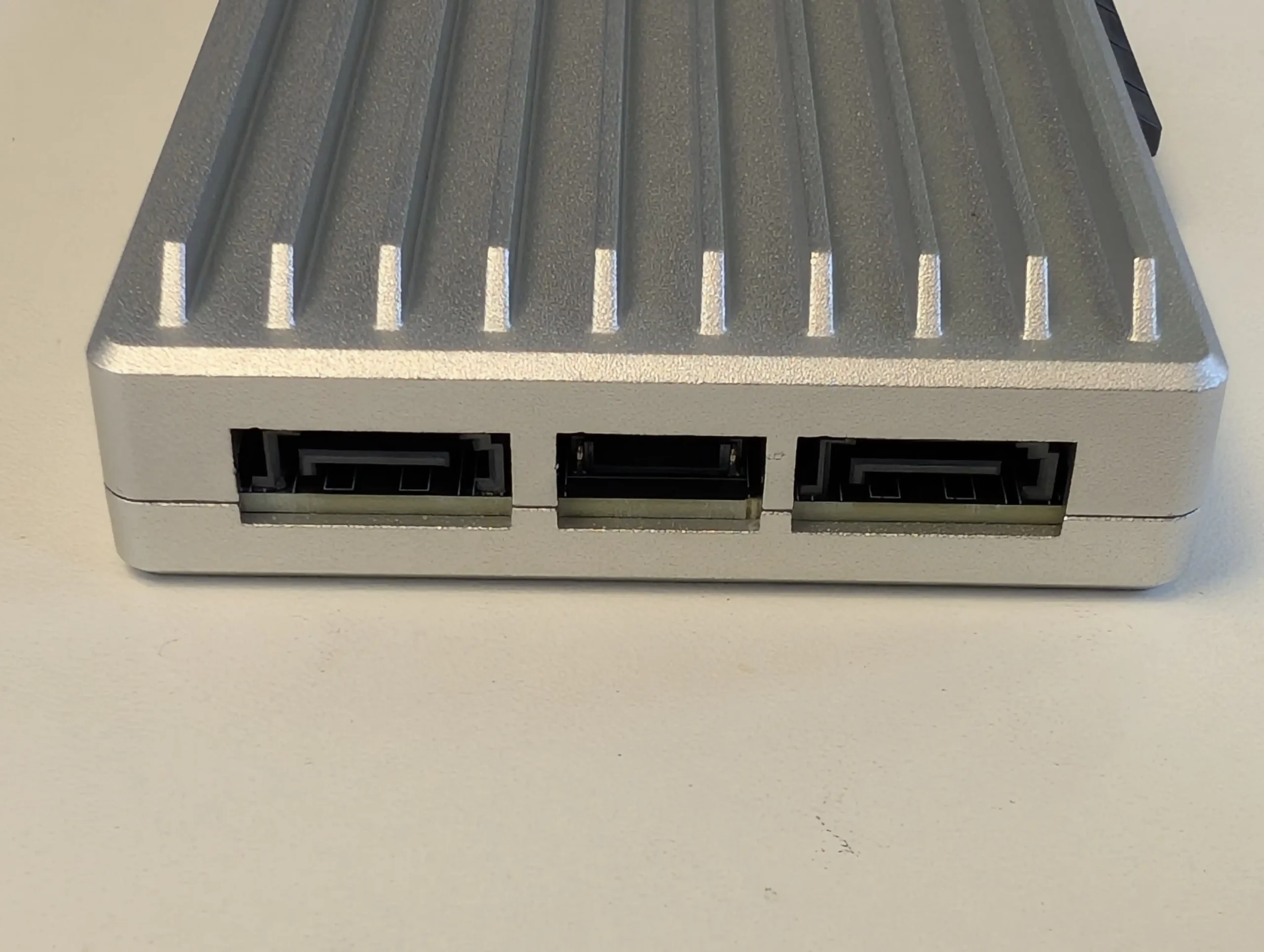
The PCIe slot includes a pre-cut section to accommodate longer cards, allowing for flexibility even in this small form factor. IceWhale also includes eco-friendly packaging, a detail that reflects both brand identity and attention to user experience. A cardboard insert allows users to hold the board upright alongside drives, useful for initial setup before a case is selected.
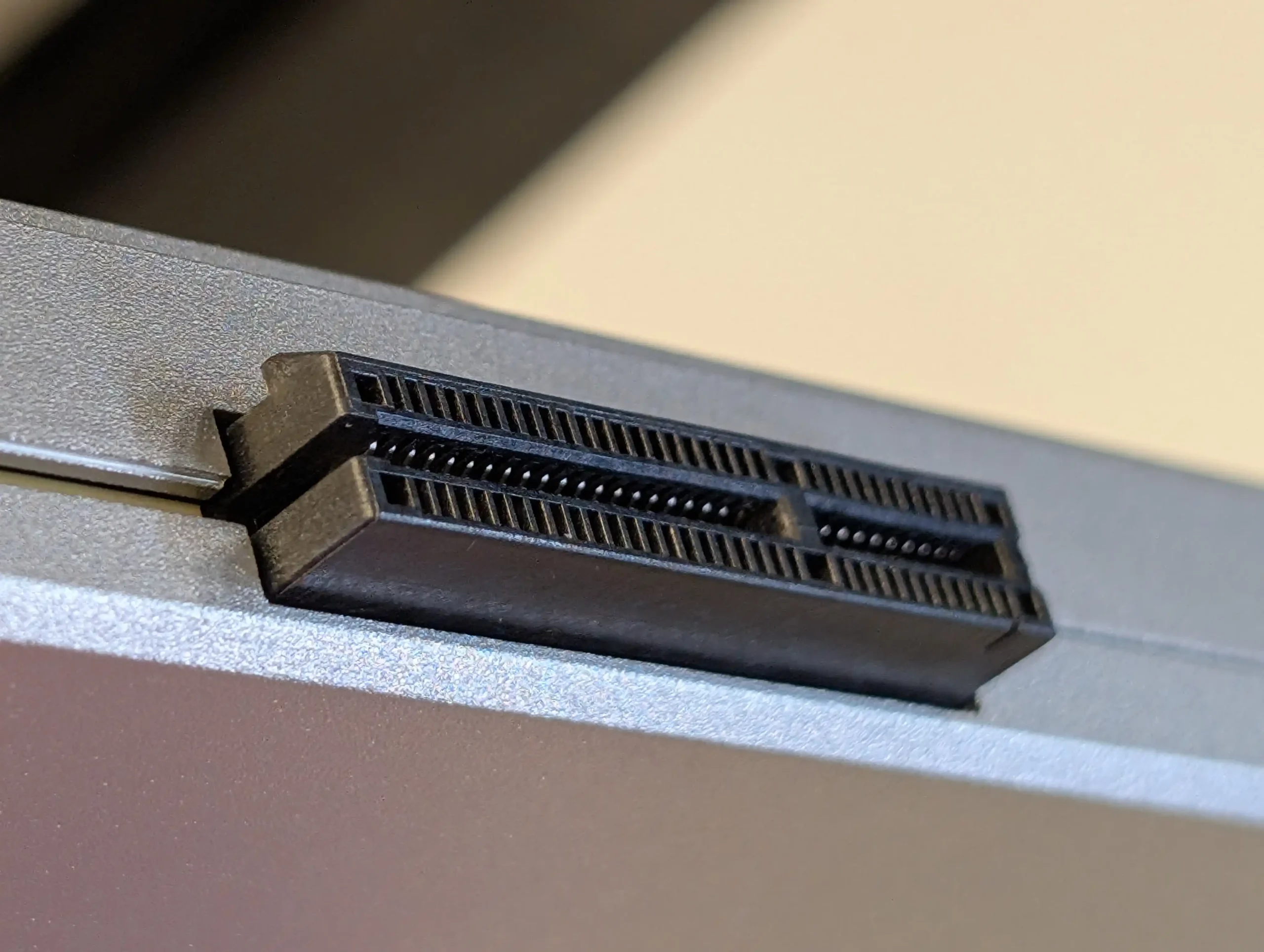
Optional accessories like a SATA adapter board with combined data/power connectors and third-party-compatible drive cages help complete the DIY experience. However, there are some practical limitations to consider: the soldered RAM means users must carefully plan for memory demands, and the internal storage, while functional, will not satisfy users looking for fast OS performance.
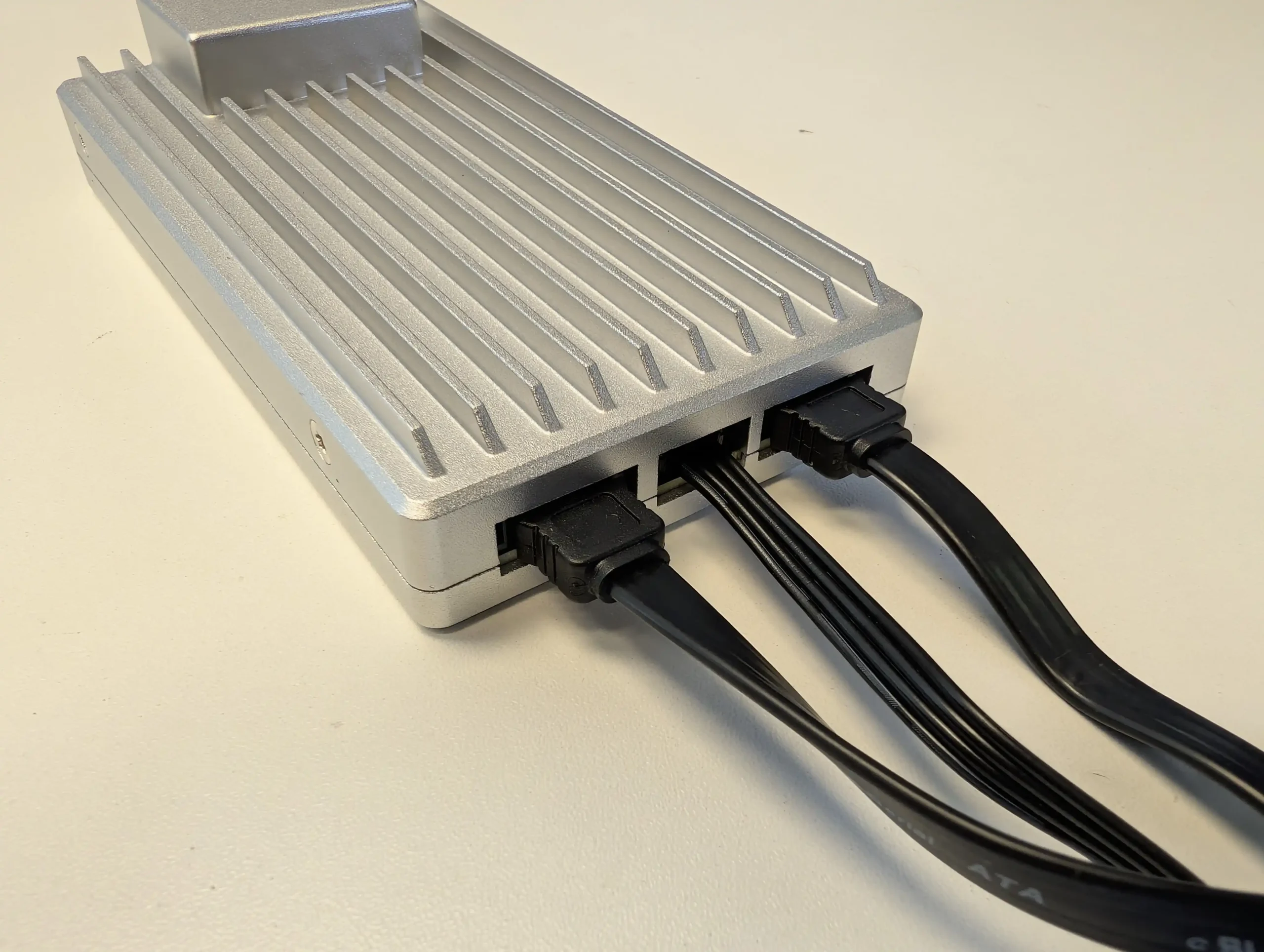
At the core of the ZimaBoard 2 is the Intel N150 processor, part of Intel’s Twin Lake architecture, offering four cores with a base clock that boosts up to 3.6GHz. This chip represents a significant step forward compared to the Celeron N3450 used in the original ZimaBoard, delivering better single-thread and multi-thread performance while maintaining a low 6W TDP.
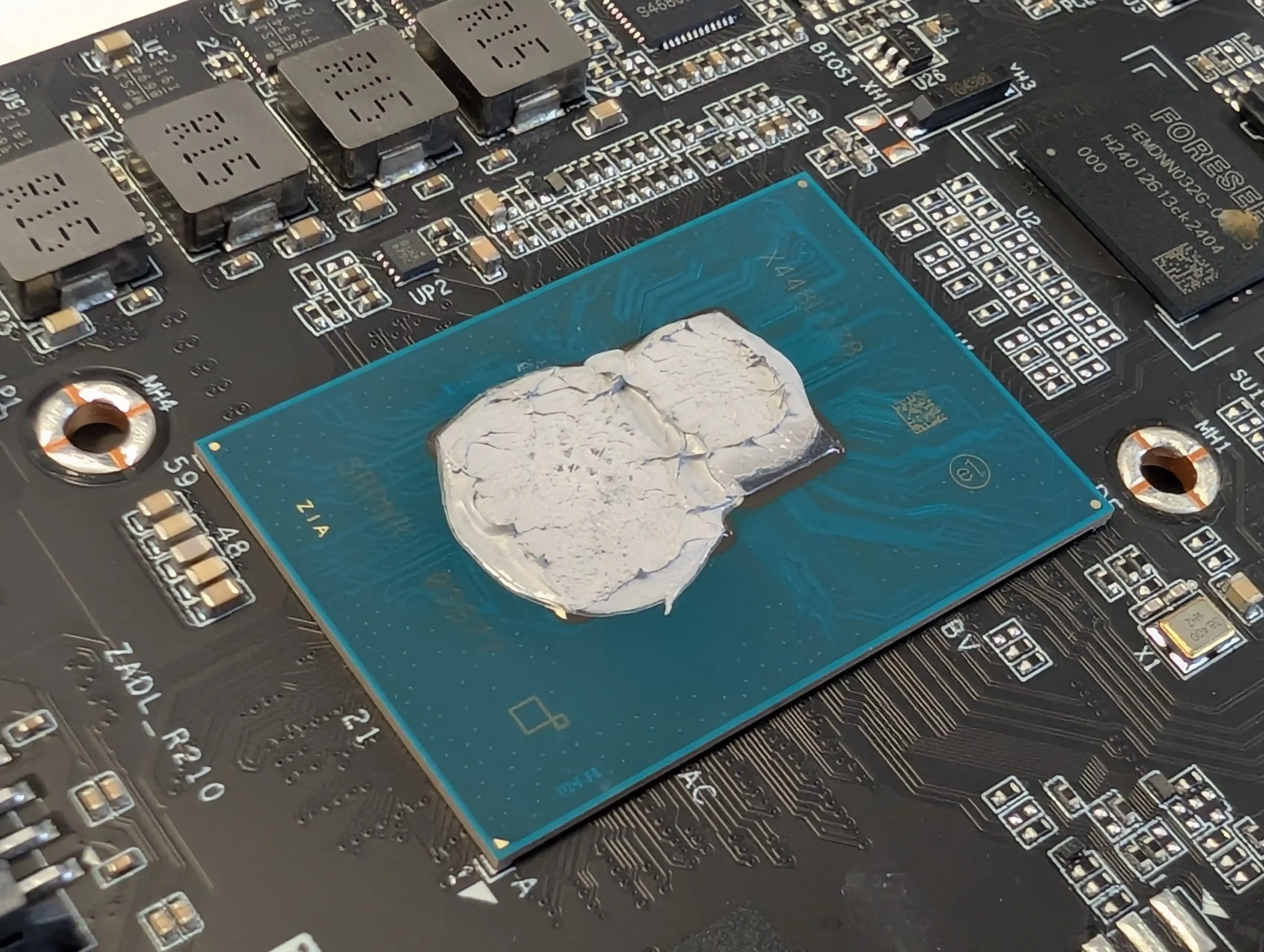
Complementing the CPU is 8GB of LPDDR5x memory clocked at 4800MHz. While the use of fast memory is a welcome improvement, the limitation lies in its soldered nature—users cannot expand beyond this capacity.
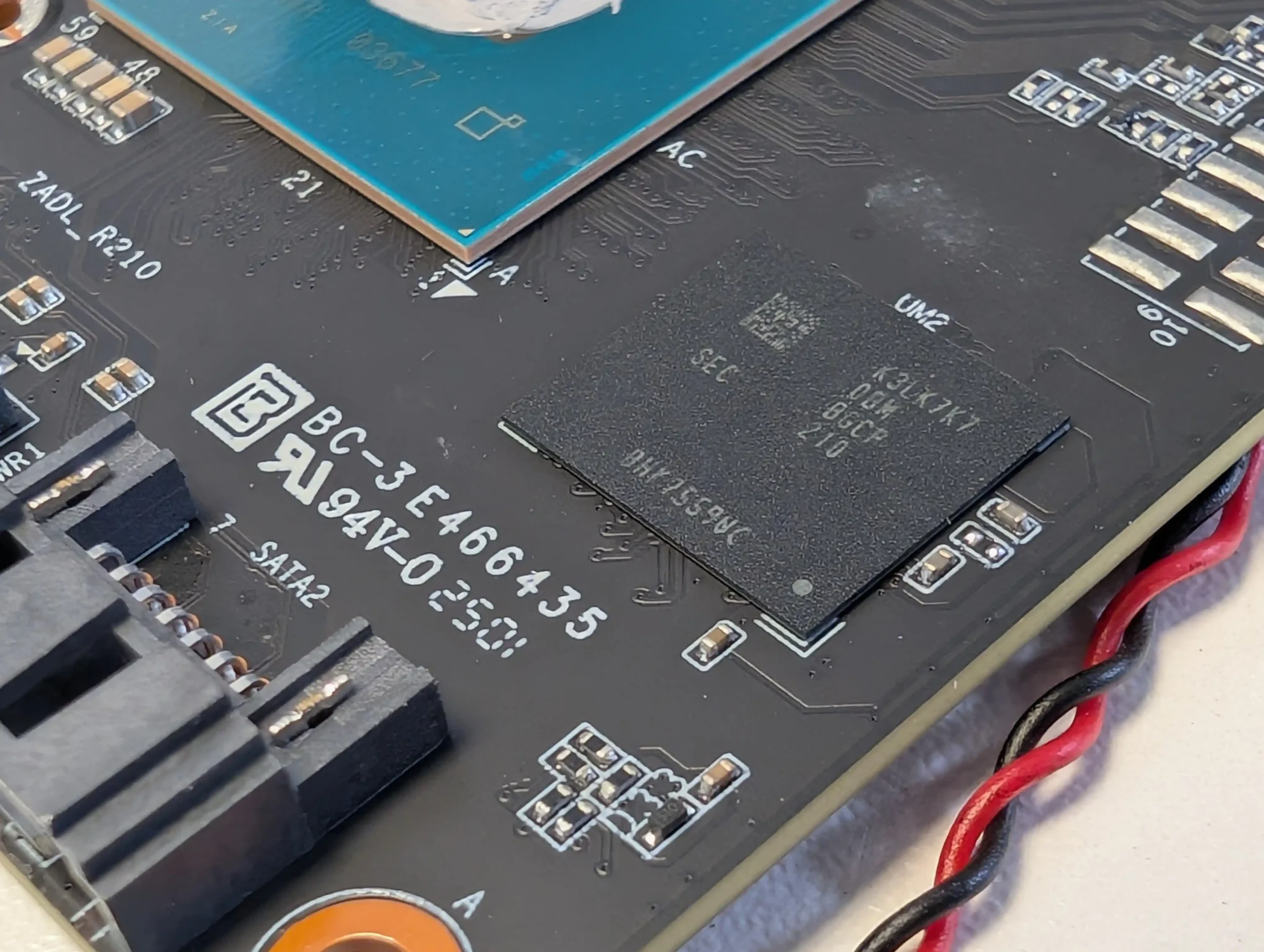
This decision may be acceptable for light workloads such as running a Plex server, Docker containers, or Home Assistant, but it could become a bottleneck for users planning to run multiple VMs or resource-heavy services. The N150 CPU does support hardware virtualization and Intel AES-NI, which is essential for tasks like encrypted storage or virtual machine deployment.
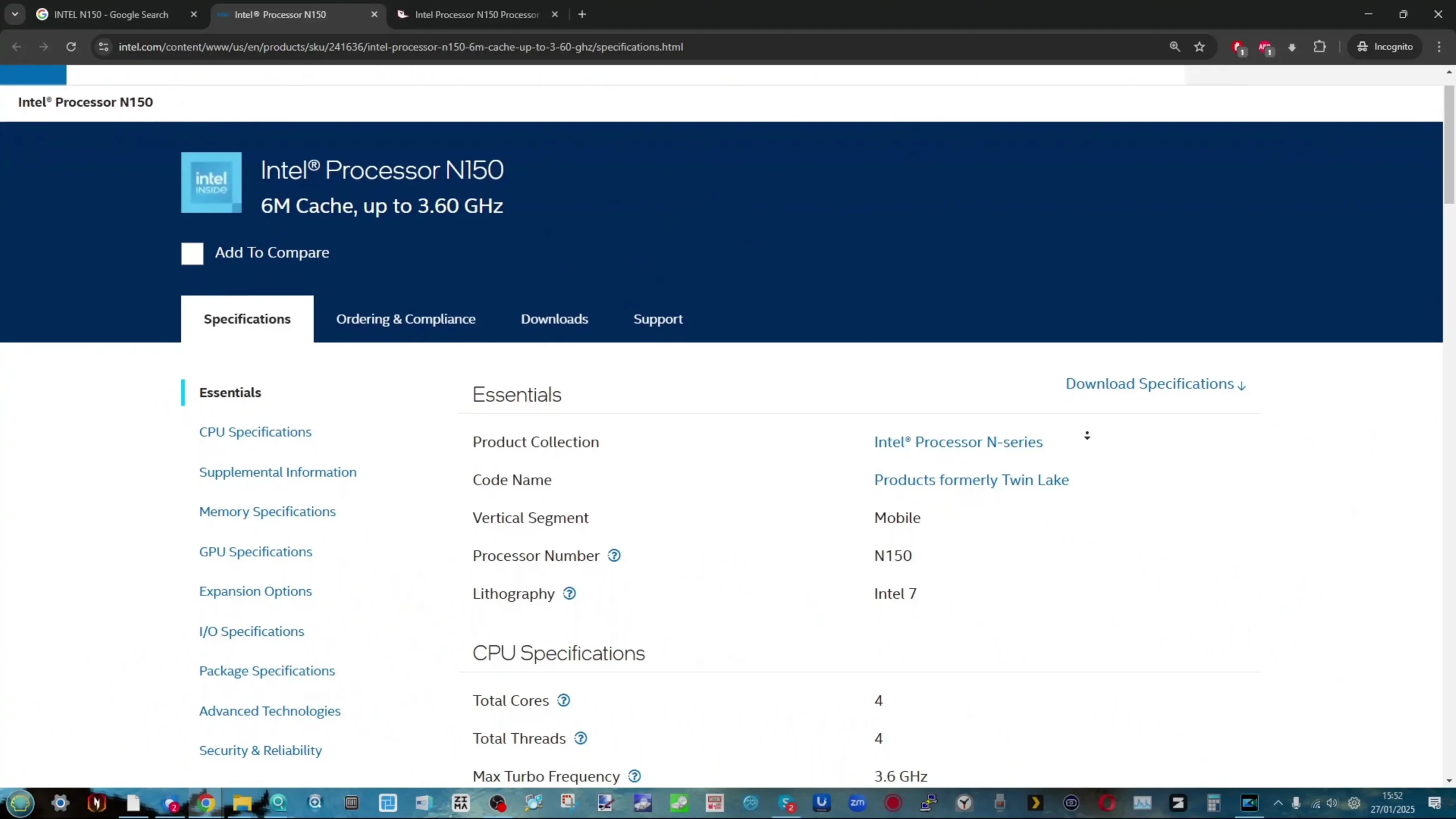
In testing scenarios, the CPU delivered solid performance across typical tasks, and managed to keep up during multi-tasked environments with multiple services active. However, users with ambitions for more demanding applications will need to balance those expectations against the non-upgradable memory ceiling.
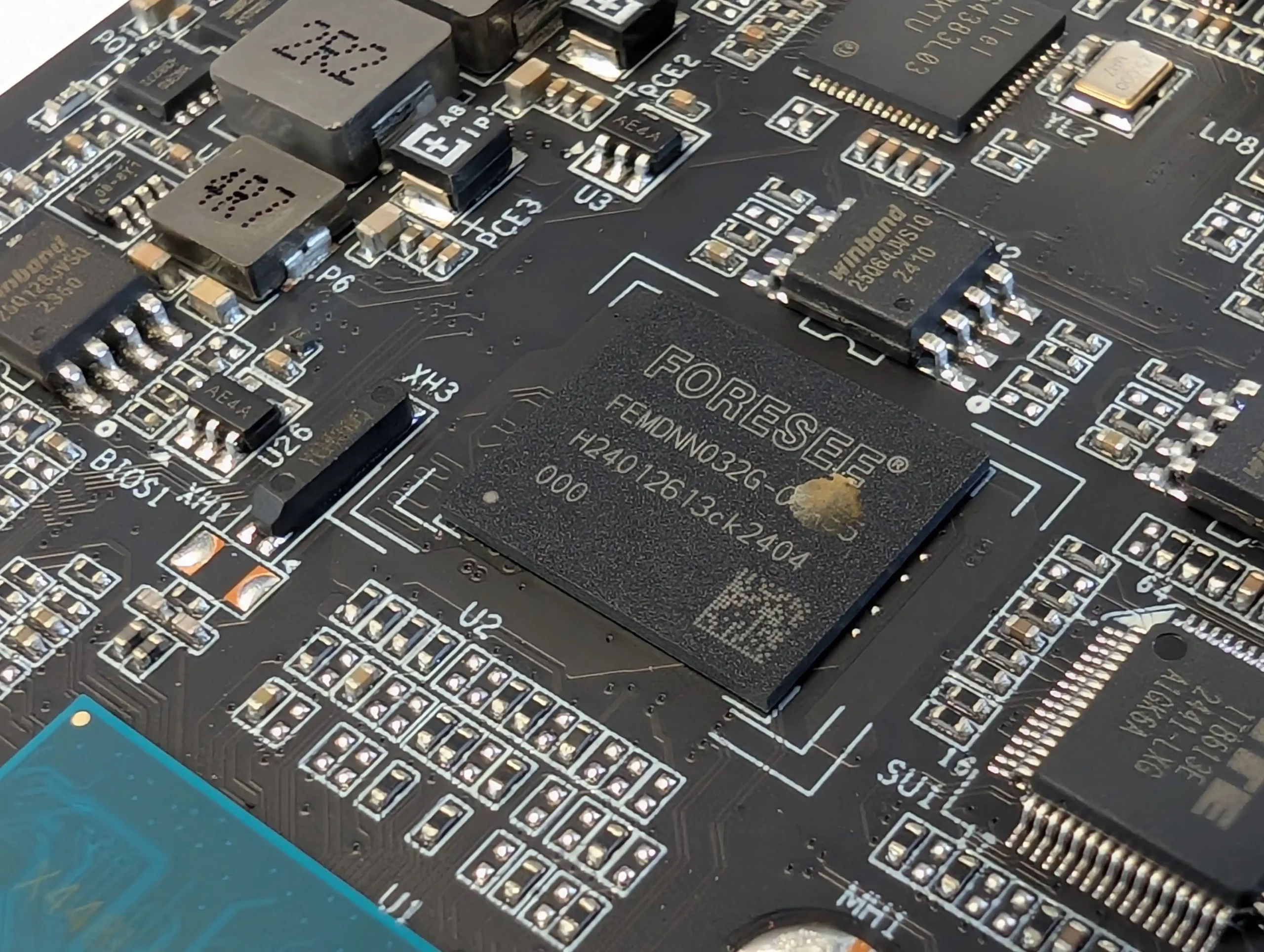
ZimaBoard 2 comes with 32GB of onboard eMMC storage, a choice that is both practical and limiting. This eMMC module is soldered to the board and is intended to house ZimaOS out of the box, giving users a ready-to-use system upon first boot. While this inclusion lowers the barrier to entry and simplifies setup for beginners, it presents performance limitations and a lack of flexibility. In testing, write speeds hovered around 35MB/s during mixed I/O operations, which is noticeably slow for tasks that involve frequent read/write cycles.
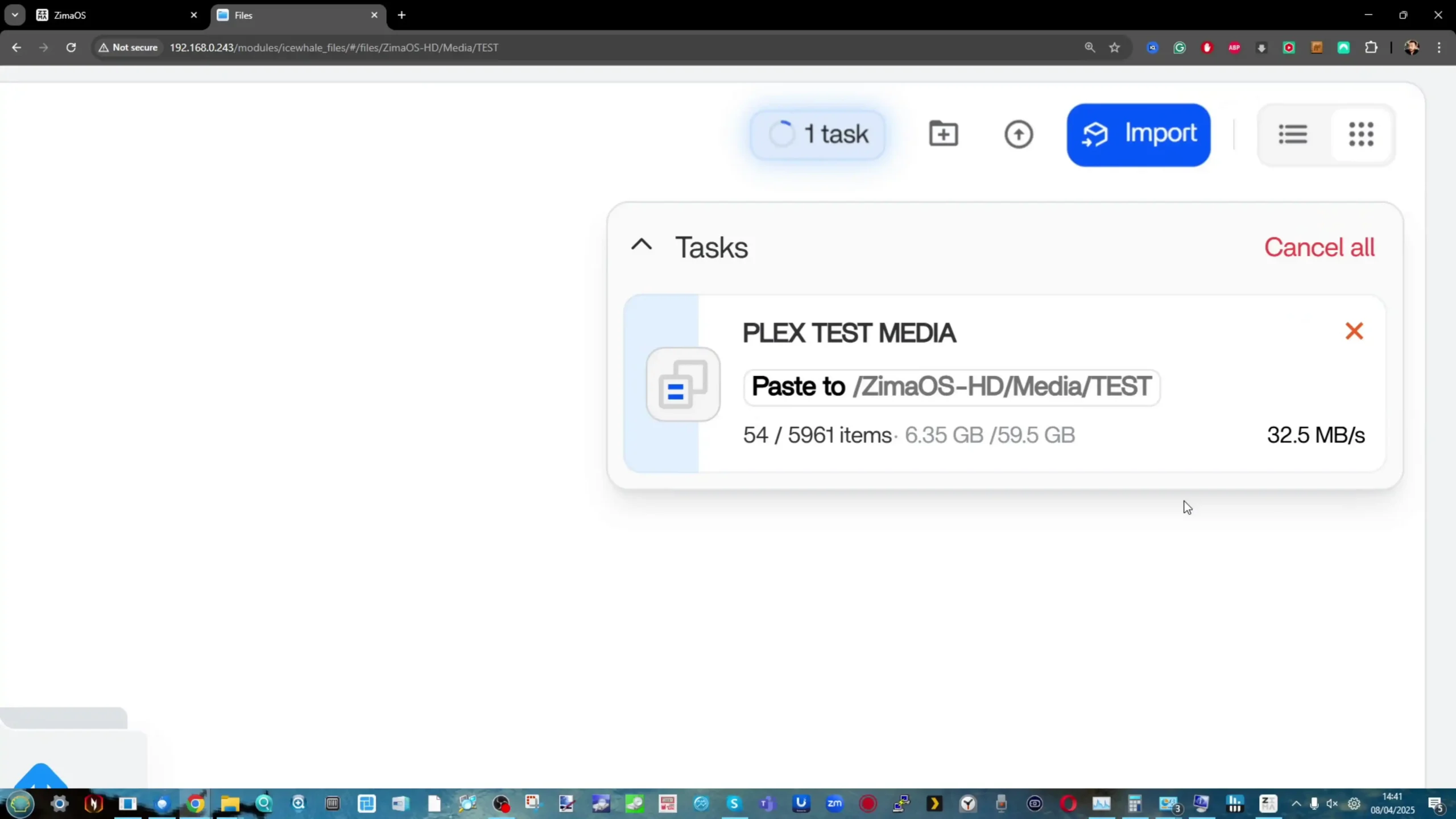
Moreover, should a user opt to install a different OS—such as TrueNAS SCALE, Proxmox, or Unraid—they would either overwrite the bundled ZimaOS or need to boot from an external USB or PCIe-based drive. Since the internal storage is neither M.2 nor socketed, it lacks the speed and modularity enthusiasts often seek in modern setups. As a result, users planning to use ZimaBoard 2 as a primary virtualization or storage server are better off supplementing it with faster storage via USB 3.1, SATA, or the PCIe slot for booting alternative OS environments. This caveat underscores a recurring theme with ZimaBoard 2: it’s well-positioned for entry-level use but requires external upgrades for more ambitious workflows.

One of the ZimaBoard 2’s most compelling features is its inclusion of two SATA 3.0 ports alongside a full PCIe 3.0 x4 slot. This greatly expands the device’s potential beyond typical SBCs, offering users a reliable way to build custom NAS setups, integrate high-speed NVMe storage, or even install networking and accelerator cards. During testing, a Synology combo card featuring two M.2 NVMe slots and a 10GbE Ethernet port was installed in the PCIe slot. The board successfully recognized all interfaces, demonstrating full PCIe compatibility and allowing throughput measurements to confirm the system could push high-bandwidth traffic.
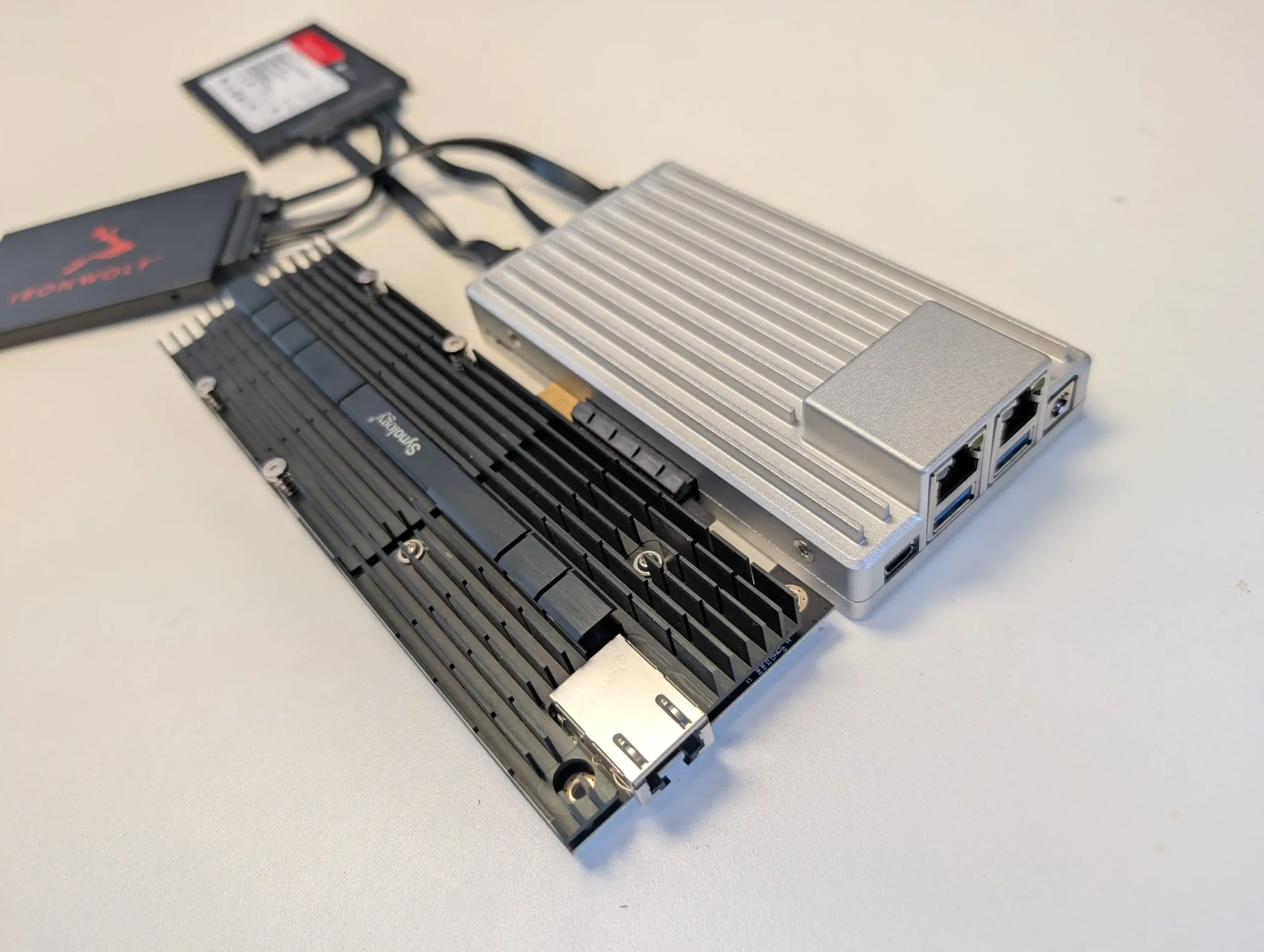
With up to 4GB/s of bandwidth over PCIe, users can install expansion cards for fast storage, additional networking, or even compute offloading—although the small form factor means thermal and power considerations become important quickly. The SATA ports, while standard in speed, proved perfectly functional for connecting 2.5″ SSDs or traditional HDDs. IceWhale’s own accessories, like SATA power adapters and drive cages, help streamline this process, though third-party solutions work just as well.
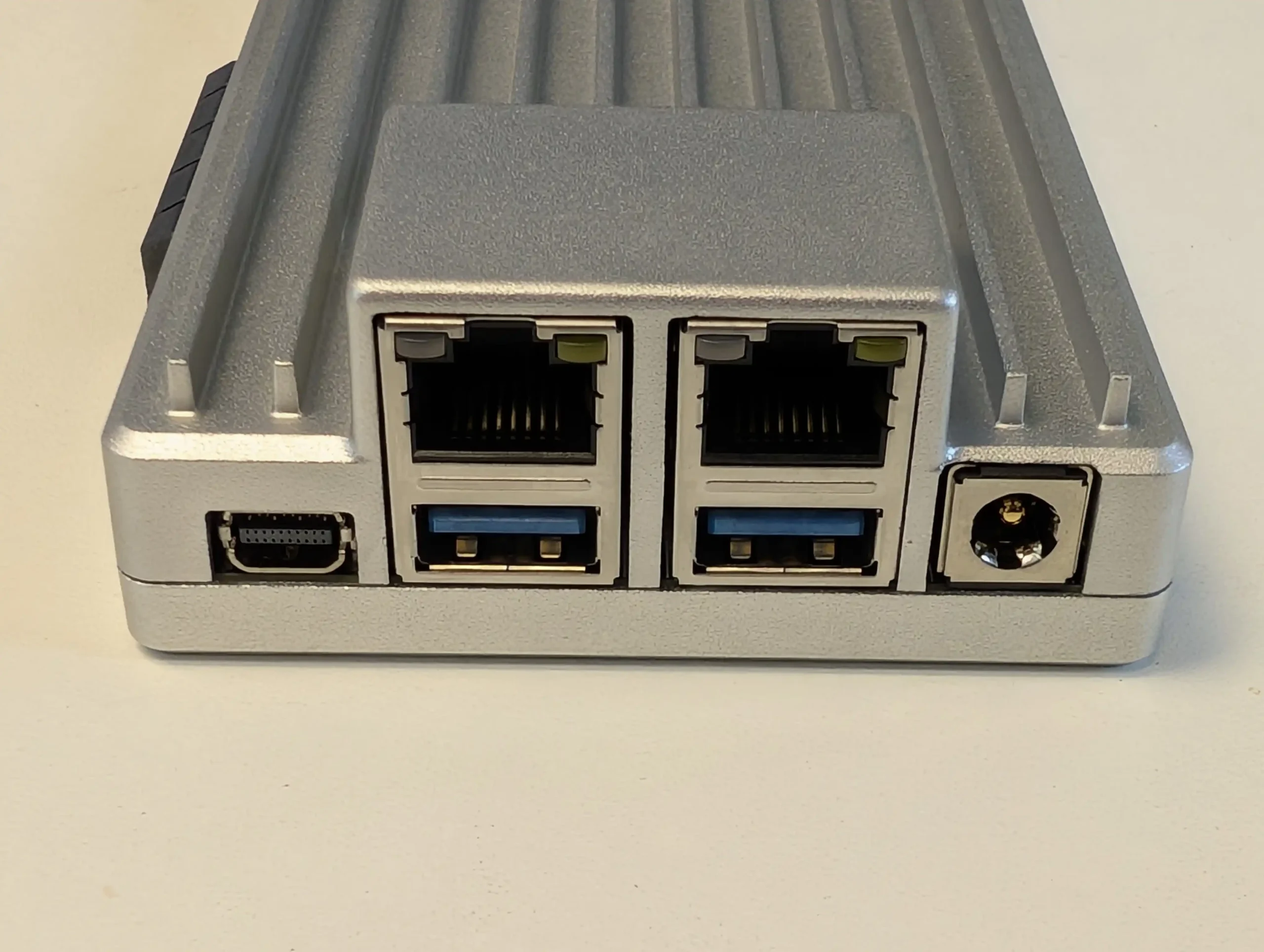
For users aiming to transform this board into a flexible micro-server, this PCIe slot is a gateway to many possibilities and a key reason ZimaBoard 2 stands out in its category.
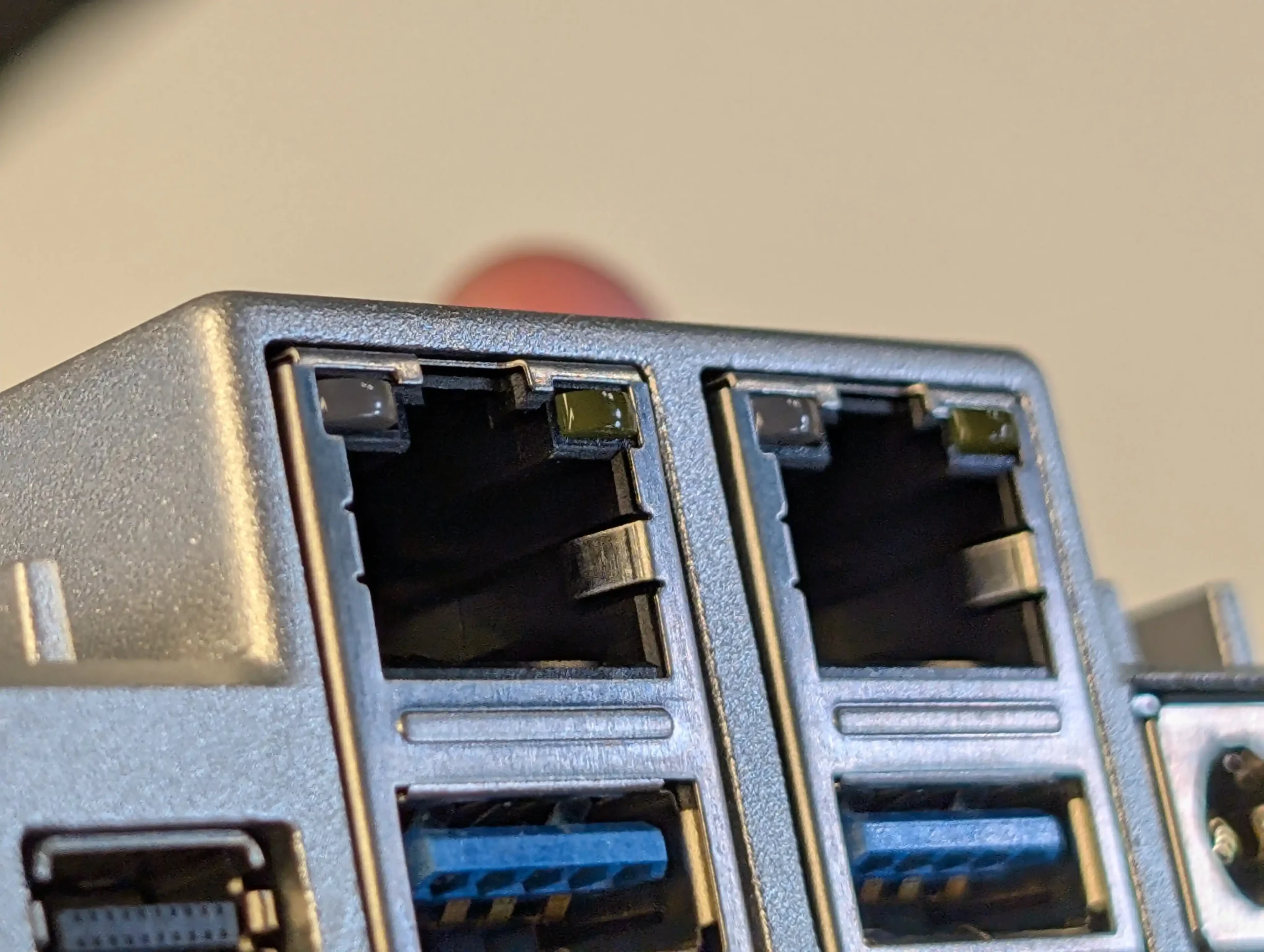
In terms of networking, the ZimaBoard 2 comes equipped with two 2.5GbE Ethernet ports, both powered by Intel chipsets—a choice that emphasizes reliability and driver compatibility across various operating systems. These ports are more than just a checkbox feature; they performed reliably under load and achieved full link saturation during file transfer tests and when used in conjunction with PCIe expansion.
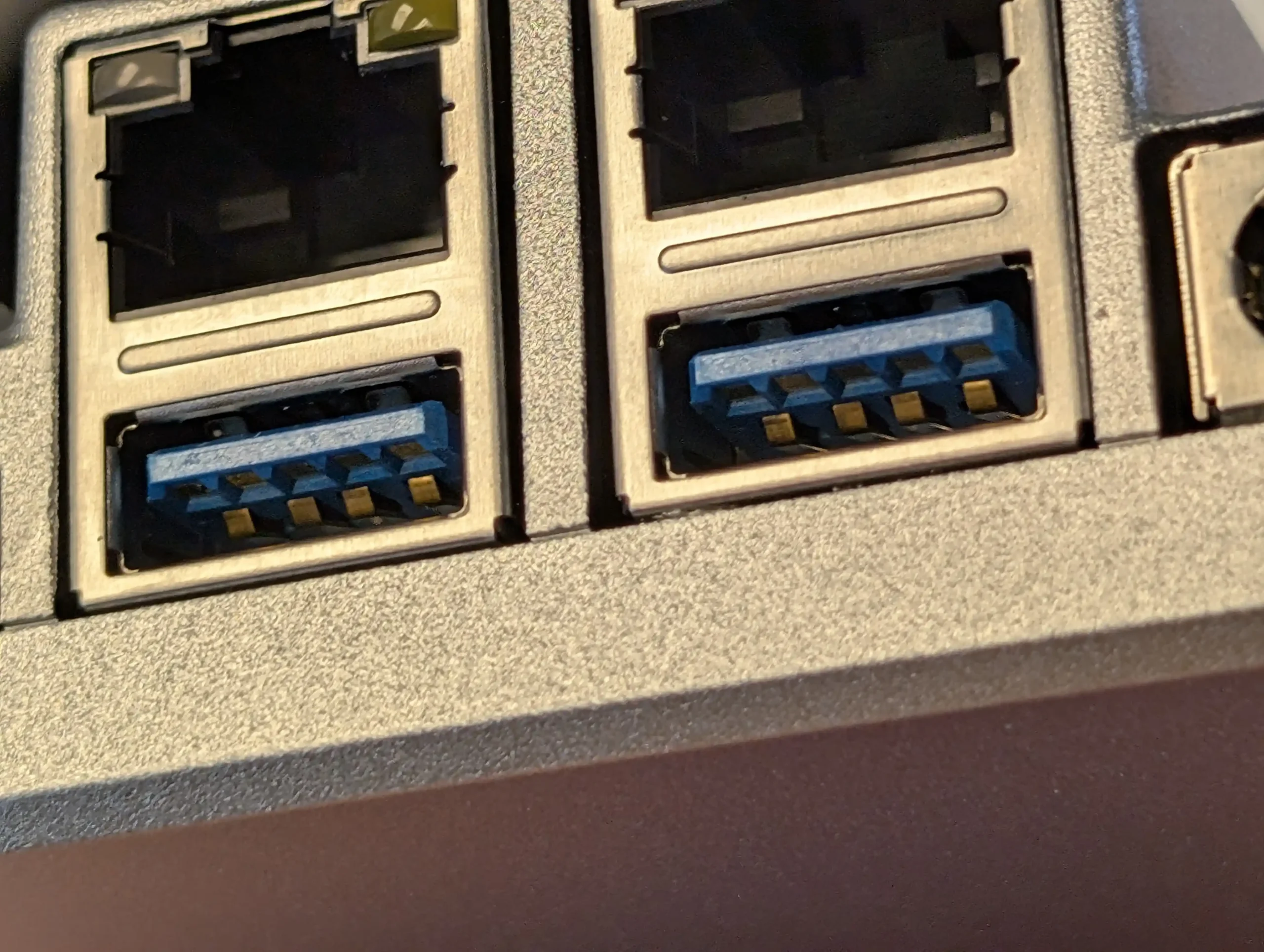
In more advanced setups, users can configure bonding or load balancing to maximize throughput or redundancy. Additionally, there are two USB 3.1 ports for attaching external drives, peripherals, or USB-bootable OS images.
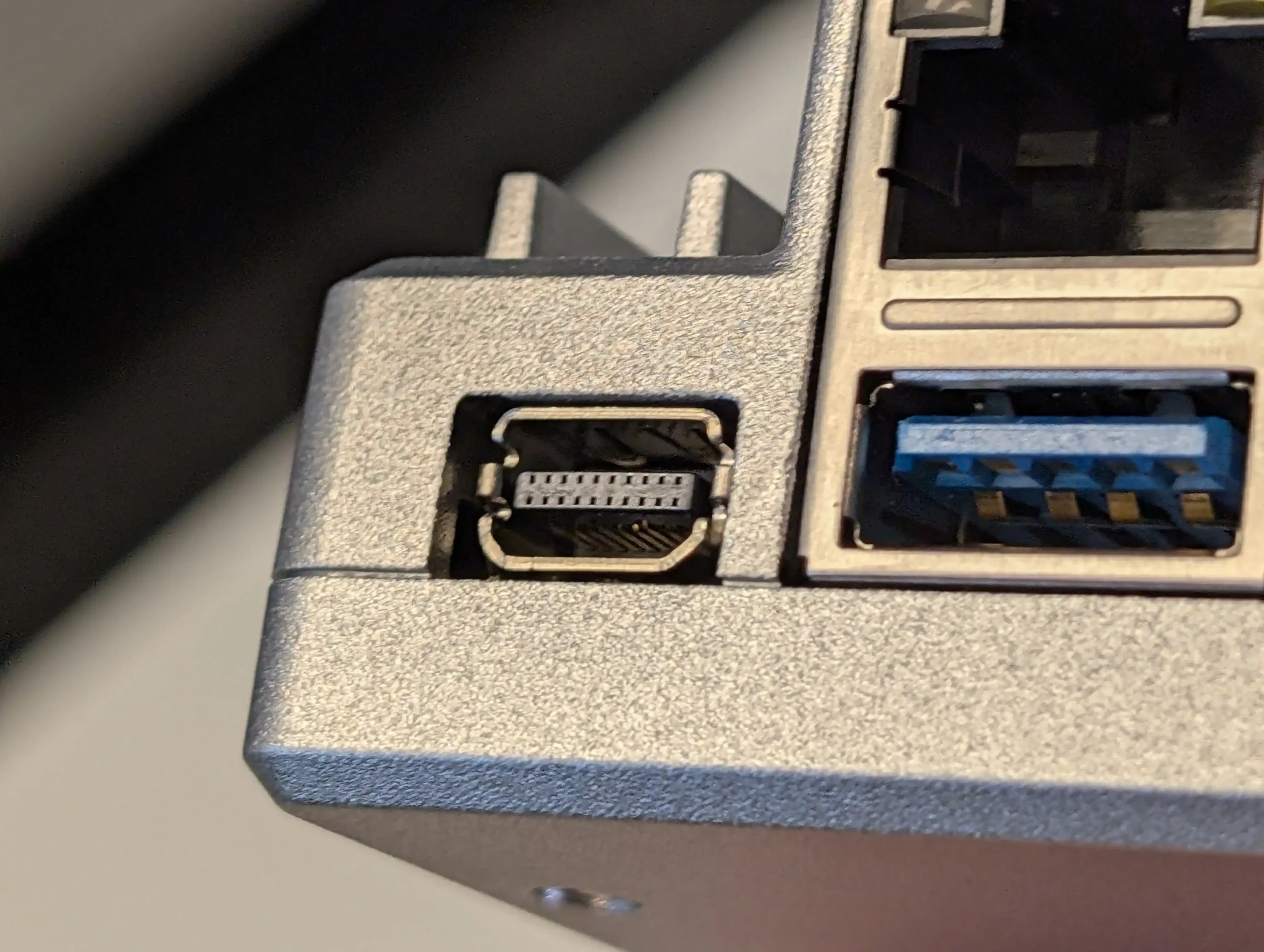
The inclusion of a Mini DisplayPort 1.2 allows for 4K video output at 60Hz, which is useful for users who want to use the board as a lightweight desktop or for initial OS installation and diagnostics—though it does require an adapter to convert to standard HDMI. Notably absent is built-in Wi-Fi or Bluetooth, which aligns with its target audience of wired-first home labs and embedded installations. Overall, ZimaBoard 2 offers a well-rounded set of connectivity options that exceed expectations for its size, with the dual 2.5GbE ports making it particularly attractive for networking-focused use cases like firewalls, proxies, or containerized gateways.
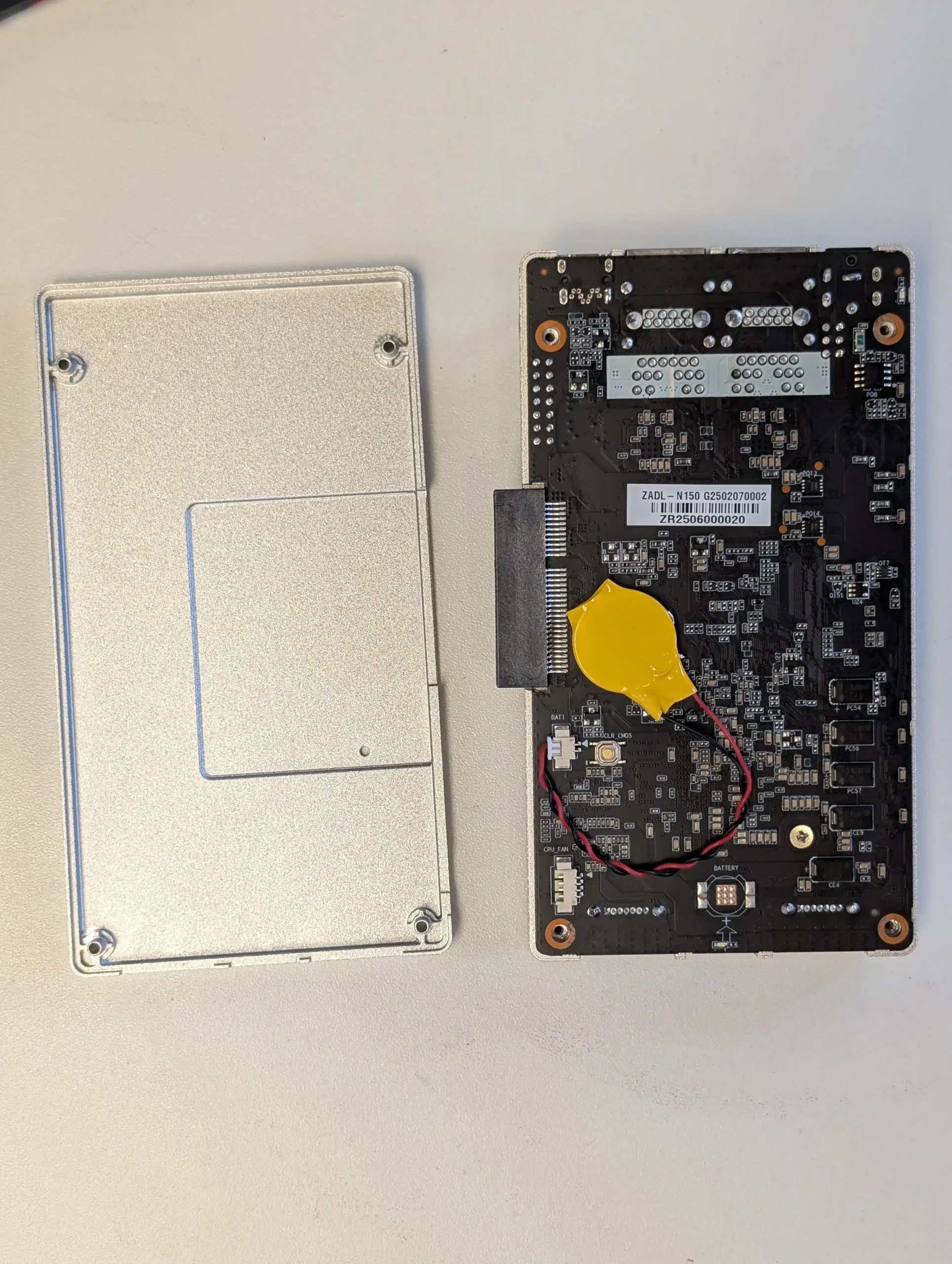
Thermal management on the ZimaBoard 2 is entirely passive, with the aluminum enclosure doubling as a heatsink to dissipate heat away from the CPU and other key components. This fanless approach results in completely silent operation, which is ideal for home or office environments where noise is a concern.
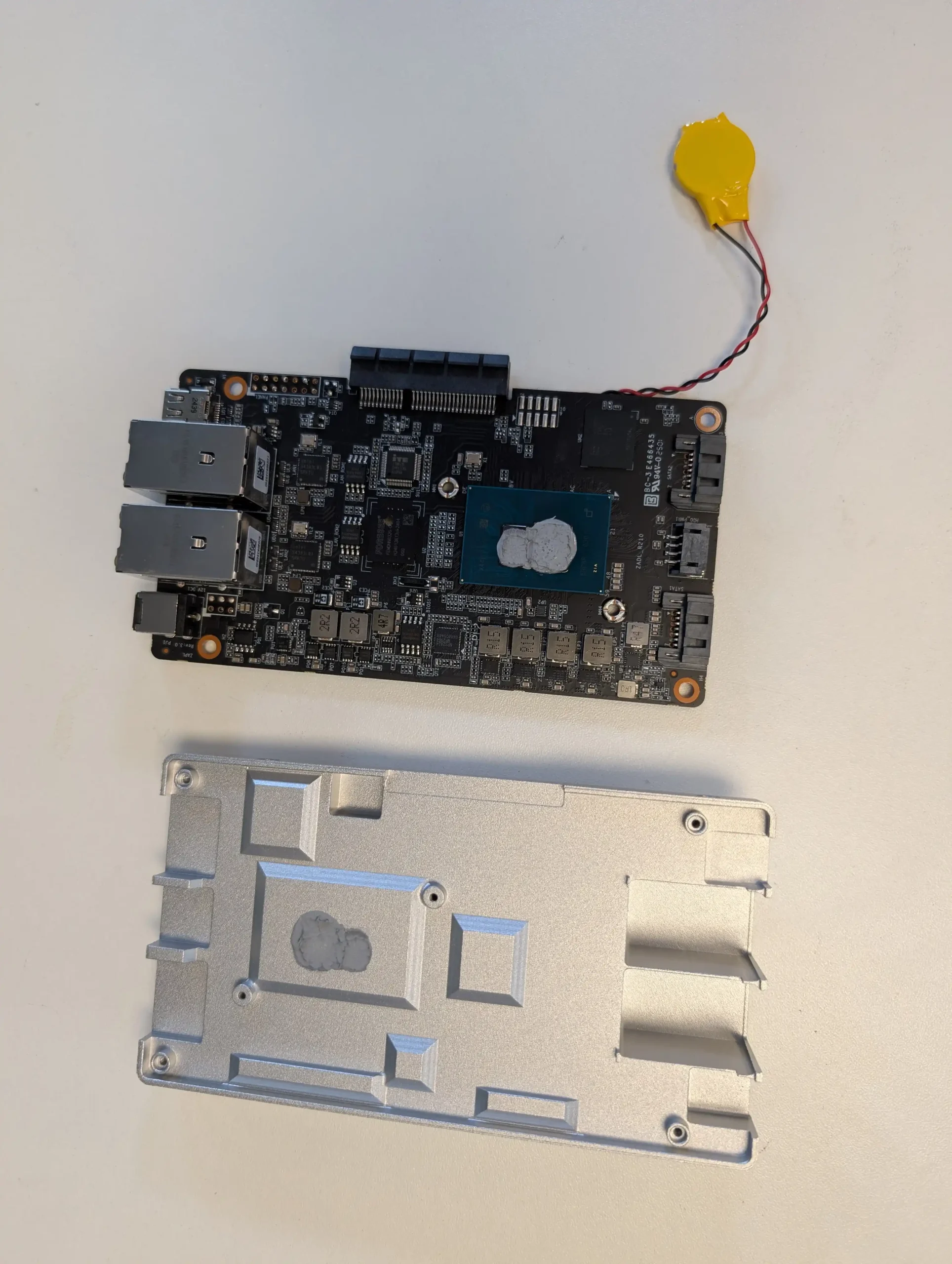
However, the trade-off is that the board’s temperature will steadily rise over time, especially in enclosed cases or cabinets with poor airflow. During idle operation, with minimal system load and attached drives in standby, temperatures hovered around 50°C after an hour, increasing slightly to 52–54°C over a 24-hour window.
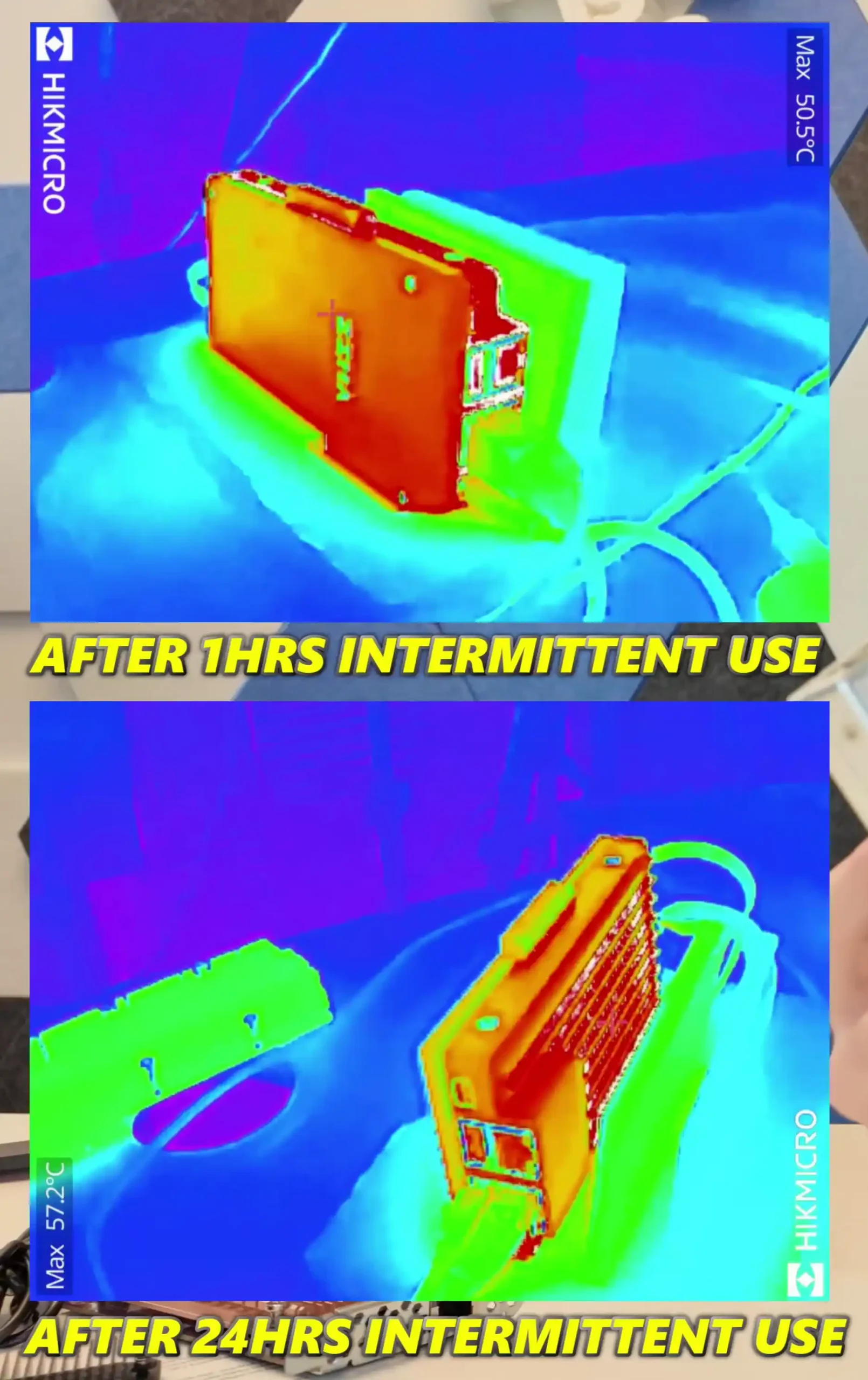
Under heavier usage—including Plex playback, VM activity, active networking, and full PCIe slot utilization—the system remained thermally stable but showed significant heat buildup. Power consumption in these high-usage scenarios peaked at approximately 39–40W, which is quite efficient given the workload.

Still, users planning to run the board continuously under load are strongly encouraged to introduce active airflow or leave the system in a well-ventilated space. The all-metal build is a clever and minimalist solution, but it has practical limitations that users need to plan for—especially if operating in warmer environments or planning to enclose the unit in a tight chassis.
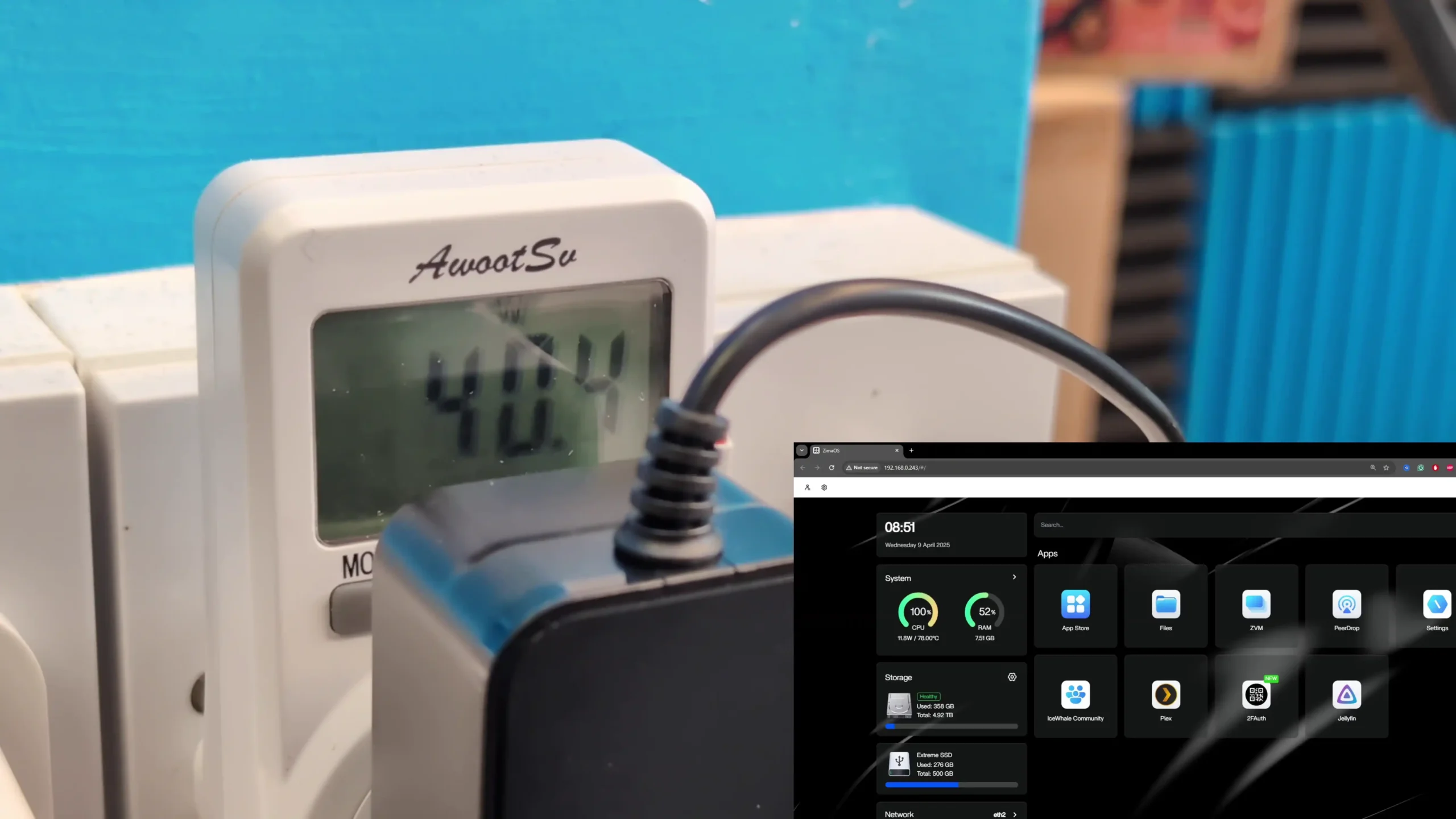
When put through real-world workloads, the ZimaBoard 2 delivered performance that largely aligned with its specs and design goals. File transfers over the onboard 2.5GbE interfaces reached full saturation in controlled conditions, proving the CPU and I/O subsystems are capable of pushing maximum throughput without significant bottlenecks. PCIe expansion further unlocked performance potential—especially with the Synology combo card, where simultaneous NVMe and 10GbE performance were tested. While NVMe read speeds reached up to 1.6GB/s, write speeds hovered around 500–700MB/s depending on traffic from the 10GbE port.
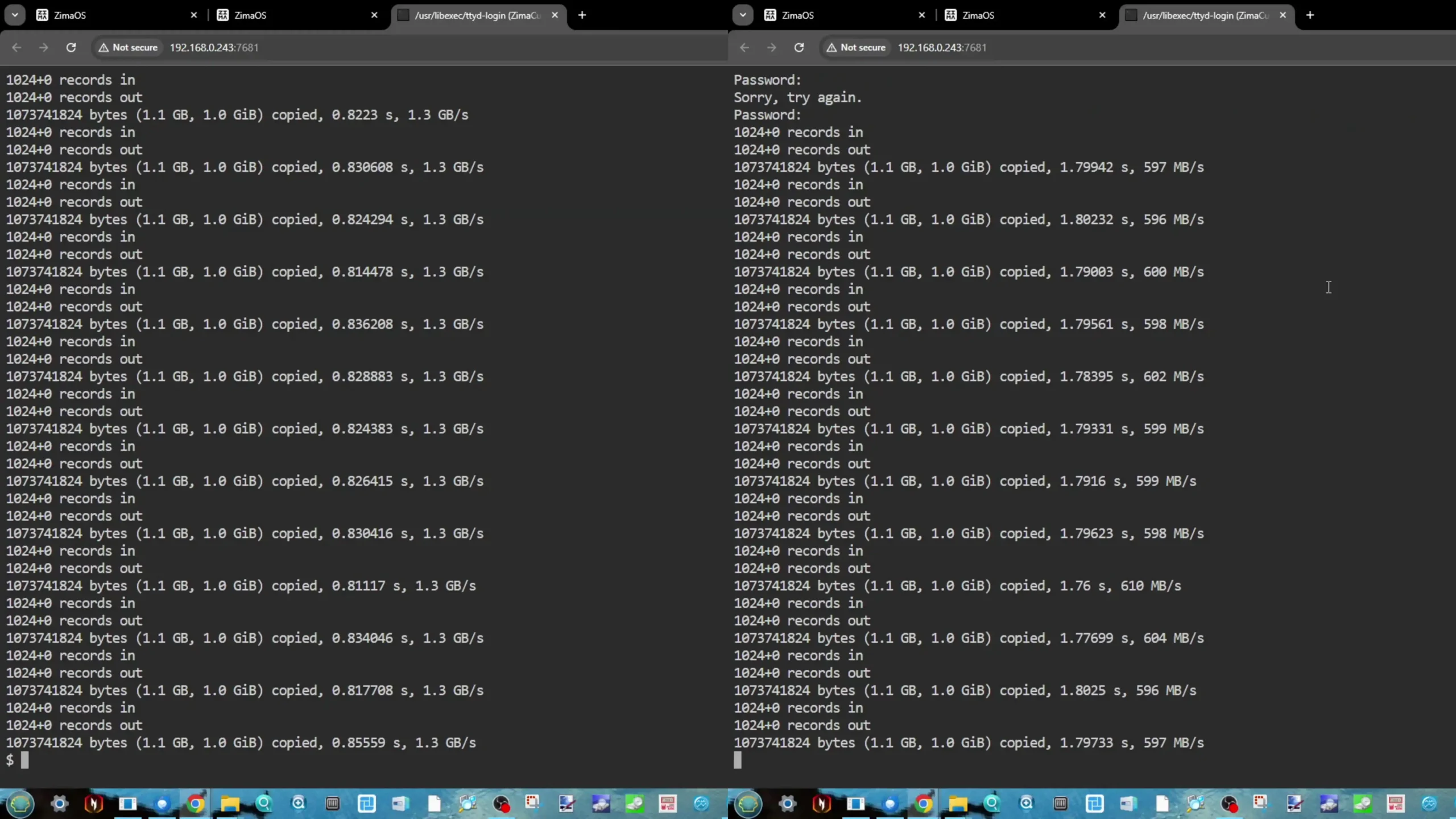
These variances are expected, given shared PCIe lanes and bandwidth contention, but overall results were respectable. Multimedia performance was also acceptable, with Plex running smoothly and able to stream and scrape metadata while supporting light VM usage concurrently.
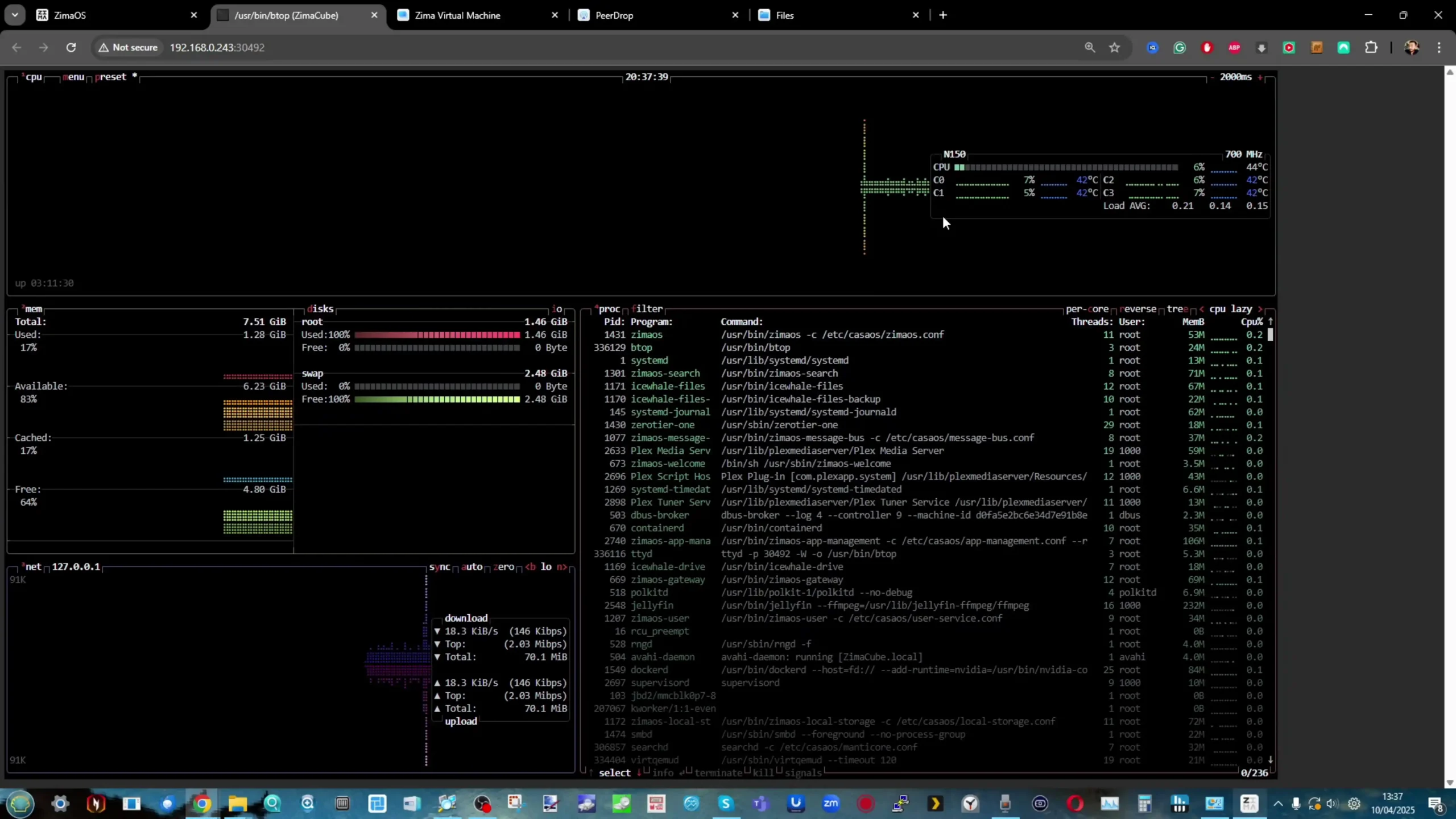
In these scenarios, RAM utilization climbed past 50% and CPU usage approached 100%, but the board remained operational and responsive. It’s clear that ZimaBoard 2 is well-suited to low-to-moderate workloads, and can punch above its weight with strategic expansion. However, pushing it into more demanding territory—like simultaneous virtualization, AI inferencing, or high-speed file serving across multiple interfaces—will begin to test its limits.
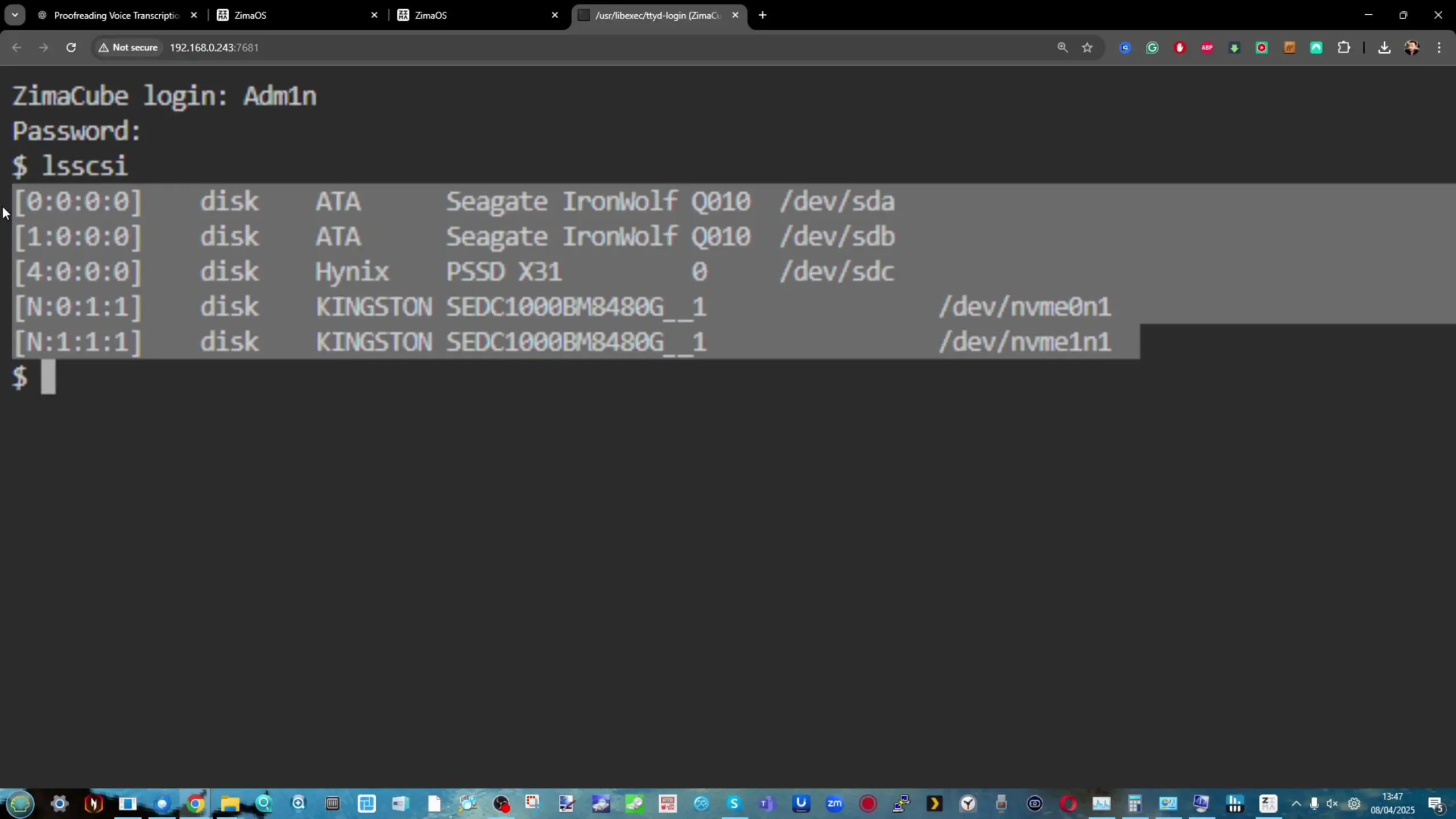
The lack of active cooling makes thermal planning essential for any serious workload. But overall, the ZimaBoard 2 feels polished and reliable, with a design philosophy that caters well to its core audience of DIY server builders and edge compute experimenters.
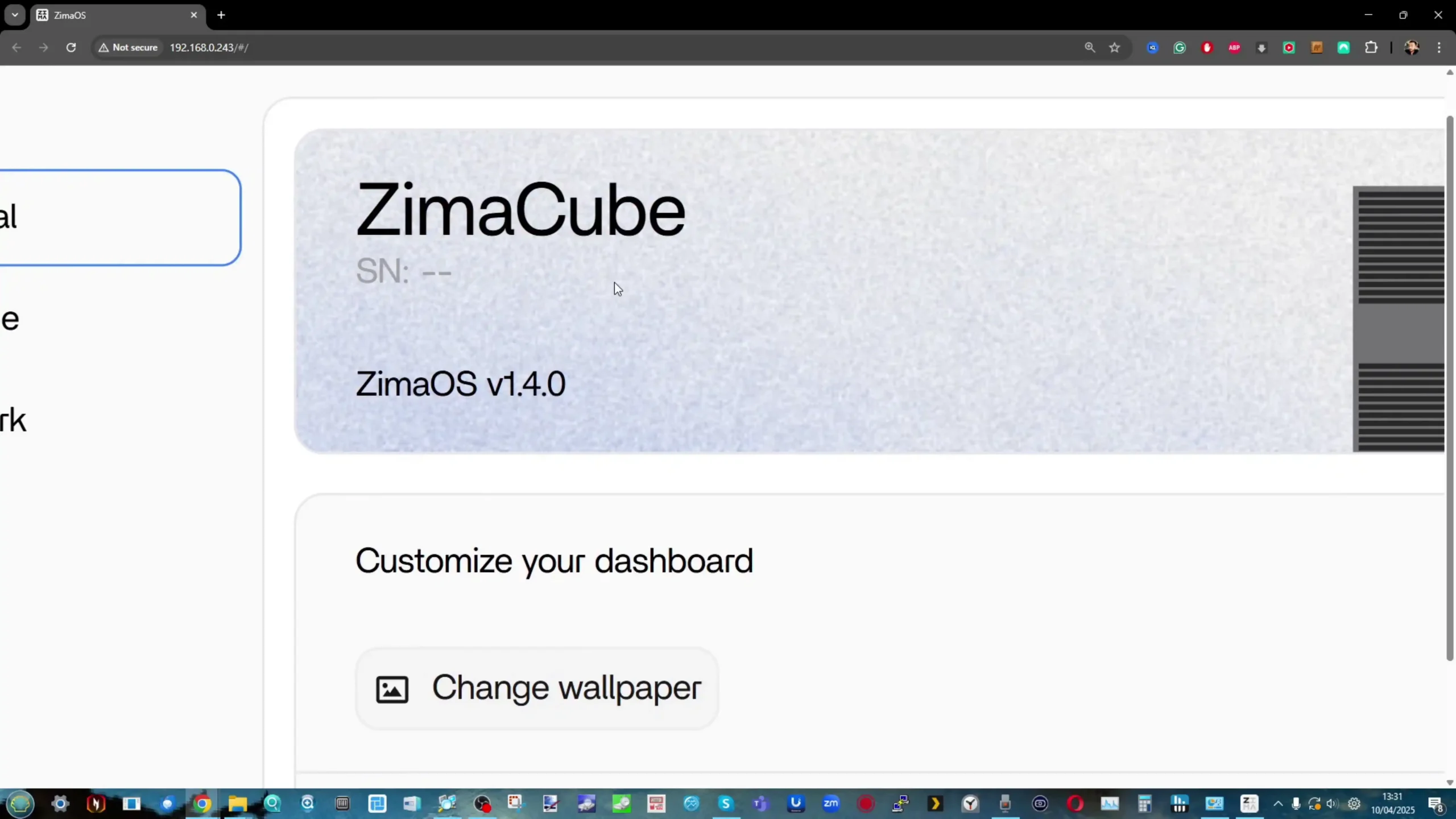
ZimaBoard 2 ships with ZimaOS, a custom-built operating system from IceWhale that is based on CasaOS—a lightweight, open-source platform designed for simplicity and ease of deployment. ZimaOS retains the core principles of CasaOS but adds refinements tailored to the Zima ecosystem, particularly features that emerged during development of the more powerful ZimaCube. The out-of-the-box experience is beginner-friendly, offering an intuitive web dashboard called “LaunchPad,” which centralizes access to installed applications, system controls, and file management.
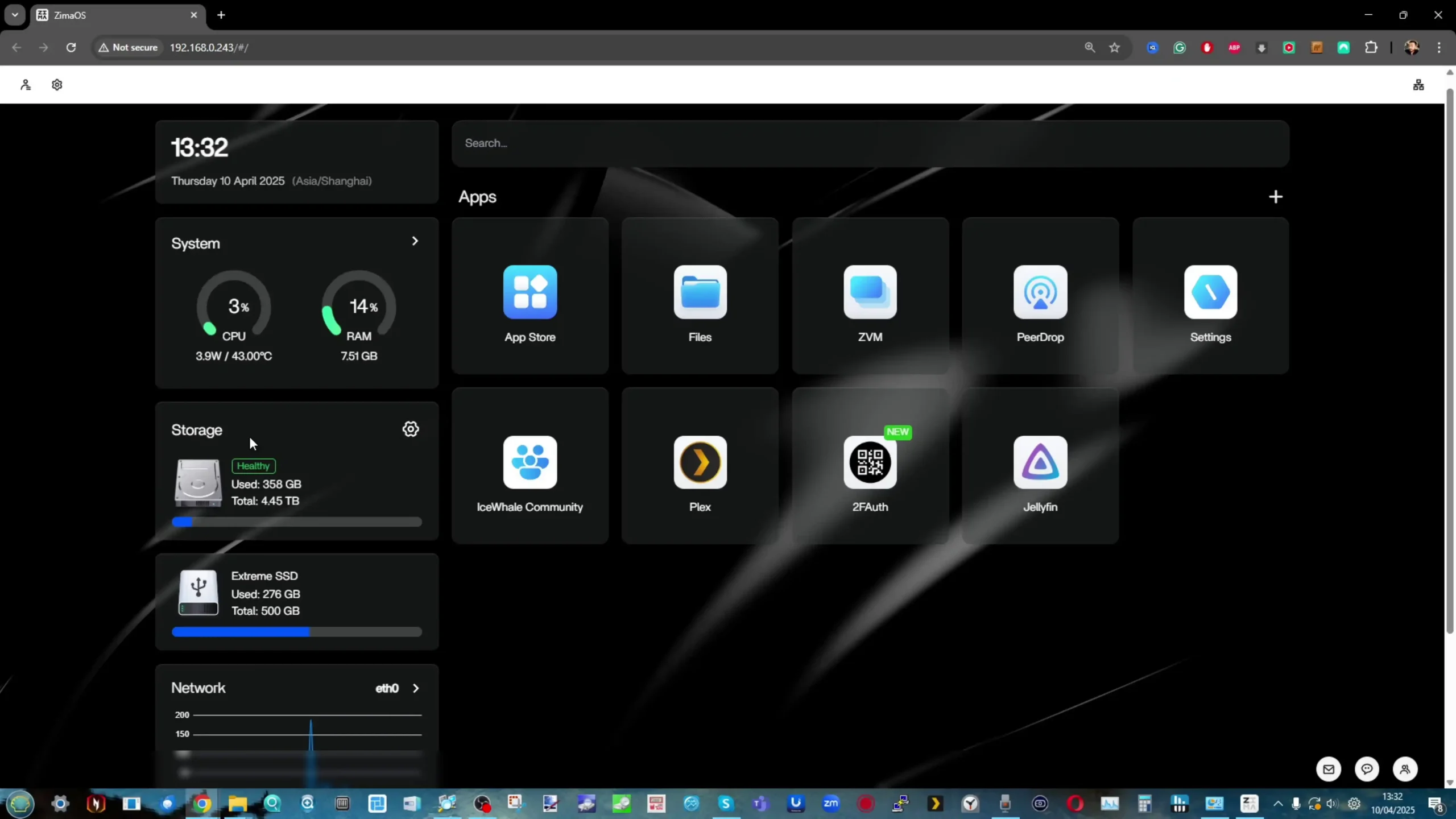
ZimaOS is pre-installed on the board’s eMMC storage, enabling immediate setup without requiring users to flash a drive or download additional software. Despite the modest resources of the ZimaBoard 2, the OS performs responsively, even with several services running in parallel. The interface is clean, albeit minimalistic, focusing on usability over deep customization.

For users who are new to home servers or Docker deployments, the learning curve is surprisingly gentle. Though it lacks some of the granularity of more established platforms like OpenMediaVault or TrueNAS, it’s clear that IceWhale has designed ZimaOS to get users up and running quickly without sacrificing key functionality.
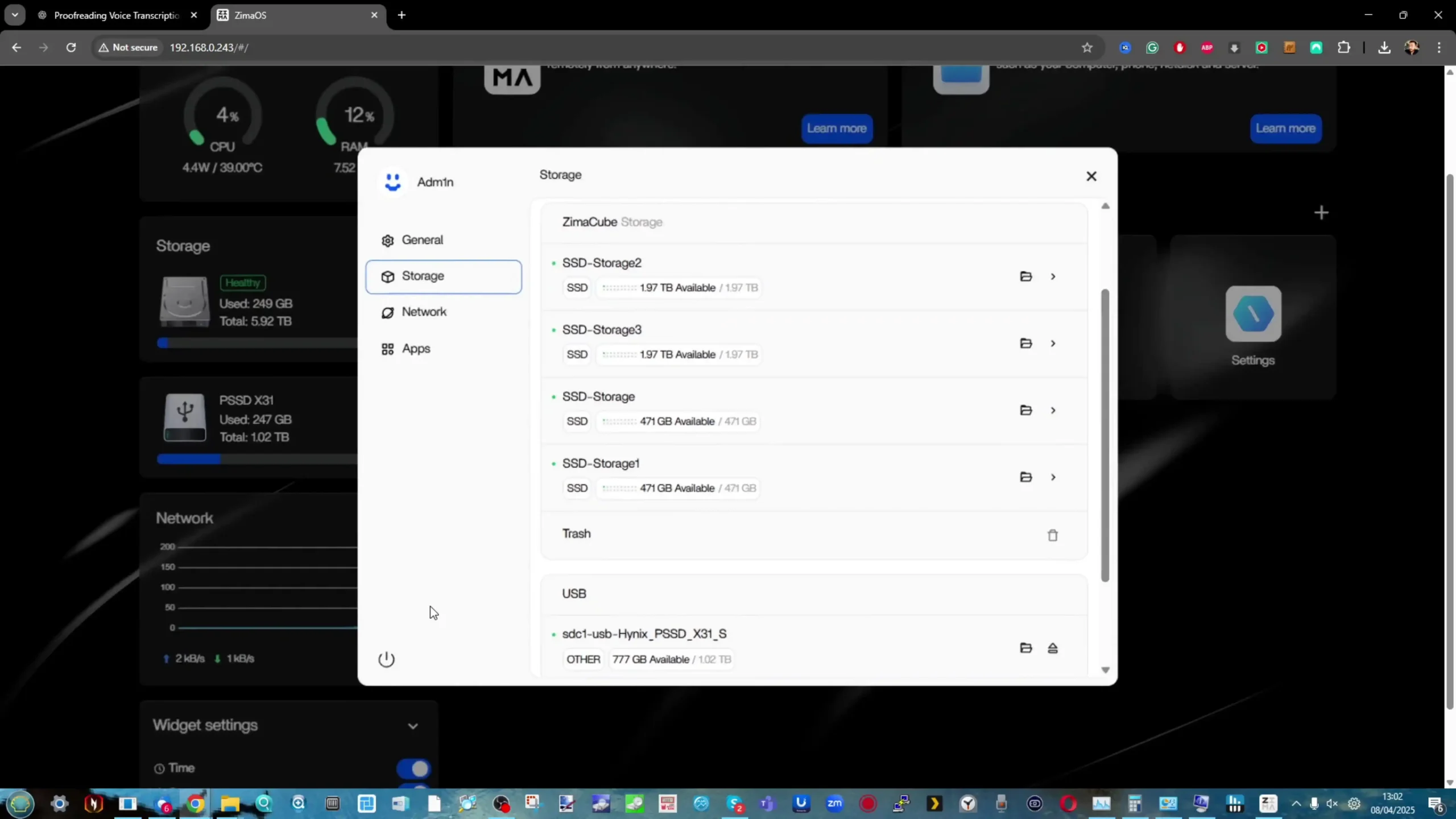
One of the more distinctive features of ZimaOS is its integrated App Store, which acts as a curated hub for Docker-based applications. Unlike traditional NAS interfaces that require command-line Docker commands or extensive Portainer configuration, ZimaOS simplifies deployment through one-click installation and automated environment setups.
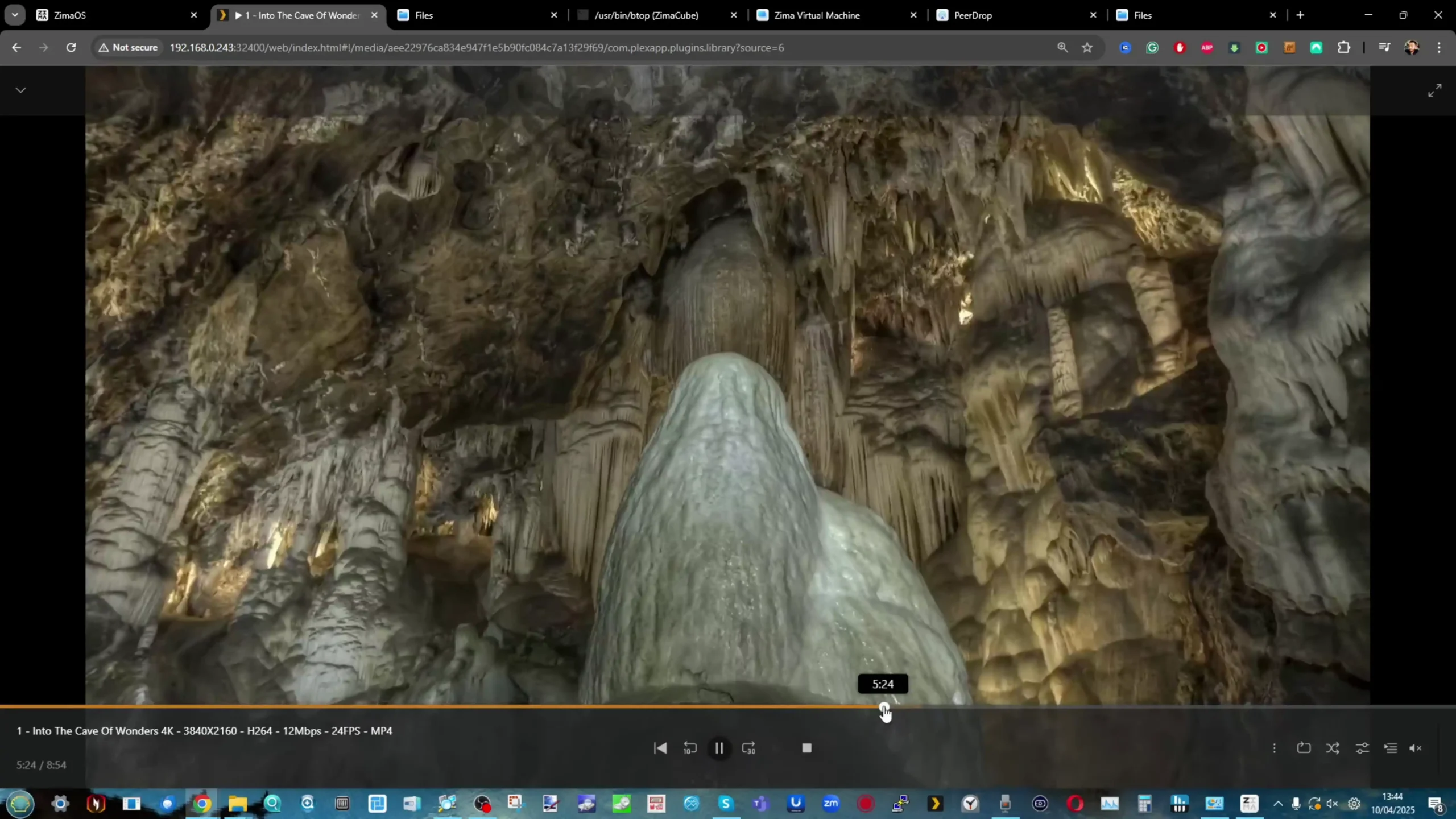
Popular applications like Plex, Jellyfin, Stable Diffusion, and more are available by default, with the option to add third-party sources for broader container variety. Behind the scenes, the system leverages containerization frameworks to handle resource isolation and volume mappings, but much of this complexity is hidden from the end user.

Application setup is further eased by pre-configured defaults such as port assignments, directory structures, and even PUID/PGID settings, reducing friction for non-technical users. For those with more experience, ZimaOS still allows you to tweak or override these settings manually. Notably, ZimaOS also includes a basic virtualization interface that supports downloading and running lightweight VMs using prebuilt images.
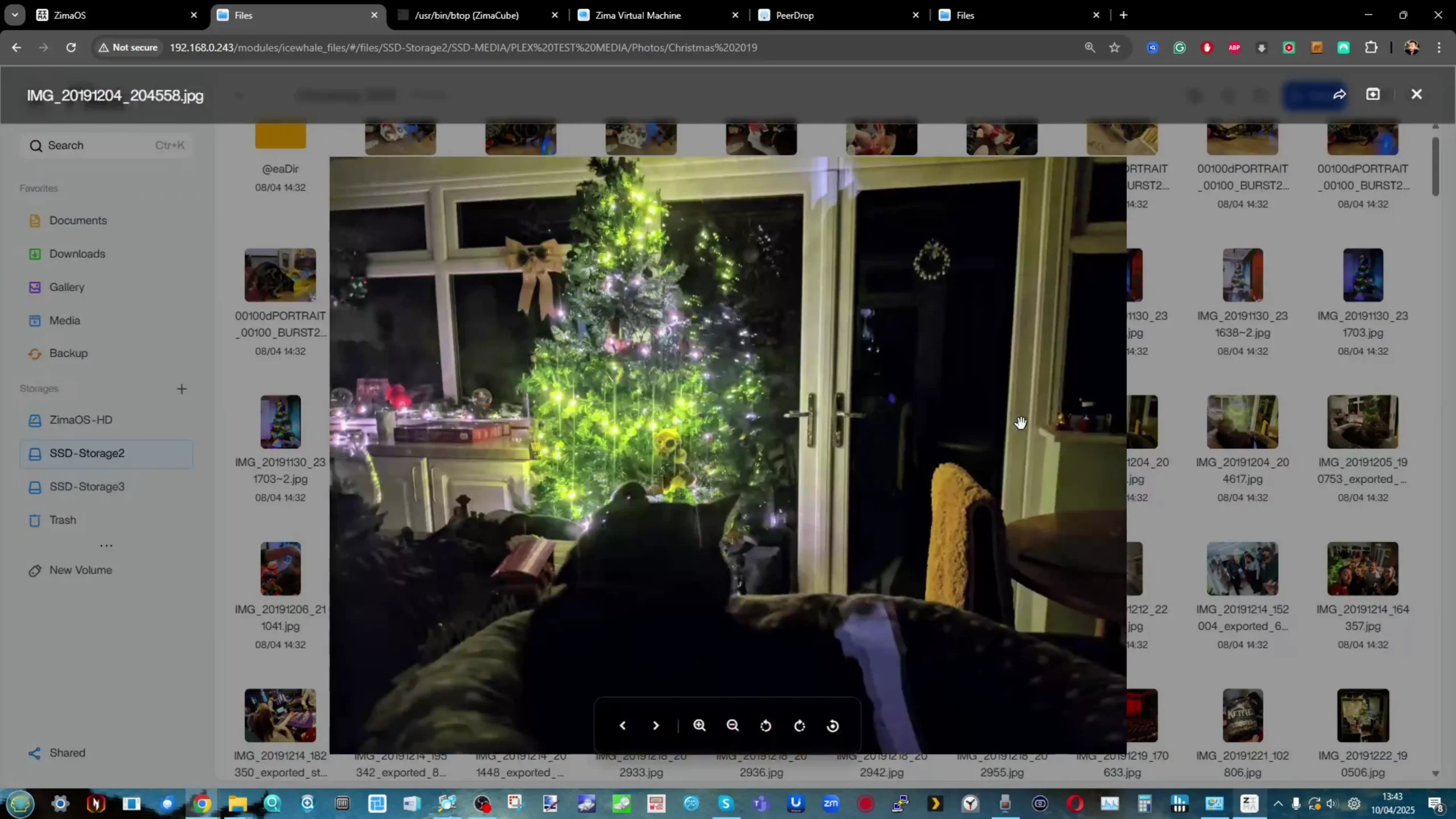
While this feature is better suited to the higher-specced ZimaCube due to memory and cooling constraints, its presence on the ZimaBoard 2 is still a nice touch and shows that the OS is aiming to grow into a more comprehensive platform. Overall, the application and container ecosystem here punches above its weight, especially considering the resource constraints of the board itself.
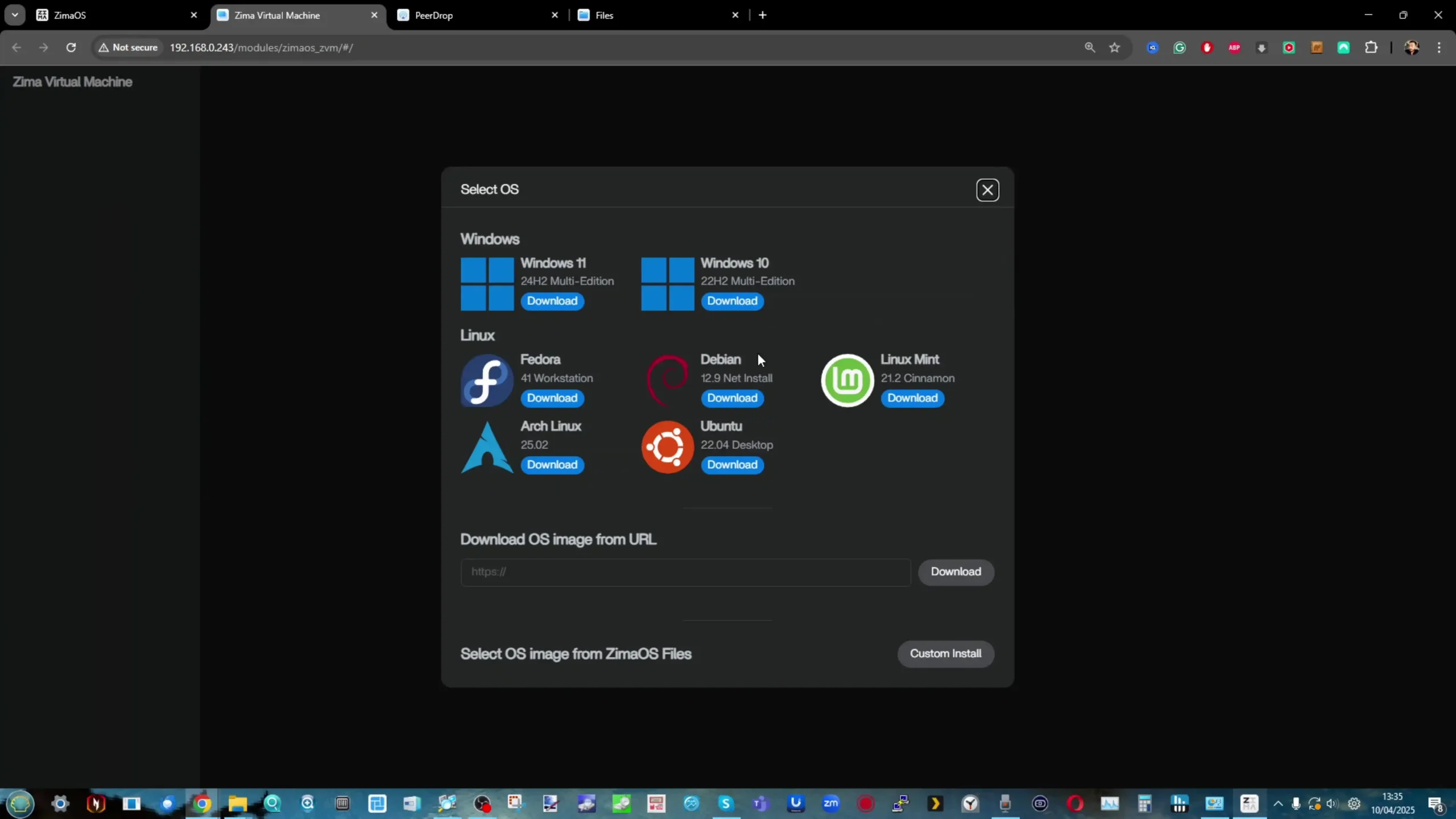
In terms of storage and file sharing, ZimaOS delivers a capable if somewhat minimal feature set that prioritizes simplicity over enterprise-style depth. Users can create RAID groups—a new feature compared to earlier CasaOS iterations—manage individual drives, and set up file-level sharing using standard protocols like SMB.
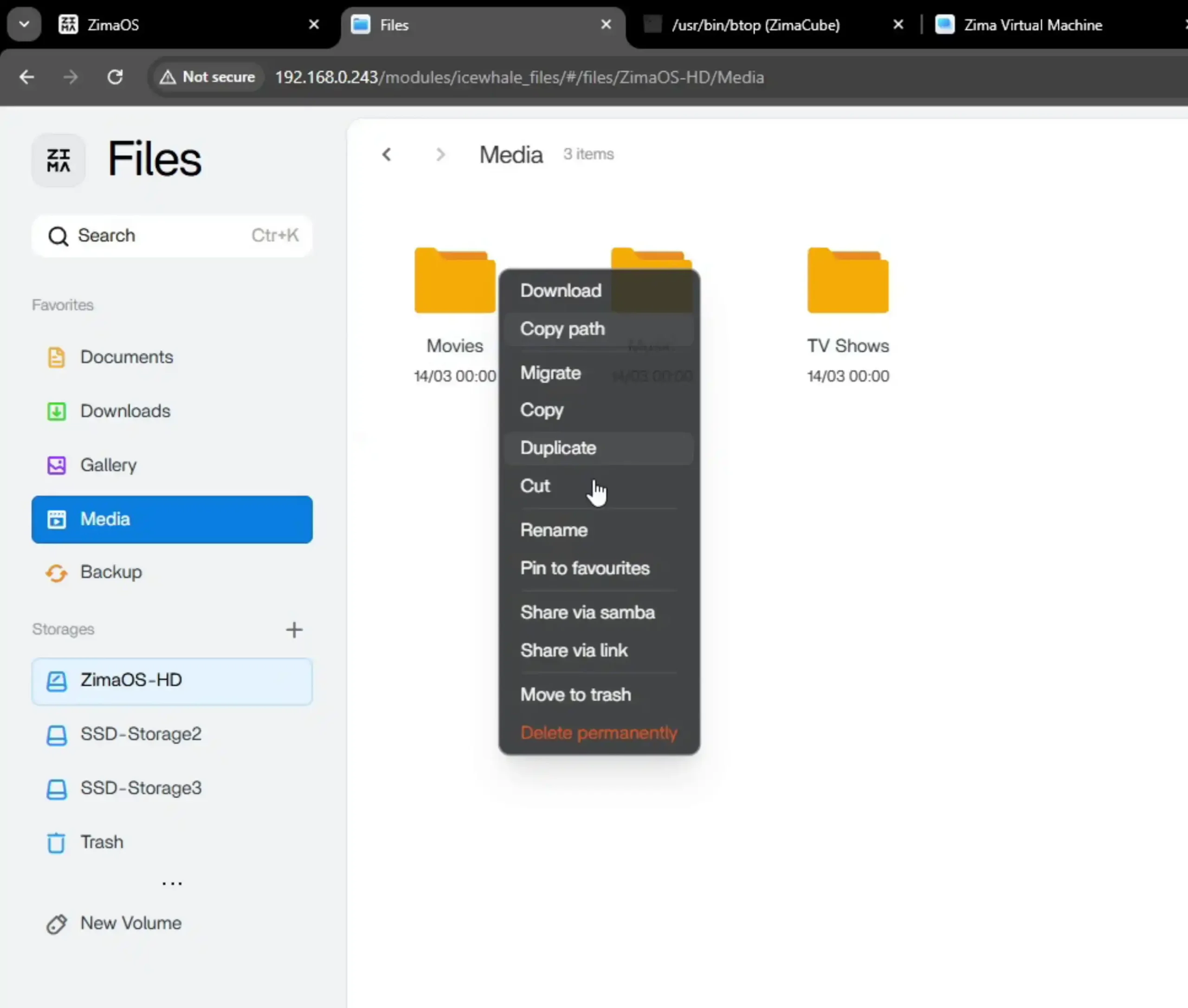
The file manager, accessible through the main dashboard, allows for browsing, copying, and sharing content in a familiar web-based interface. Integration with IceWhale’s own client tool enables a peer-to-peer feature called “peerdrop,” which links multiple Zima-based systems or client devices (like phones and laptops) for rapid syncing and data exchange.
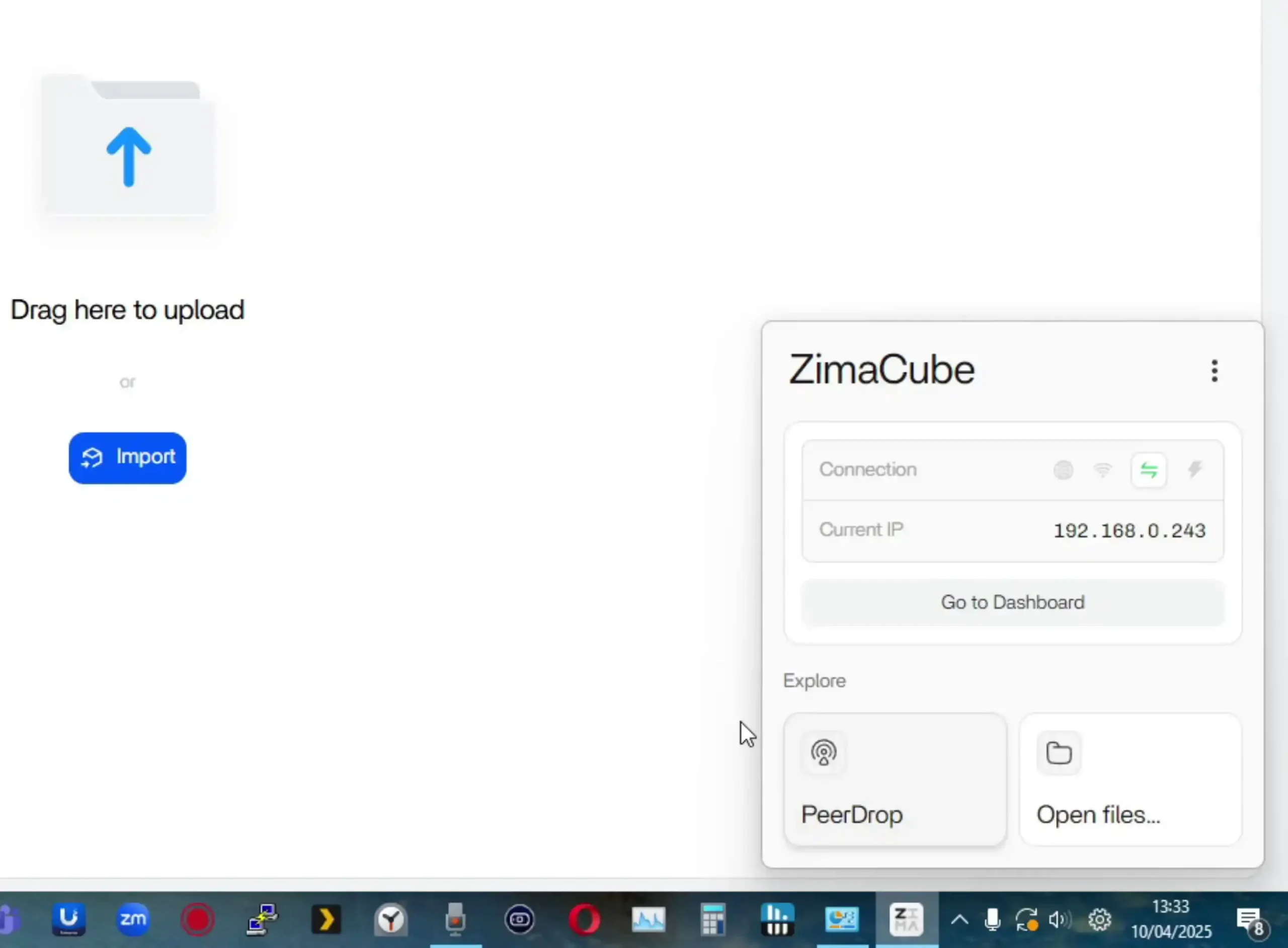
This is especially useful for users who want an easy method to upload media, backup devices, or move files between multiple systems on a local network. Remote access can be enabled through a simple relay-based mechanism, which generates shareable links for specific files or folders, complete with read/write controls. While more advanced access control, encryption, or user quotas are not present in this build, the essentials for home or small office use are here and function as expected.
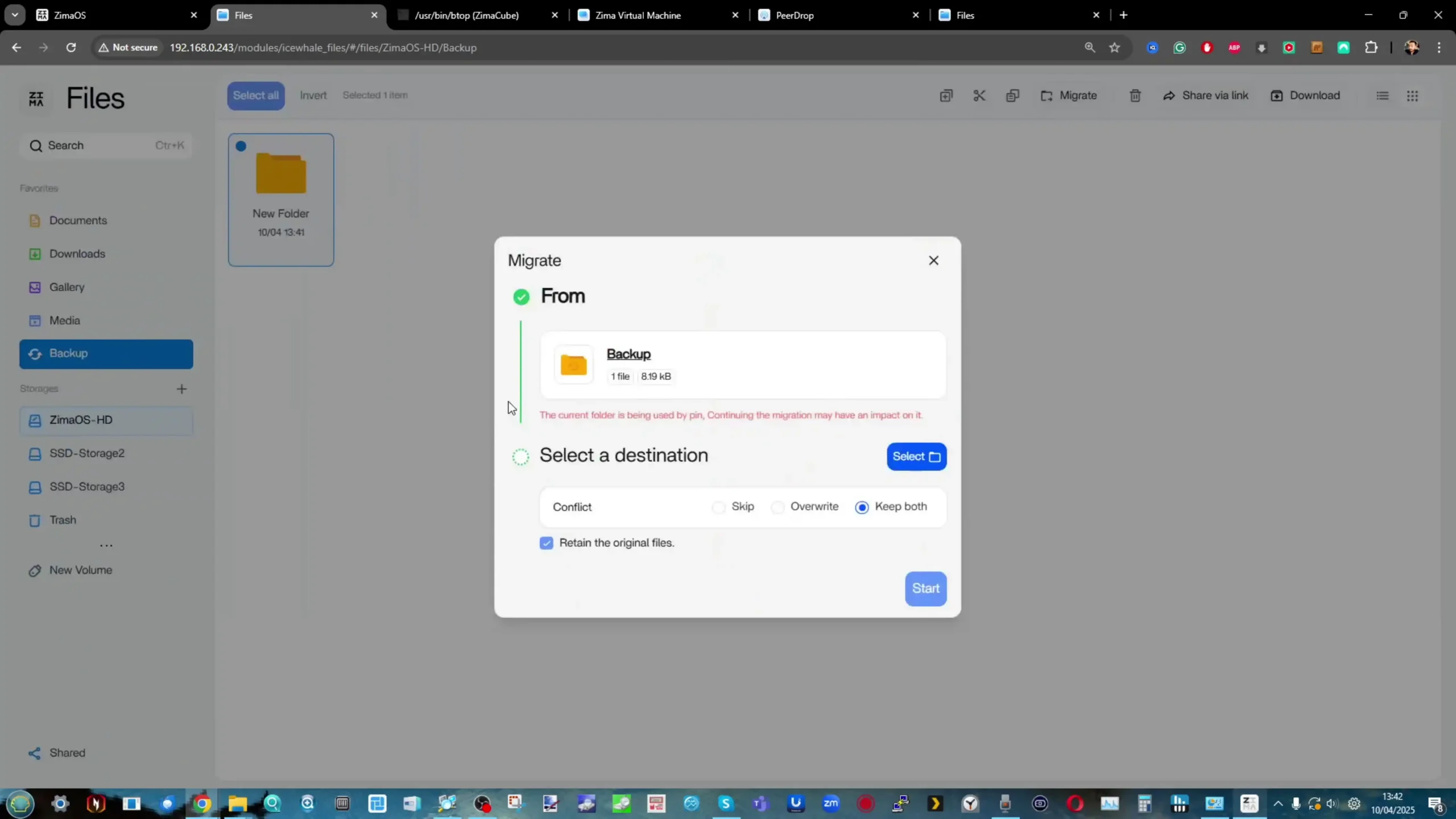
Cloud integration is also available, allowing the addition of third-party storage such as Google Drive or Dropbox for backup or syncing purposes. Though ZimaOS doesn’t try to replace full-fledged NAS operating systems in terms of depth, it successfully delivers the features most users will need, and its lightweight design ensures responsiveness even on modest hardware like the ZimaBoard 2.
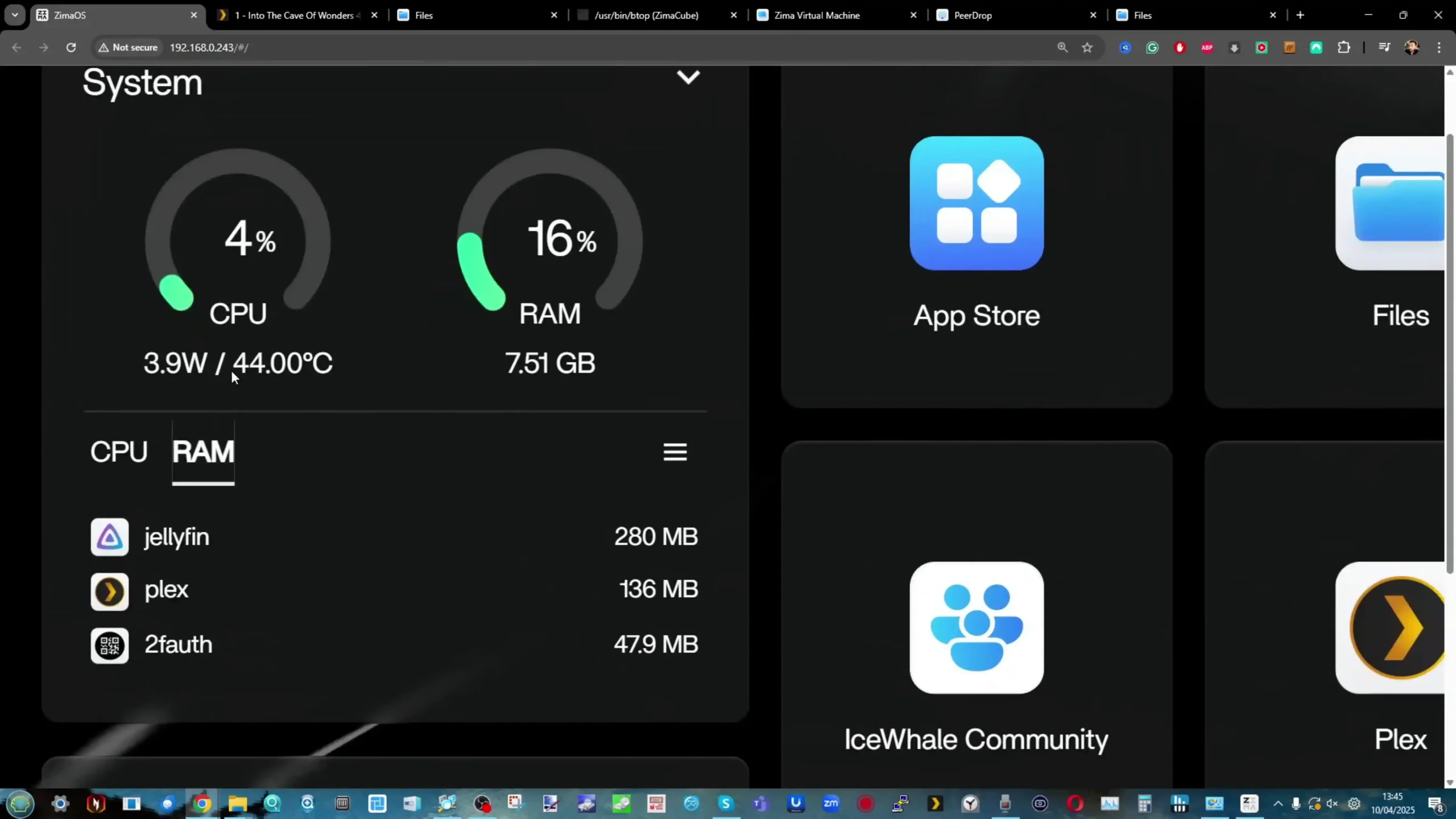
The ZimaBoard 2 is a competent and thoughtfully assembled single-board server that builds meaningfully on IceWhale’s earlier efforts, especially the original ZimaBoard and the ZimaBlade. Its design clearly targets users who want more flexibility and performance than traditional ARM-based boards can offer, but who also value power efficiency, silence, and a small footprint. The use of an Intel N150 CPU, 8GB of LPDDR5x memory, dual 2.5GbE ports, and a PCIe 3.0 x4 slot makes it viable for a variety of home server roles—from basic NAS and smart home coordination to lightweight container hosting and local media streaming. Features like onboard SATA, USB 3.1, and a DisplayPort connection further add to its utility. However, there are hardware limitations that may affect long-term suitability for advanced deployments. The soldered RAM cannot be upgraded, and the internal eMMC storage, while useful for initial setup, is too slow for OS-level responsiveness in more demanding use cases. Passive cooling, while appreciated for silence, also imposes some thermal limitations depending on the deployment environment.
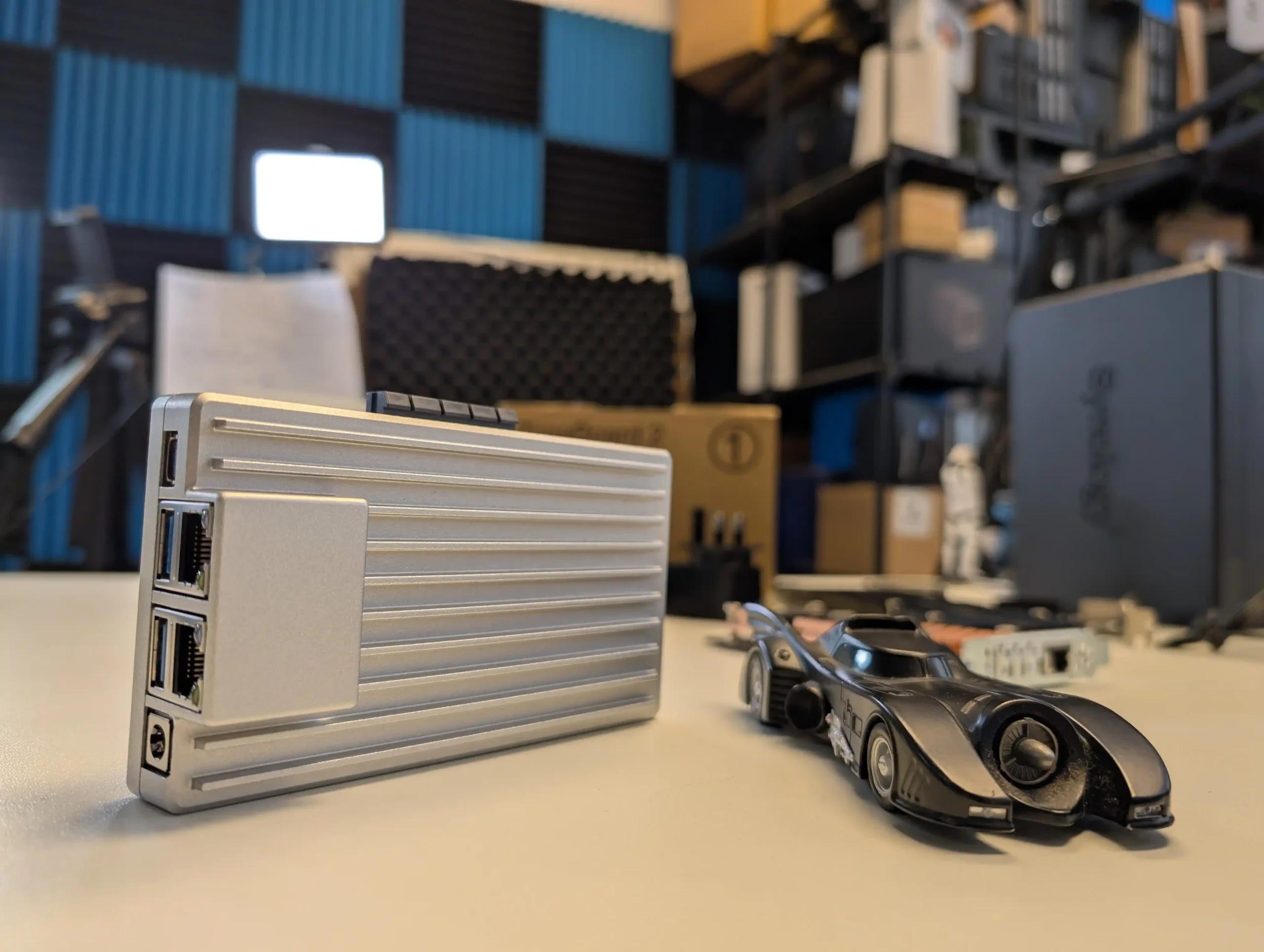
On the software side, ZimaOS offers a decent out-of-the-box experience that caters to users with minimal technical background. It handles core tasks like application deployment, file sharing, and system monitoring without requiring advanced configuration, and its Docker-based App Store simplifies access to popular tools. For more experienced users, the system supports third-party OS installation, which is likely how many will ultimately use the ZimaBoard 2. Still, as a bundled solution, ZimaOS has matured significantly and now presents itself as a lightweight, capable, and non-intrusive platform for those who prefer to get started immediately. In the broader context of DIY server hardware, ZimaBoard 2 occupies a middle ground: more powerful and modular than Raspberry Pi-class systems, yet more constrained than full x86 mini PCs or enthusiast-grade NAS hardware. For those who understand and accept these trade-offs, and are willing to plan around its limitations, the ZimaBoard 2 offers a reliable and flexible foundation for compact, energy-efficient computing at the edge.
| PROs of the Zimaboard 2 | CONs of the Zimaboard 2 |
|
|
NOTE – You can visit the Zimaboard 2 Crowdfunding Page (live from 10:30AM ET 22nd April 2025) by clicking the banner below. The entry price for early backers is $169, but that will revert to $179 (and $239 for a scaled-up storage and memory version). I DO NOT receive any kind of affiliate commission or sponsorship for this review (and this review, like all reviews at NASCompares, was done without the brand in question’s interference or input). You can use the link HERE to see the campaign for yourself and/or click the banner below:
 SUBSCRIBE TO OUR NEWSLETTER
SUBSCRIBE TO OUR NEWSLETTER 
 Join Inner Circle
Join Inner Circle  Subscribe
Subscribe
This description contains links to Amazon. These links will take you to some of the products mentioned in today's content. As an Amazon Associate, I earn from qualifying purchases. Visit the NASCompares Deal Finder to find the best place to buy this device in your region, based on Service, Support and Reputation - Just Search for your NAS Drive in the Box Below
 Need Help?
Where possible (and where appropriate) please provide as much information about your requirements, as then I can arrange the best answer and solution to your needs. Do not worry about your e-mail address being required, it will NOT be used in a mailing list and will NOT be used in any way other than to respond to your enquiry.
[contact-form-7]
Need Help?
Where possible (and where appropriate) please provide as much information about your requirements, as then I can arrange the best answer and solution to your needs. Do not worry about your e-mail address being required, it will NOT be used in a mailing list and will NOT be used in any way other than to respond to your enquiry.
[contact-form-7]
 Ko-fi or old school Paypal. Thanks!To find out more about how to support this advice service check HEREIf you need to fix or configure a NAS, check Fiver
Have you thought about helping others with your knowledge? Find Instructions Here
Ko-fi or old school Paypal. Thanks!To find out more about how to support this advice service check HEREIf you need to fix or configure a NAS, check Fiver
Have you thought about helping others with your knowledge? Find Instructions Here

|
 |